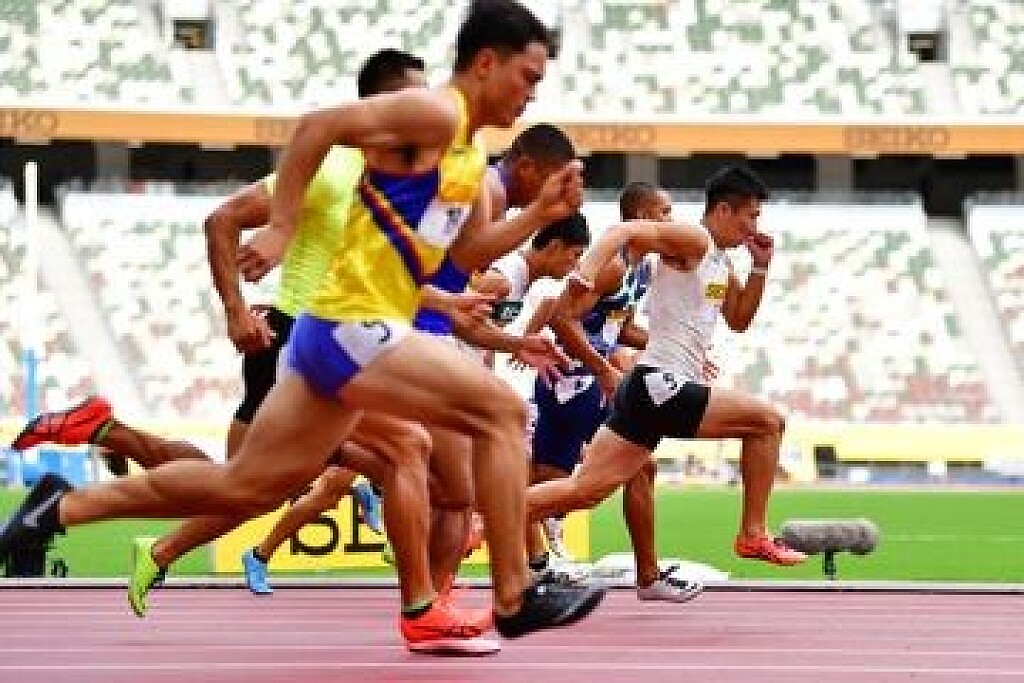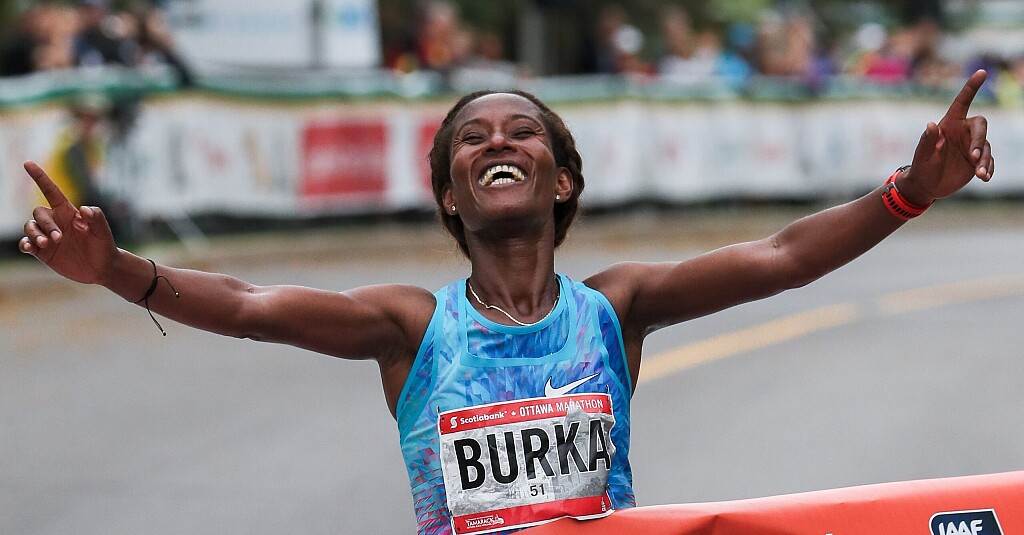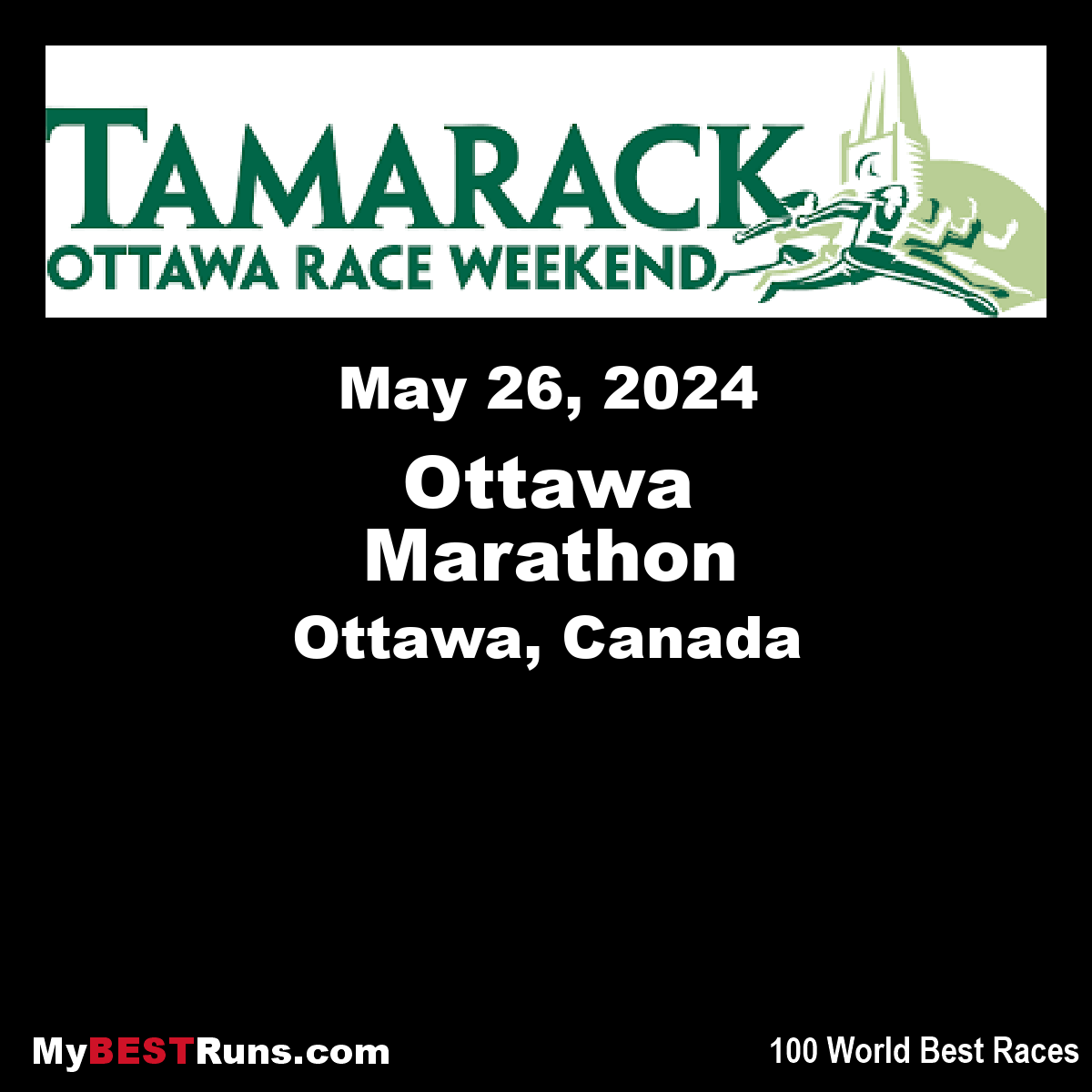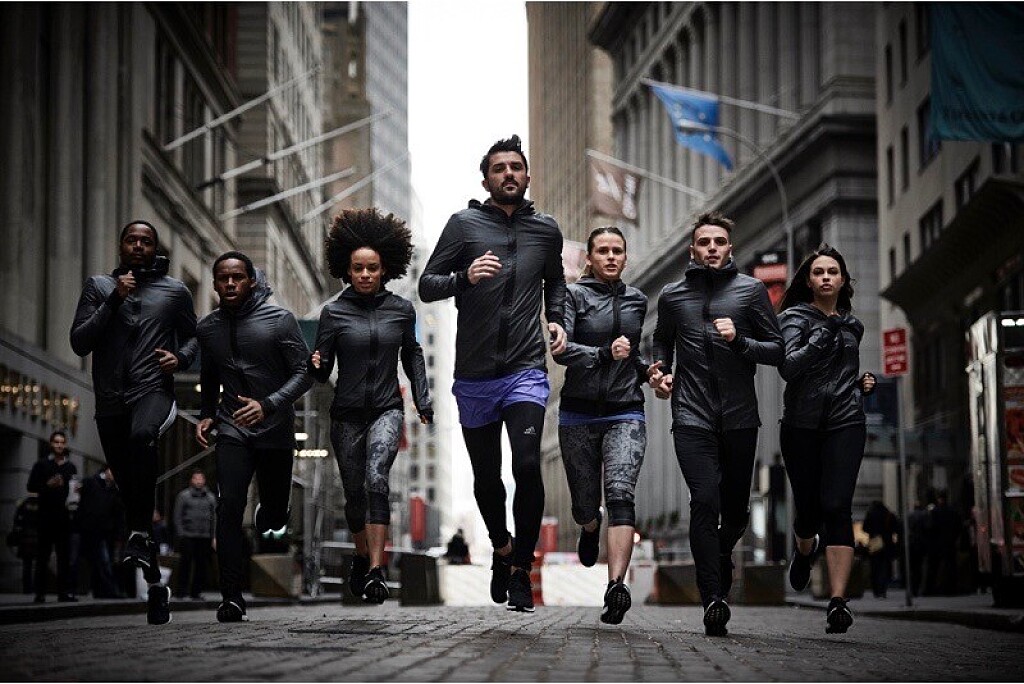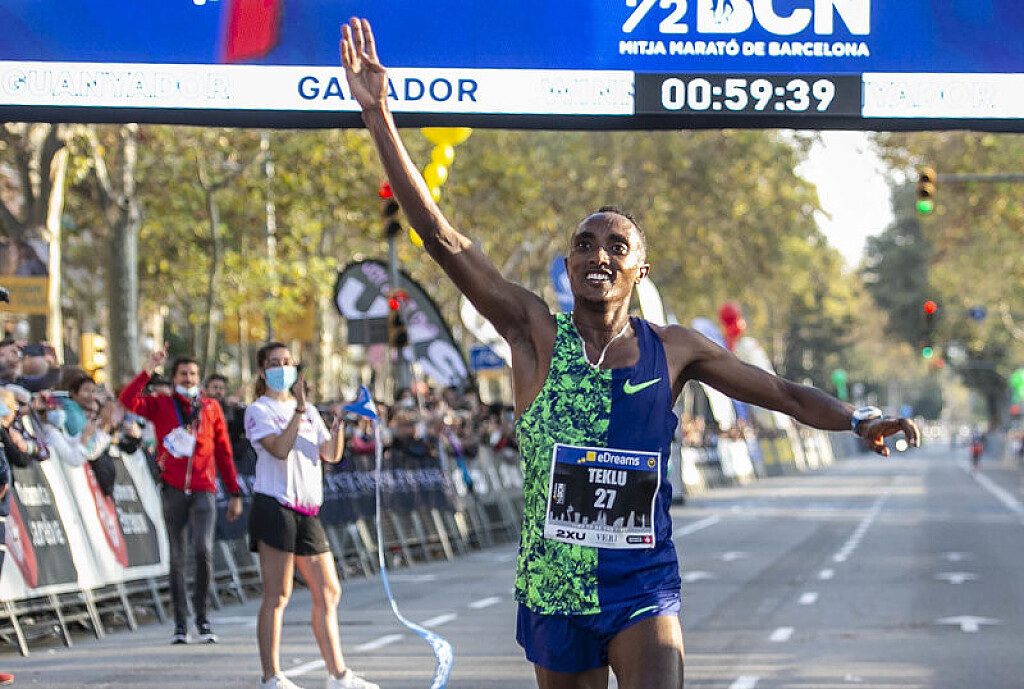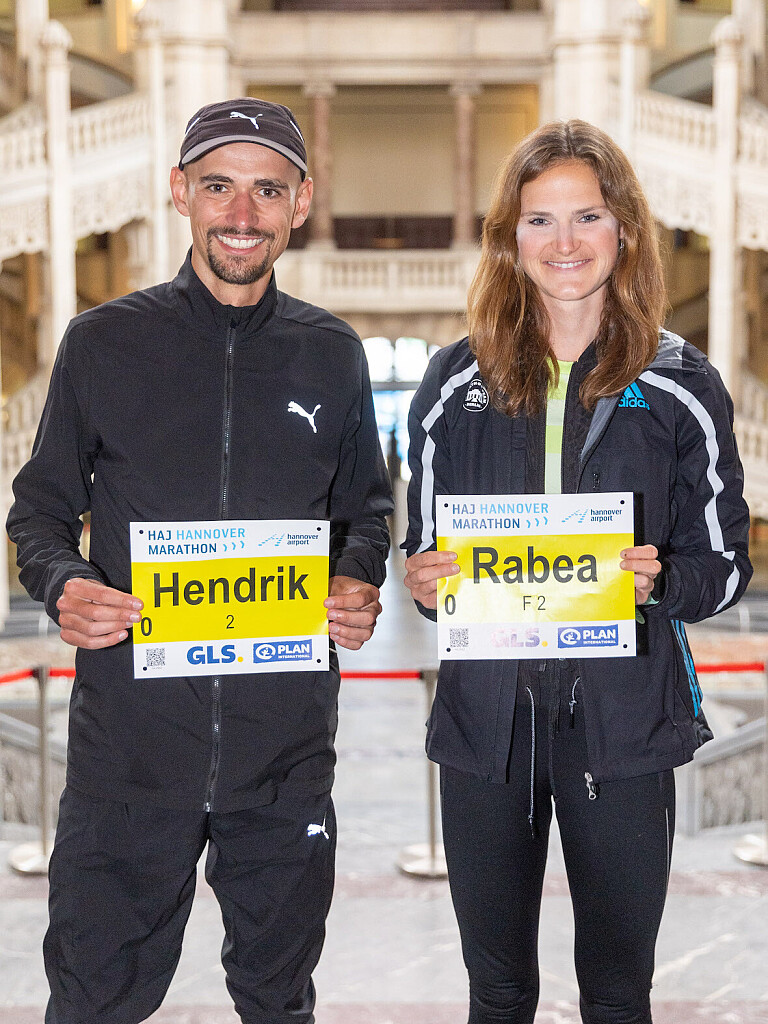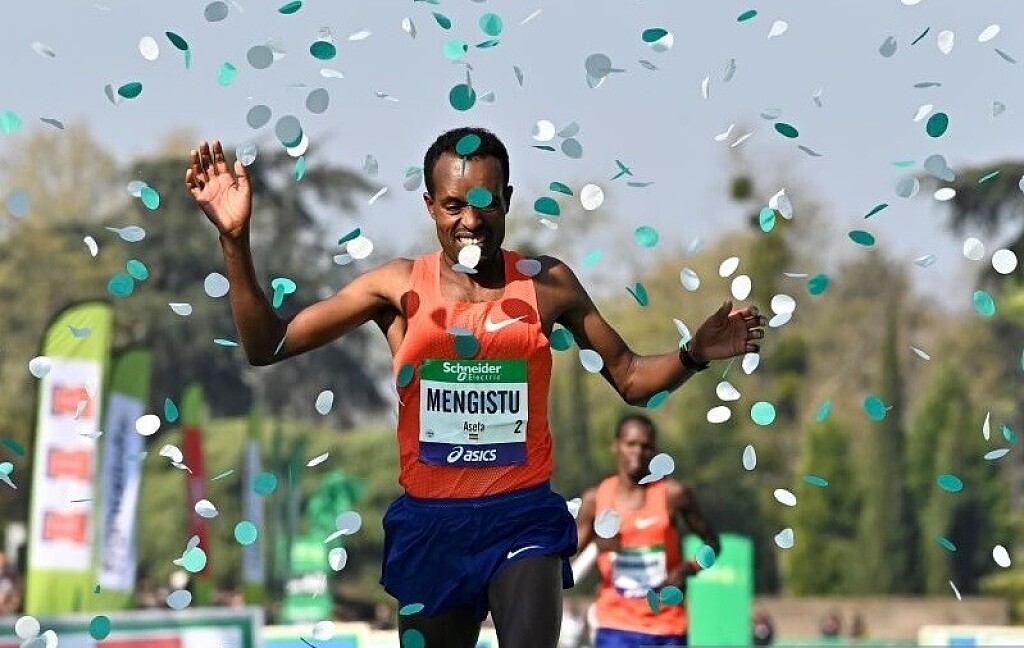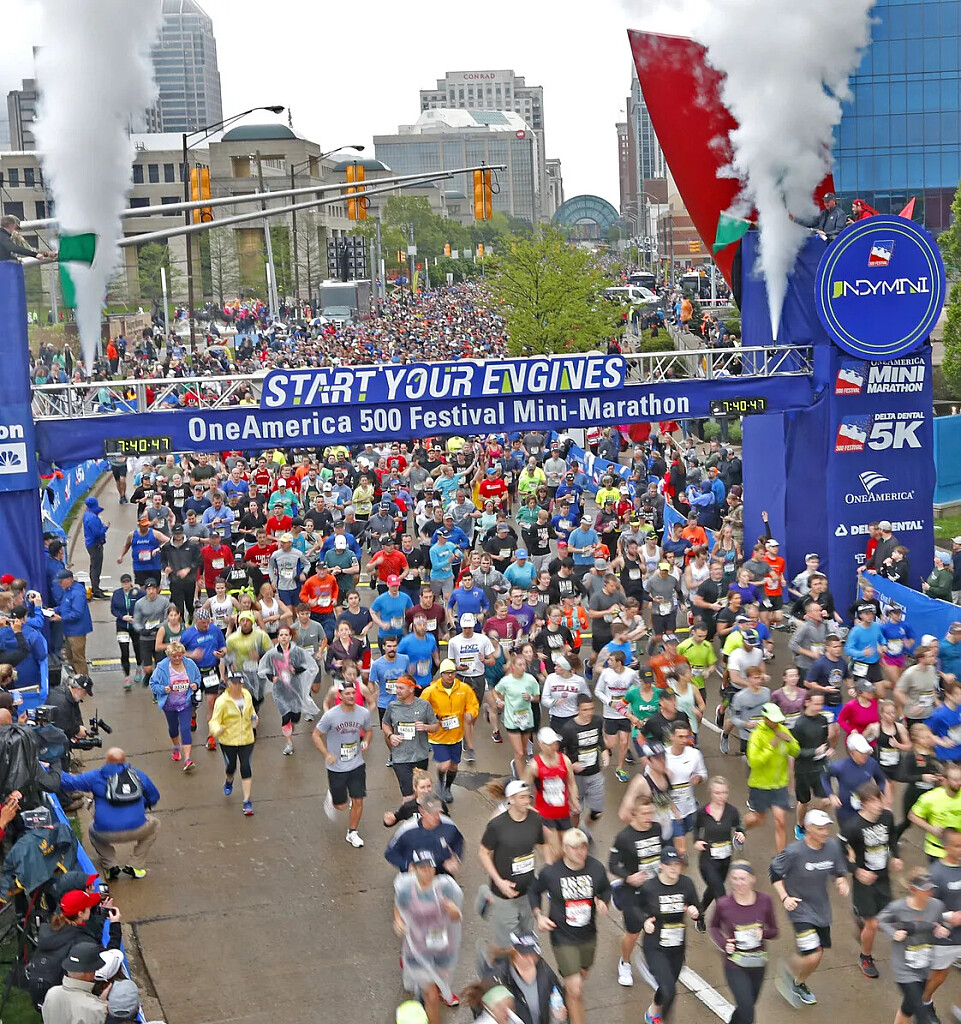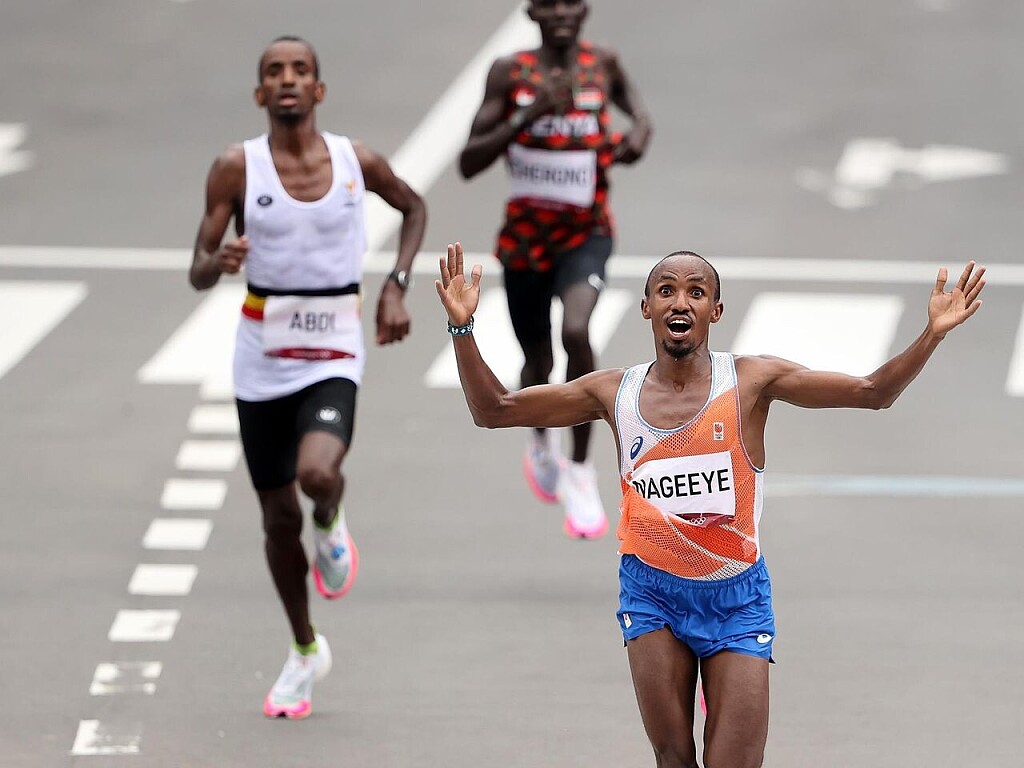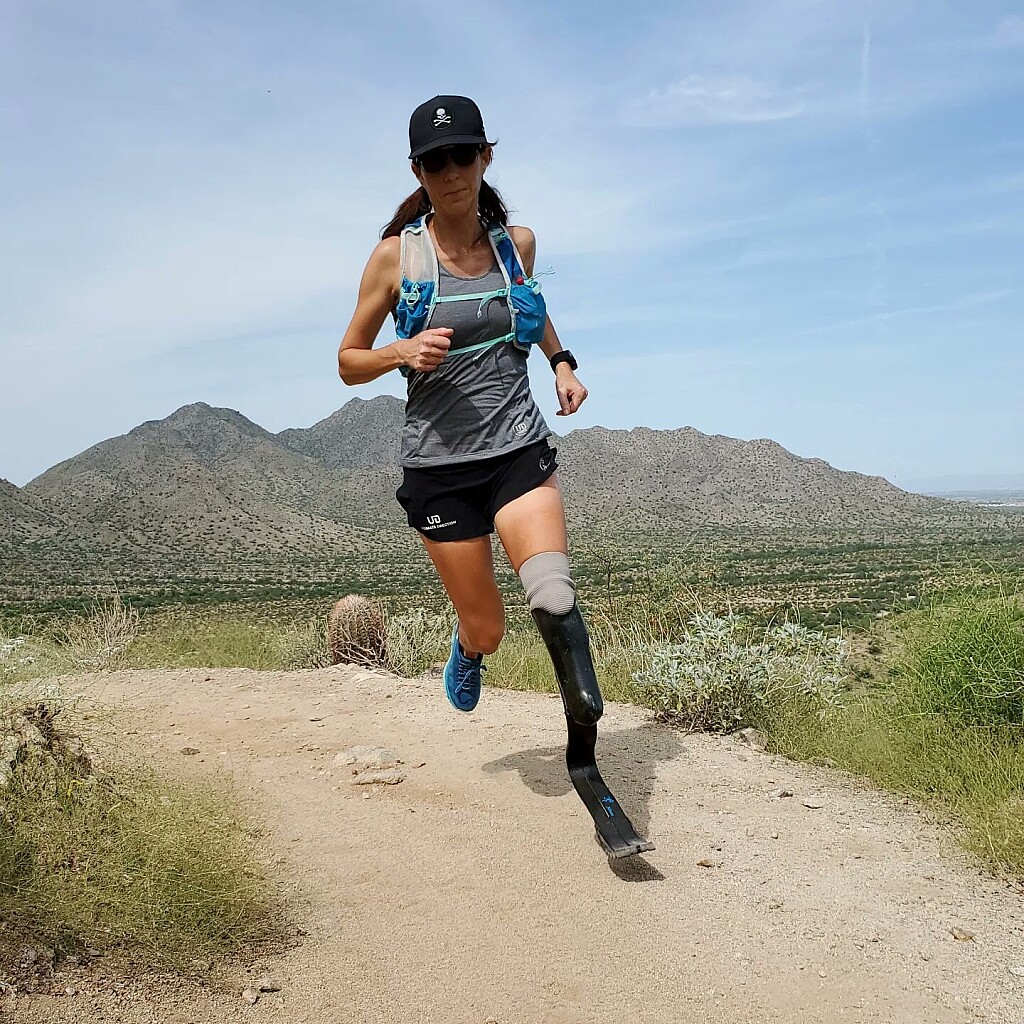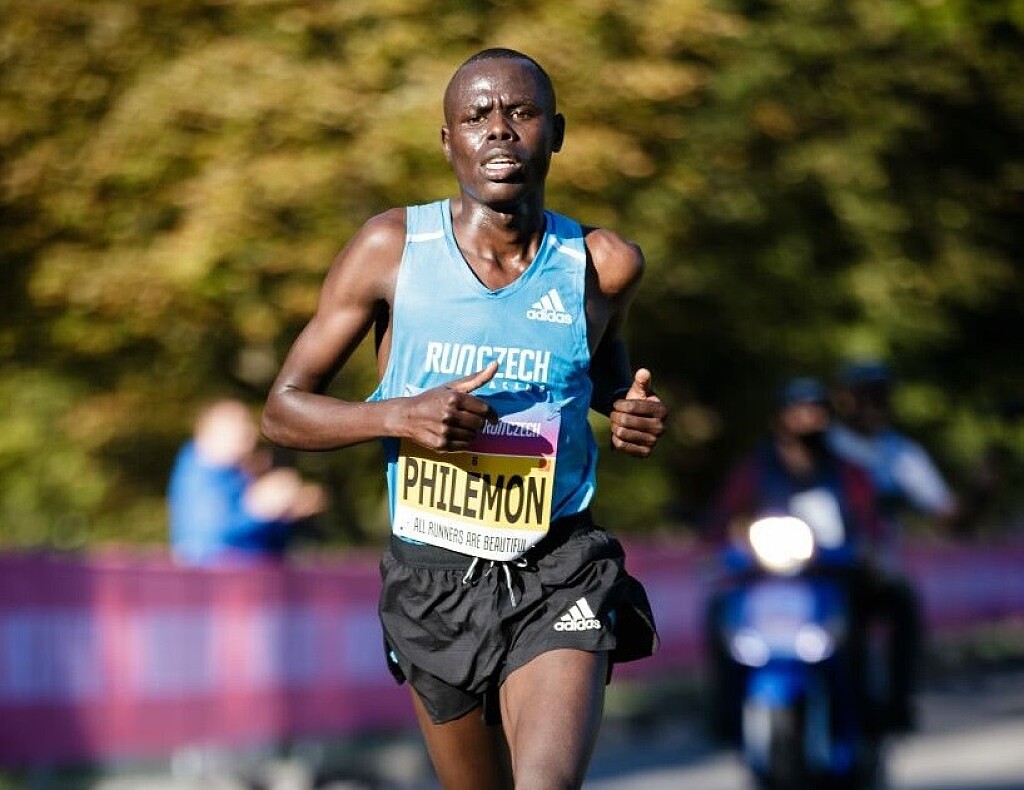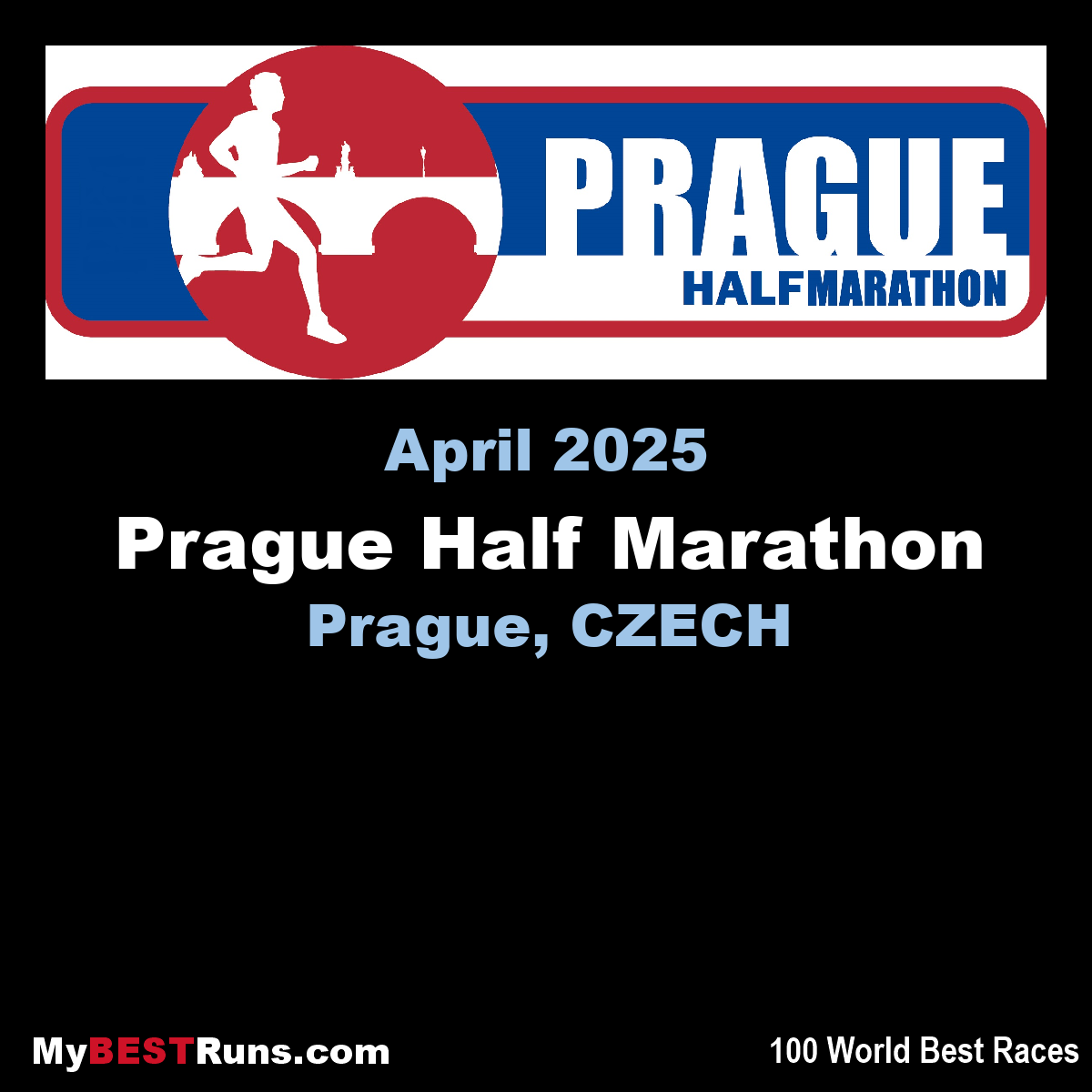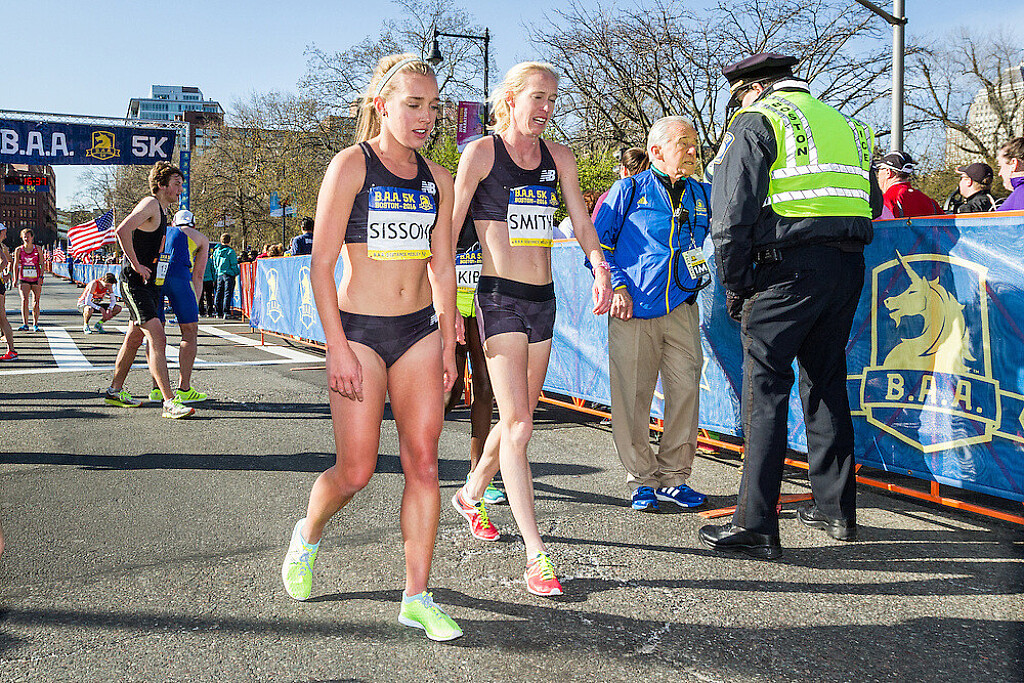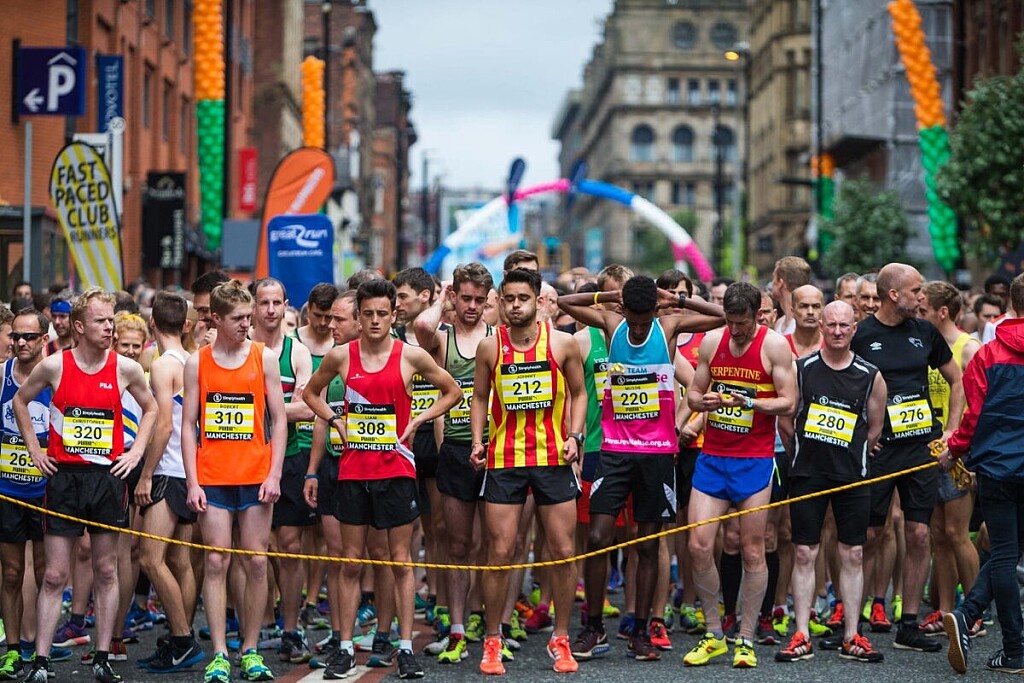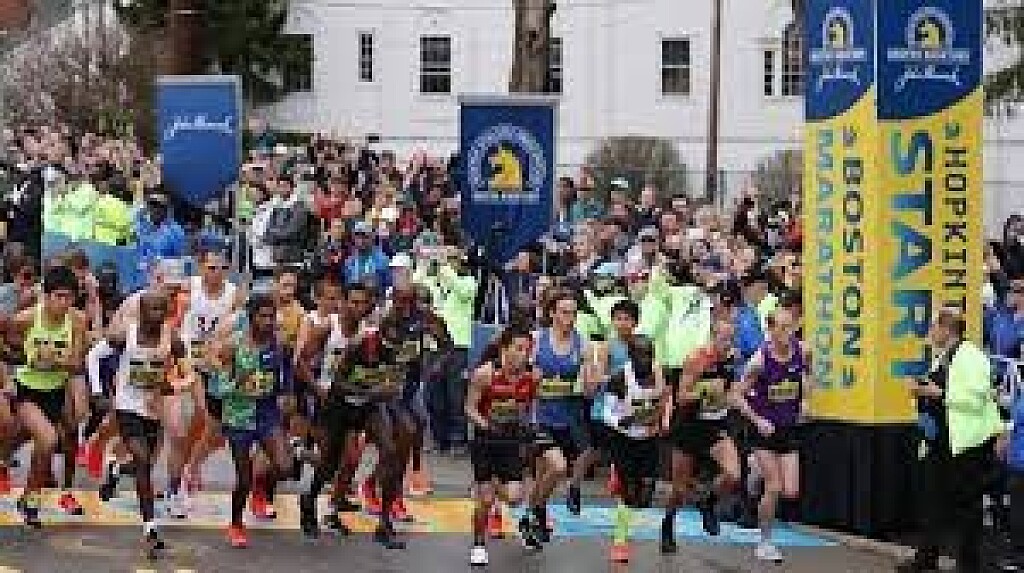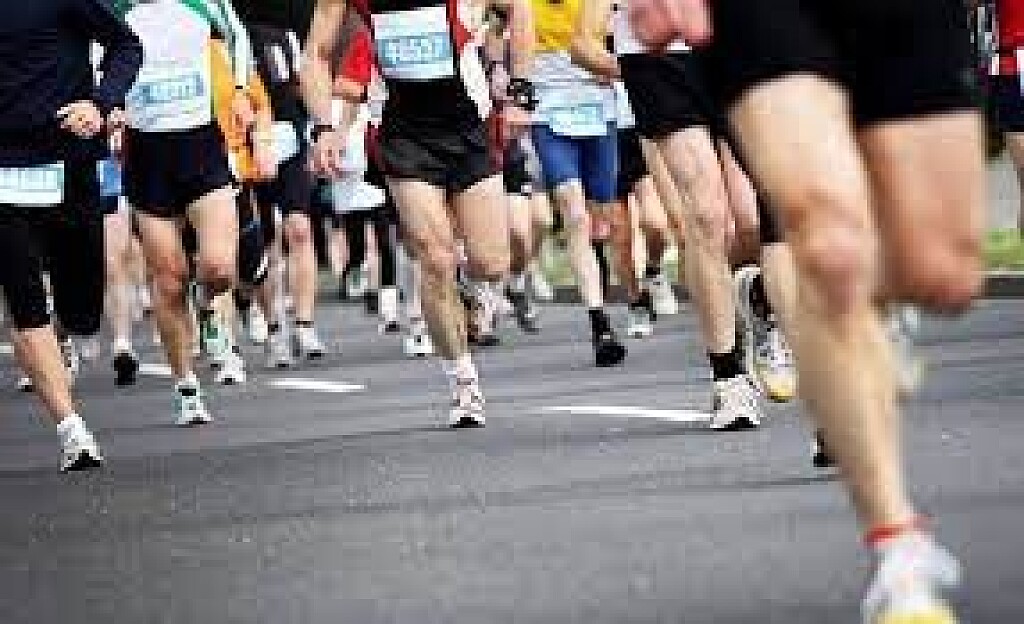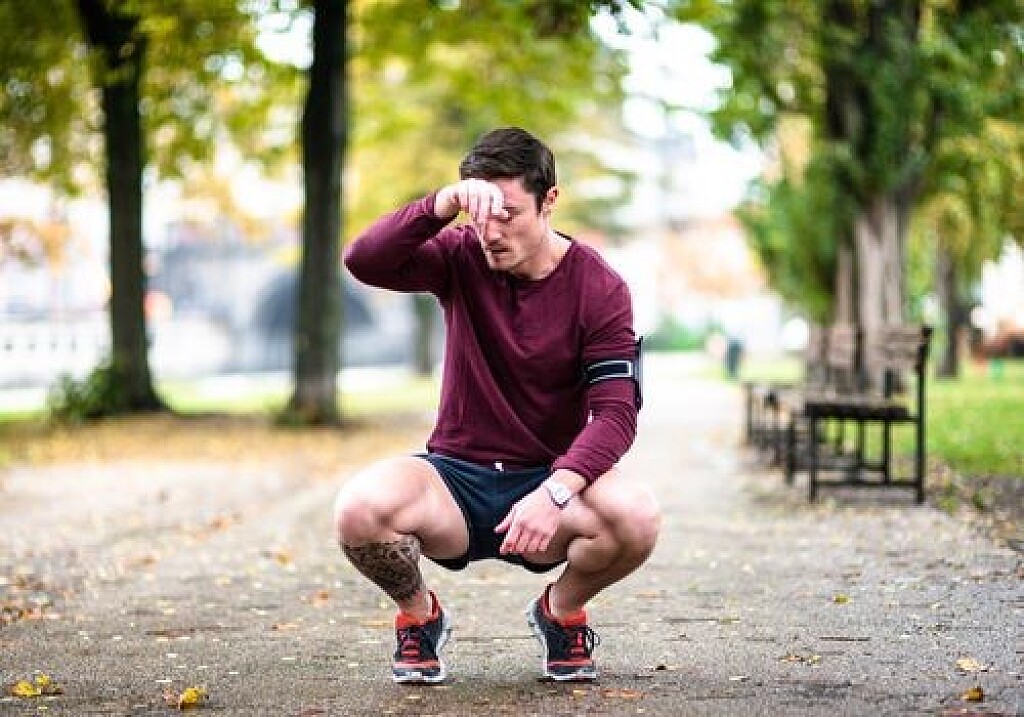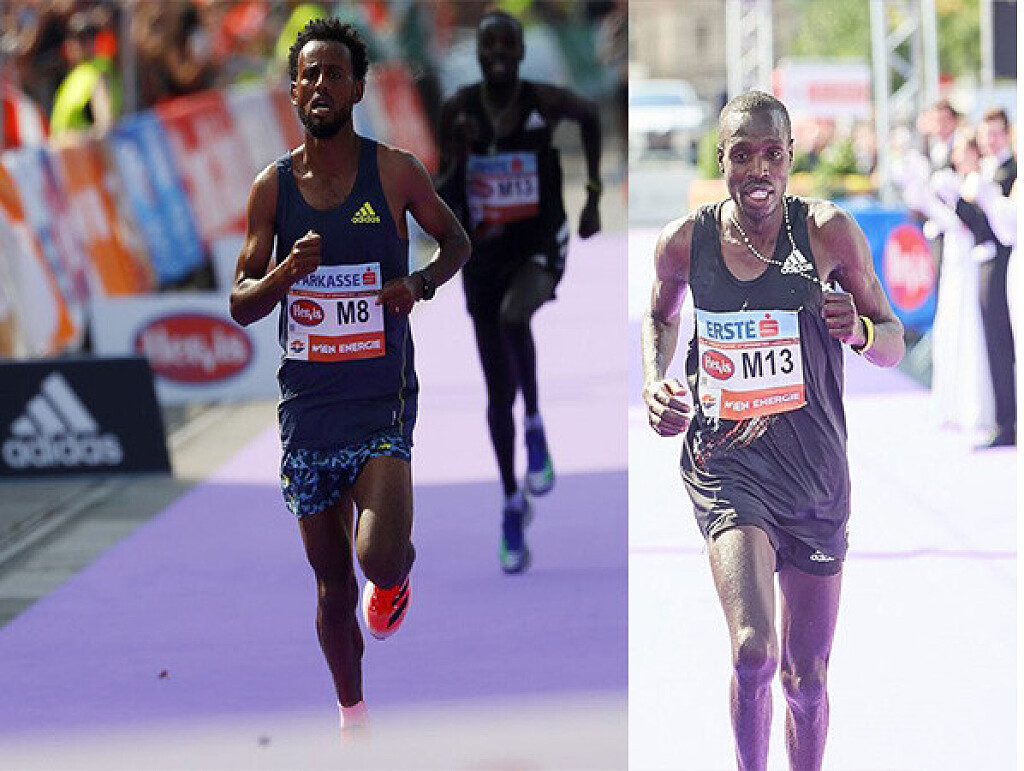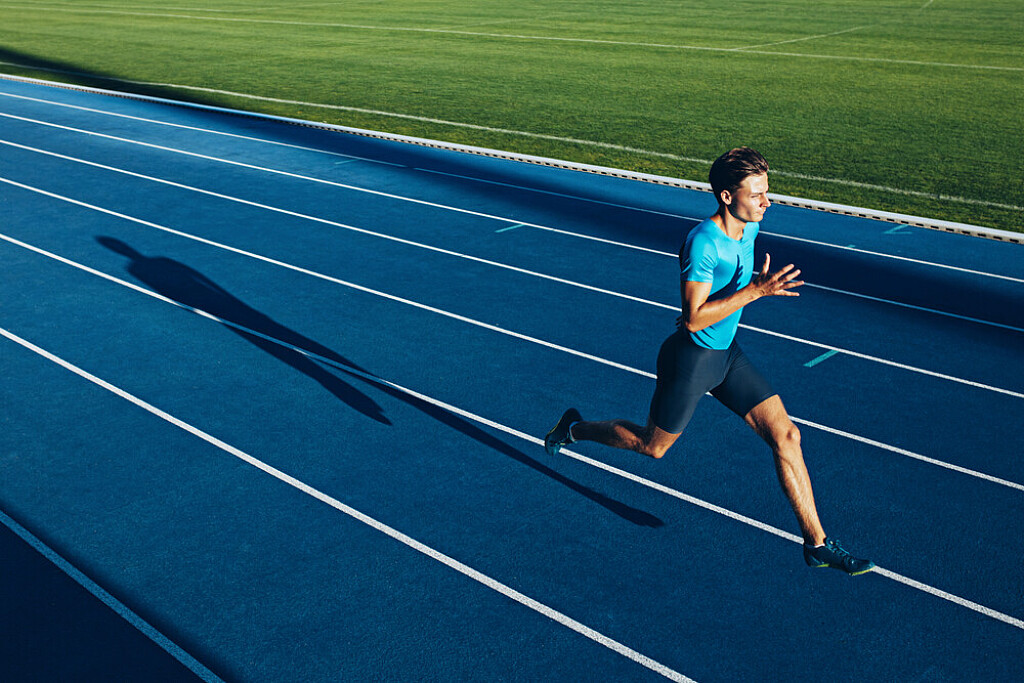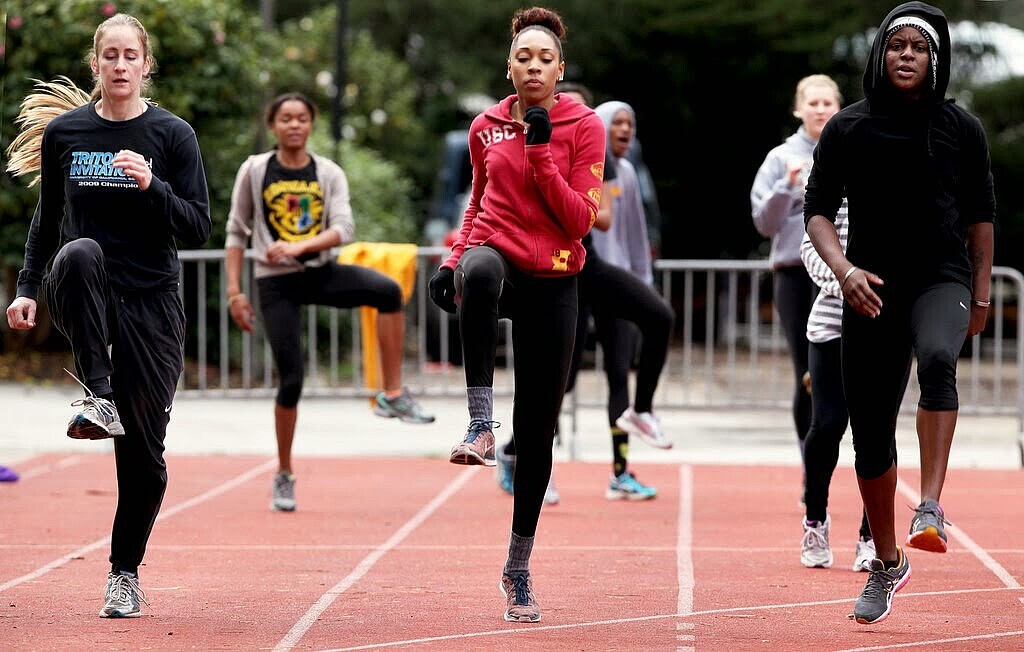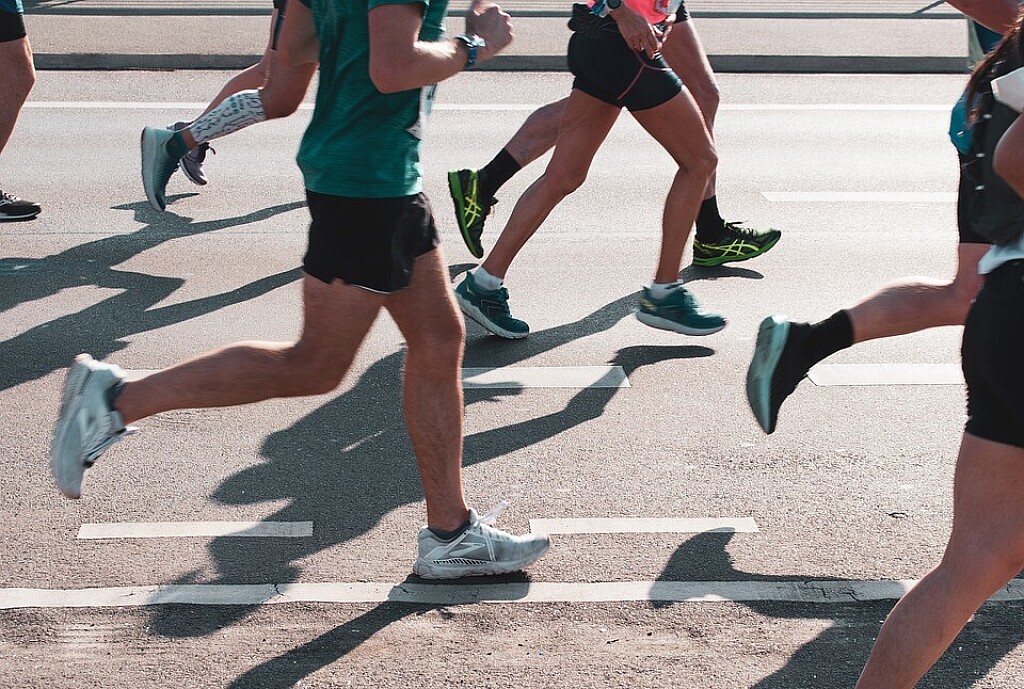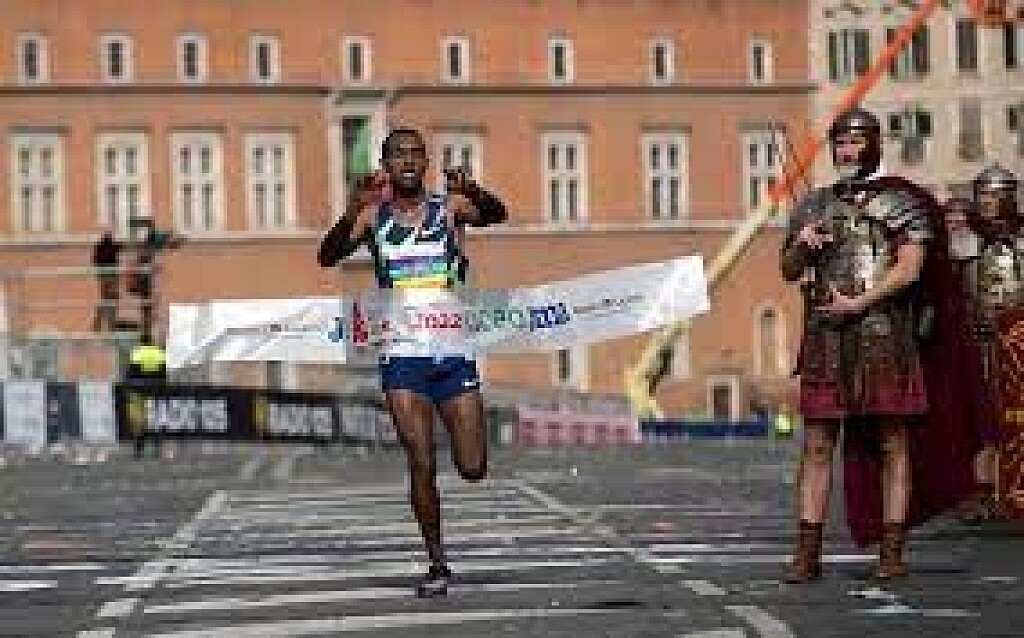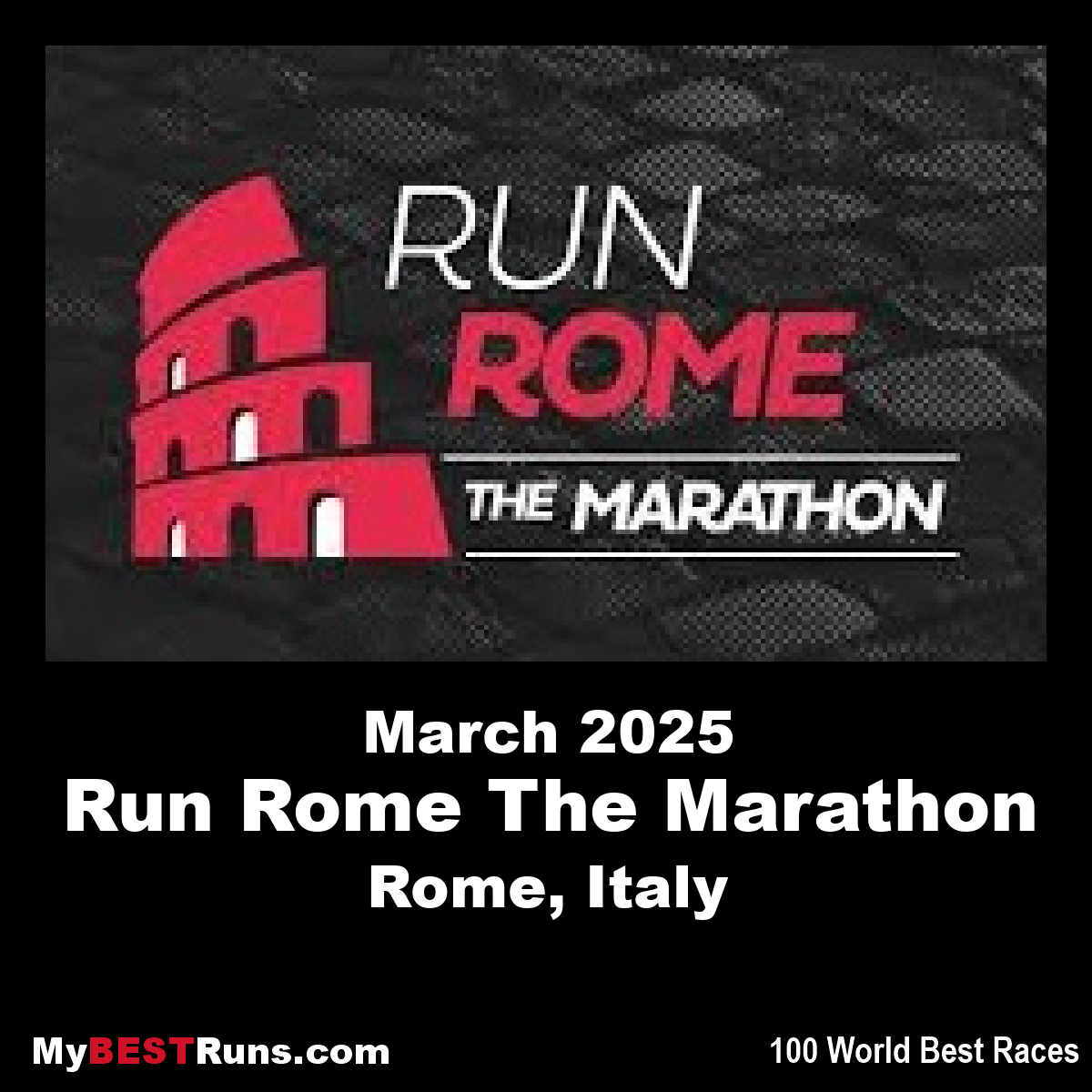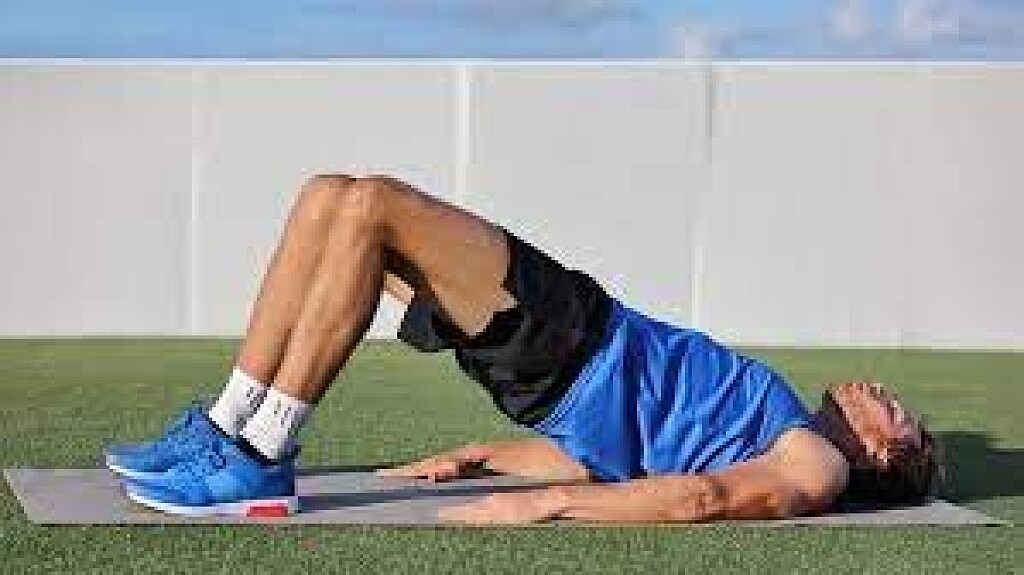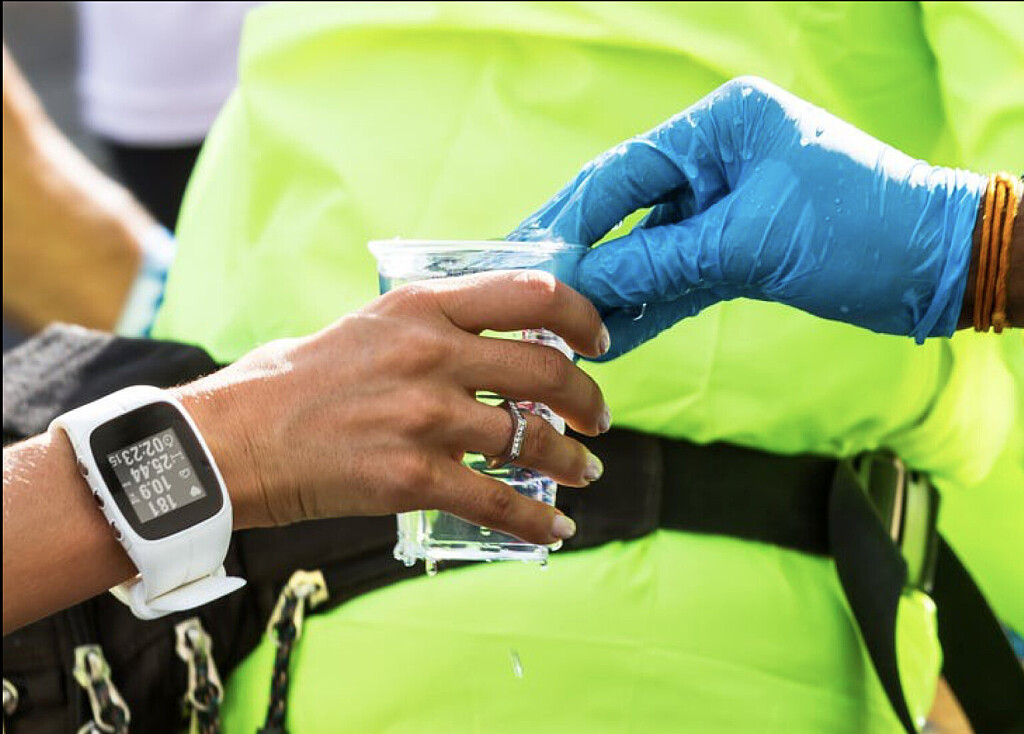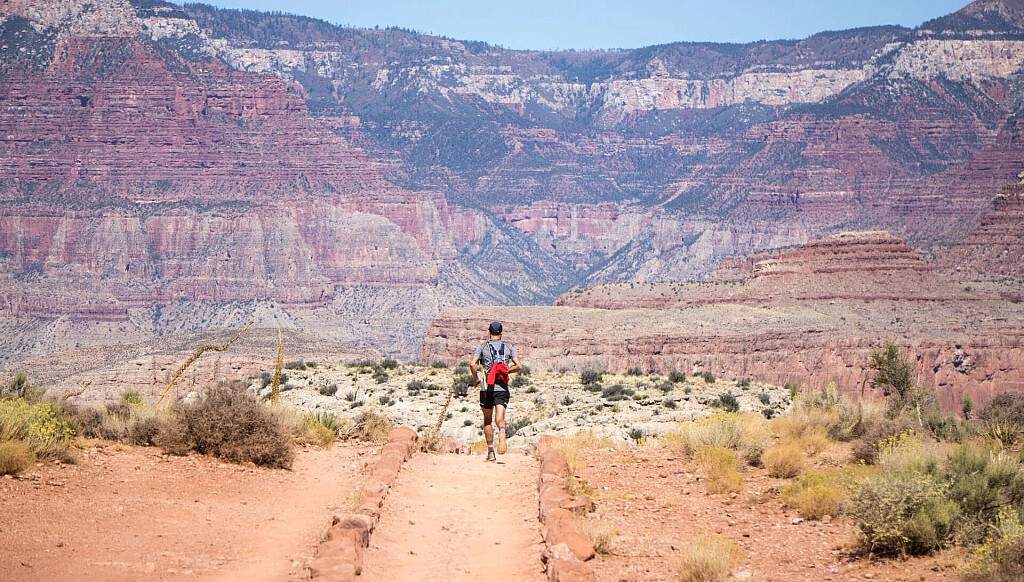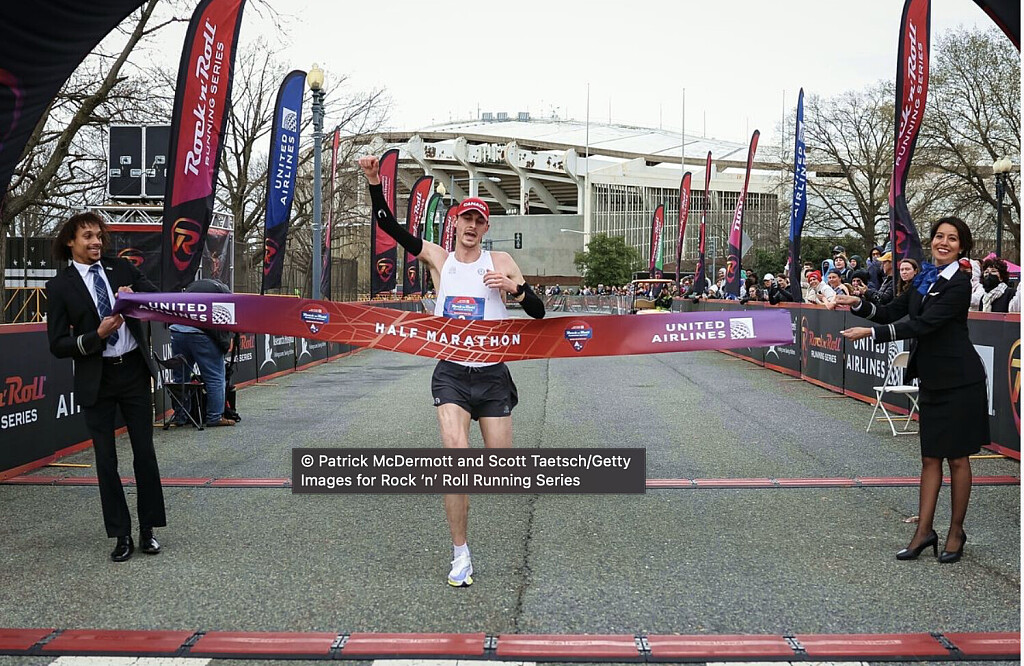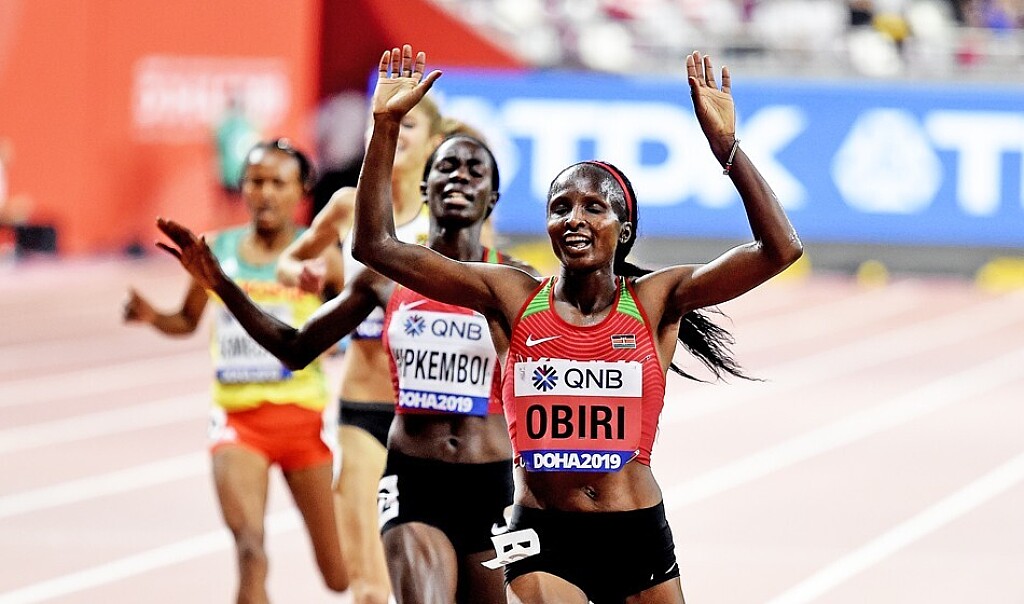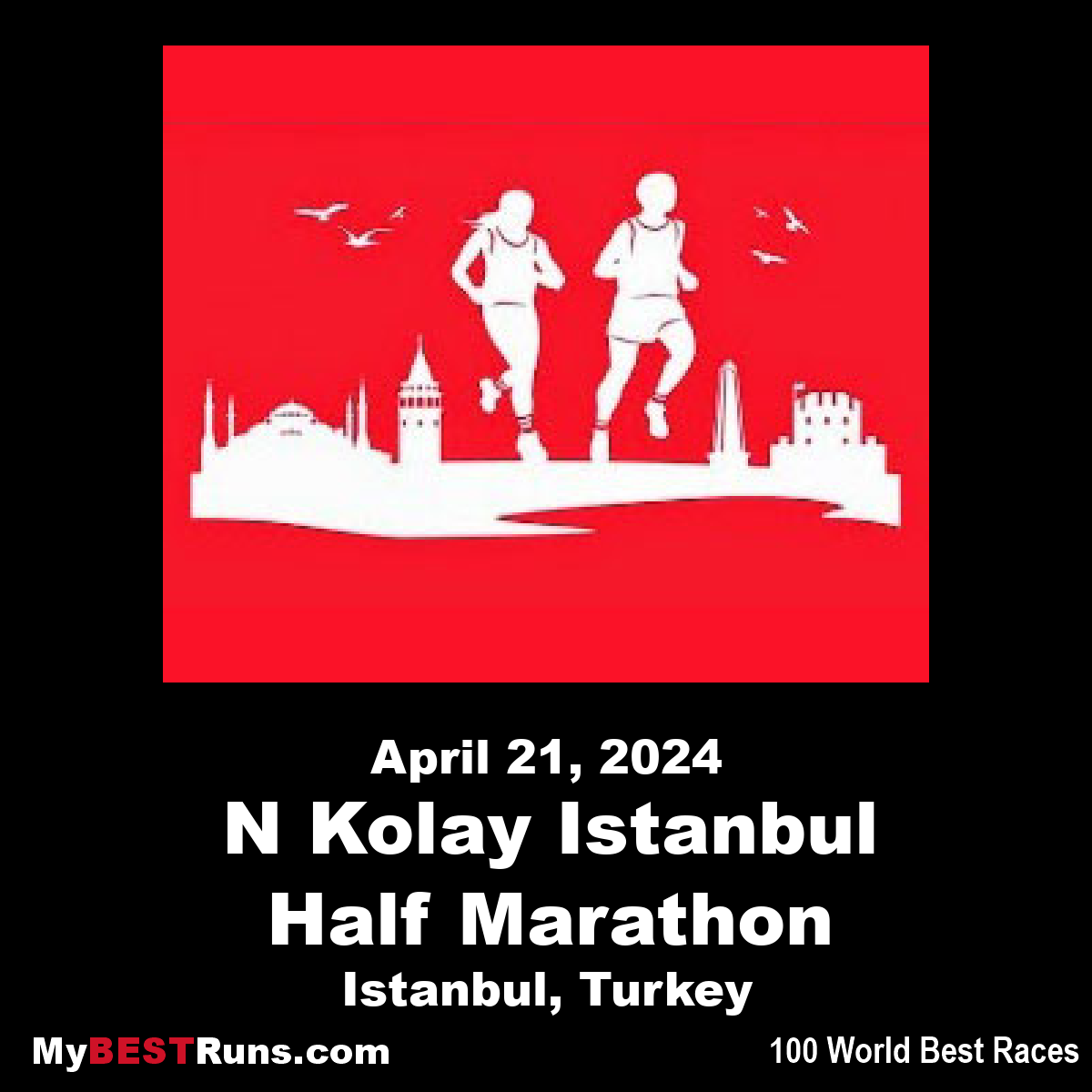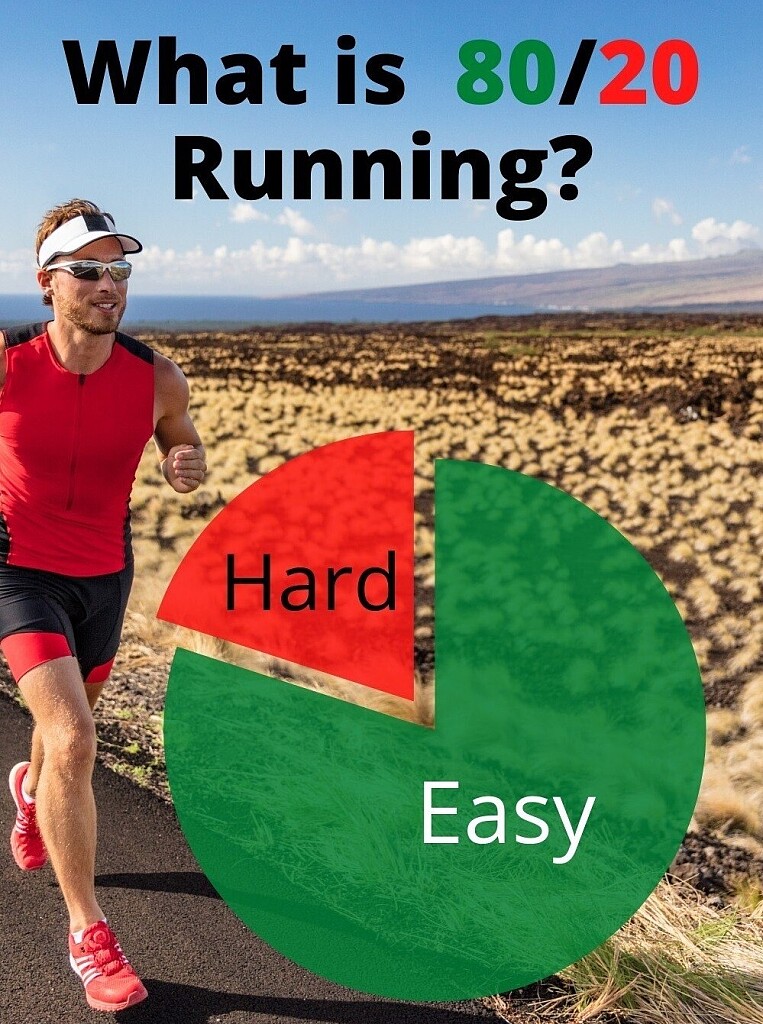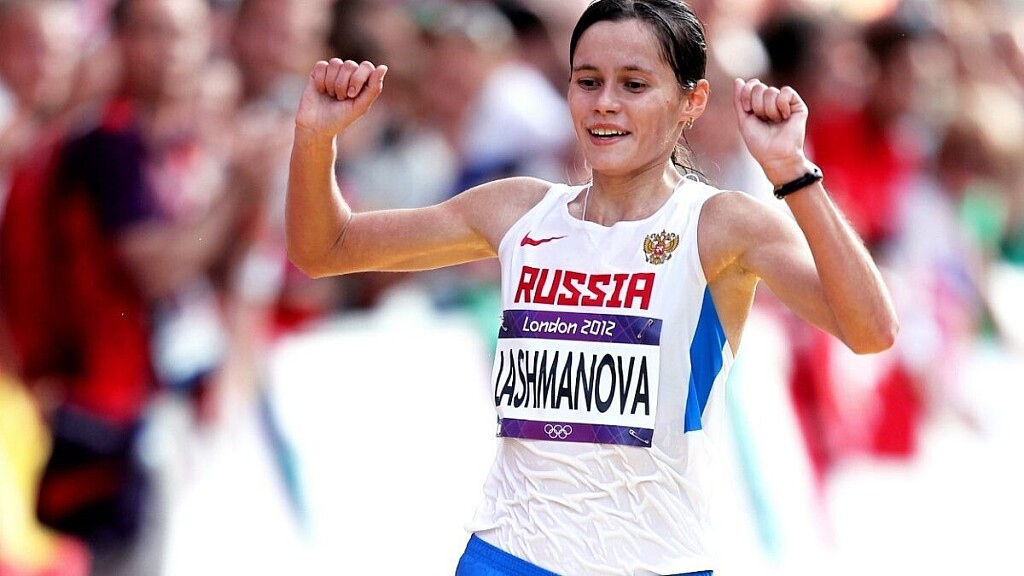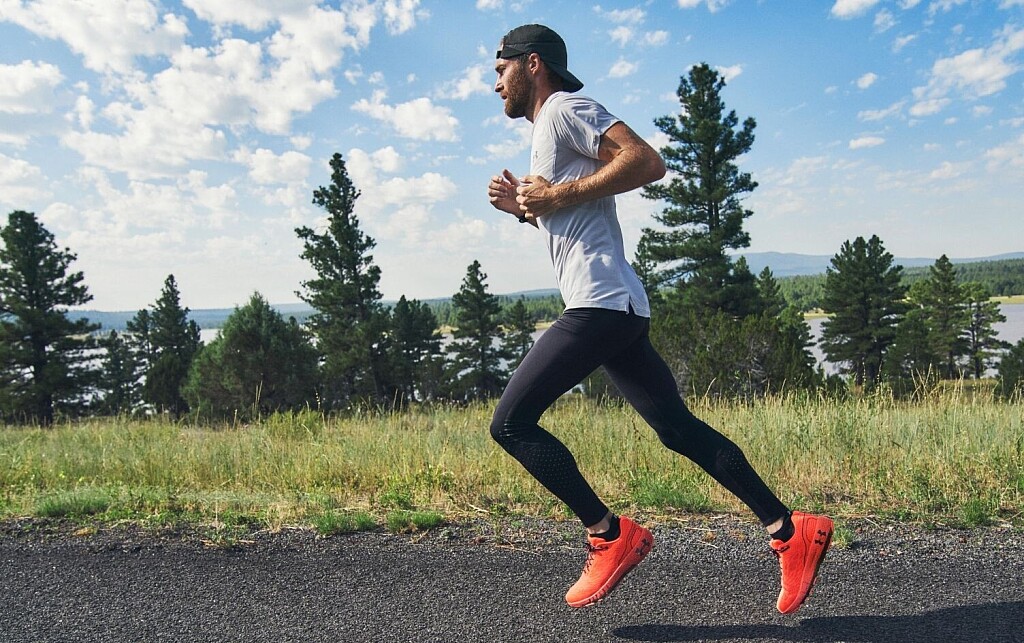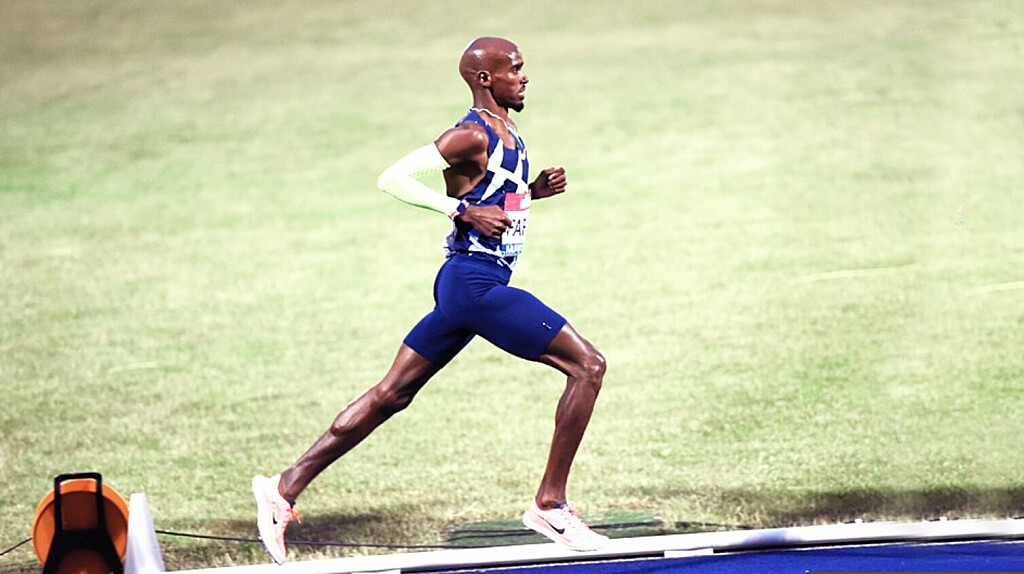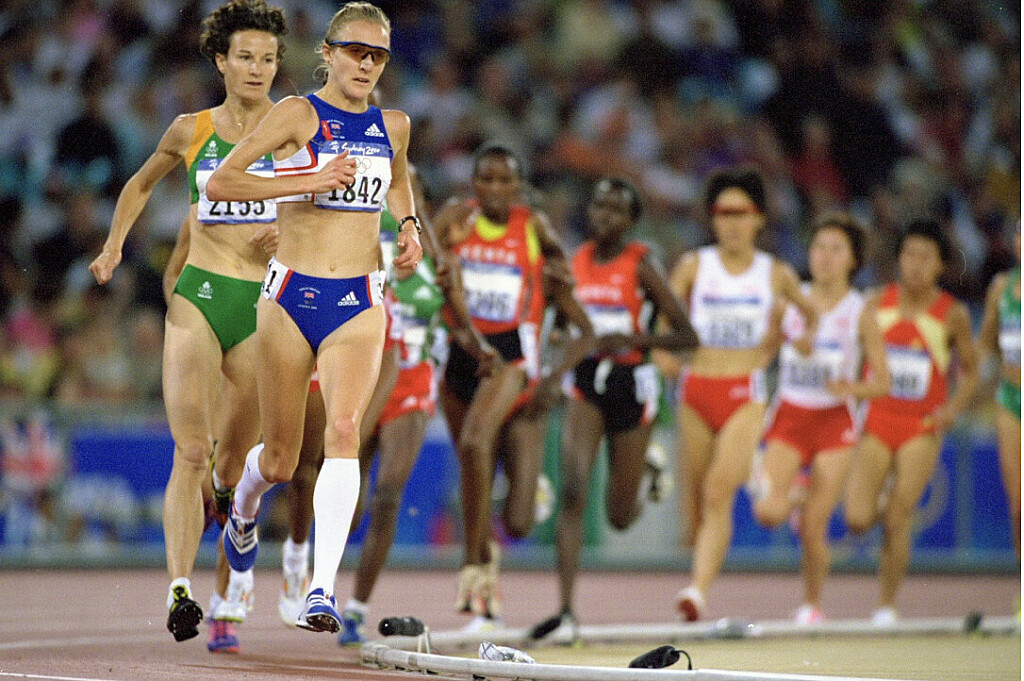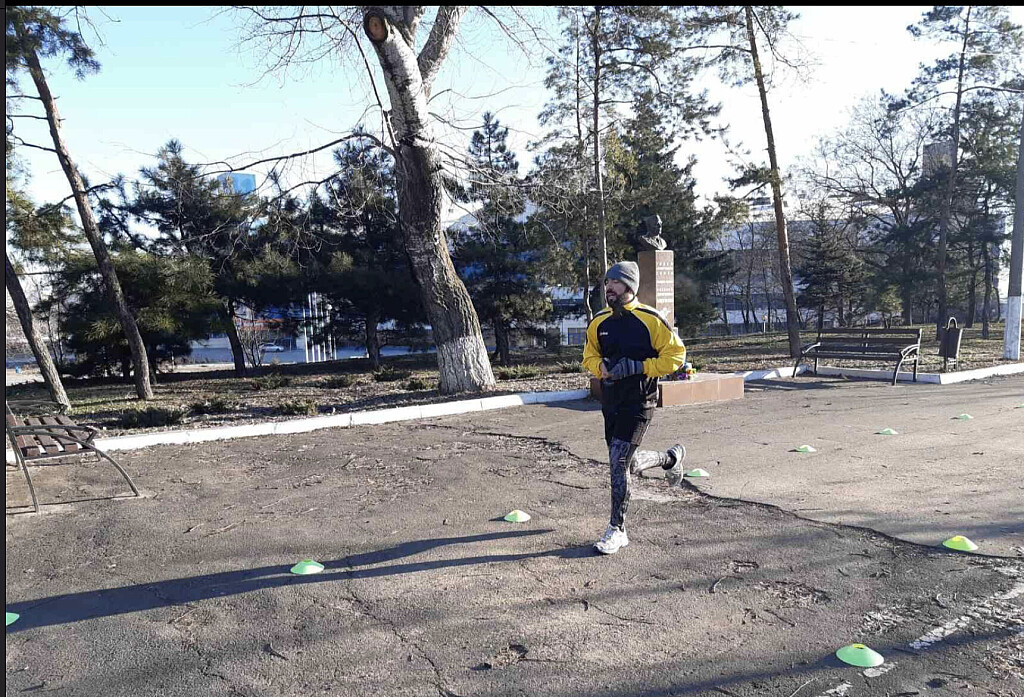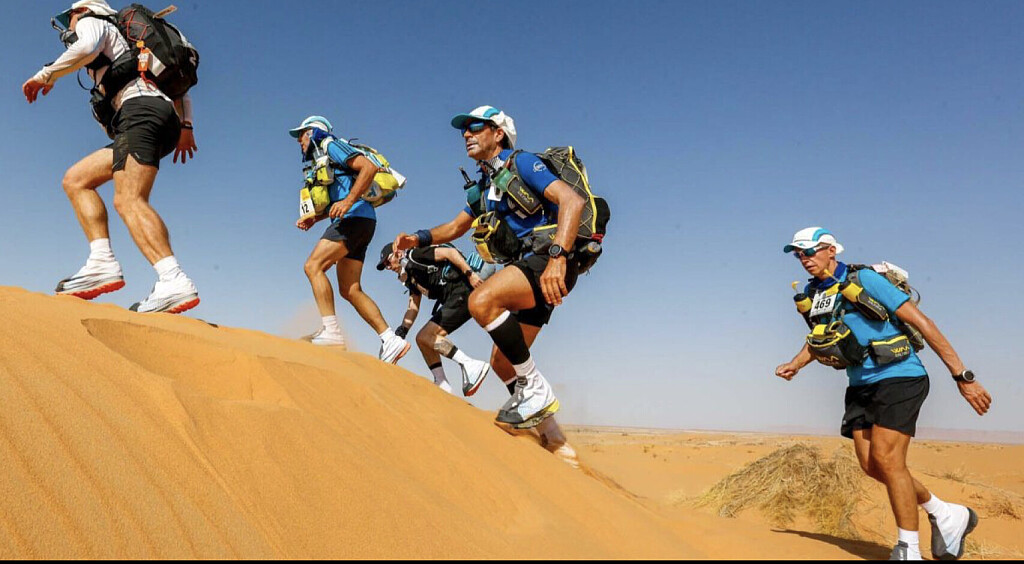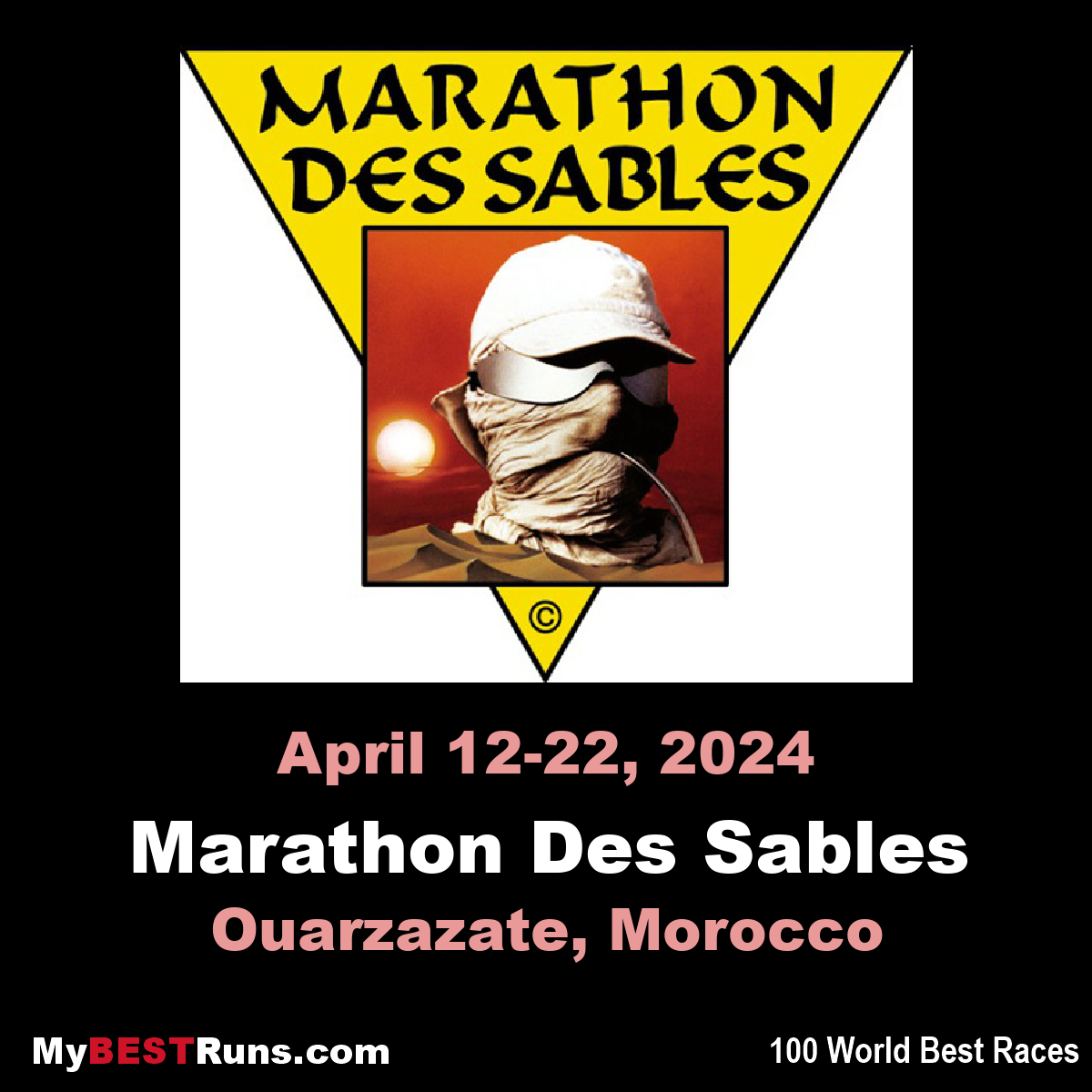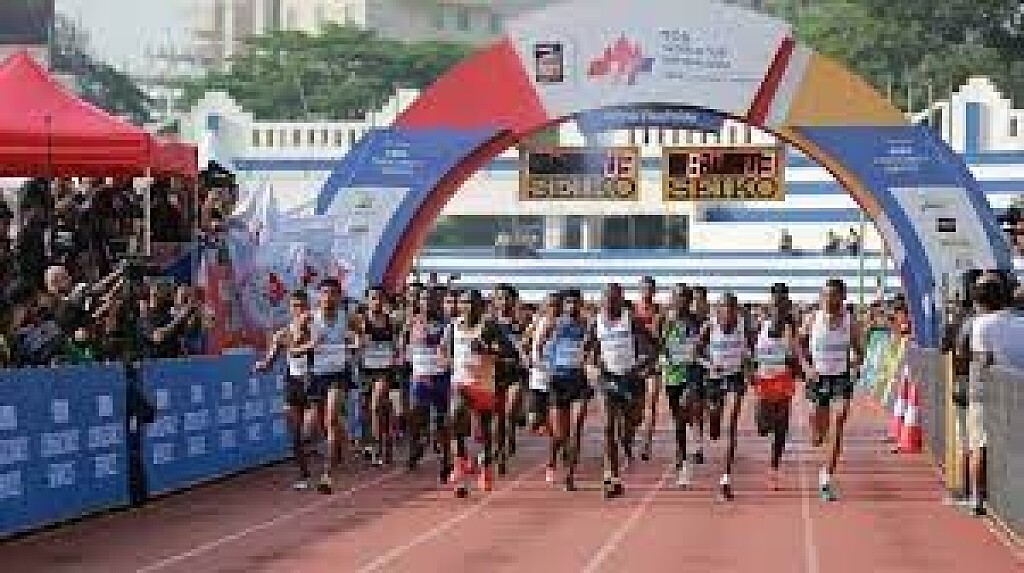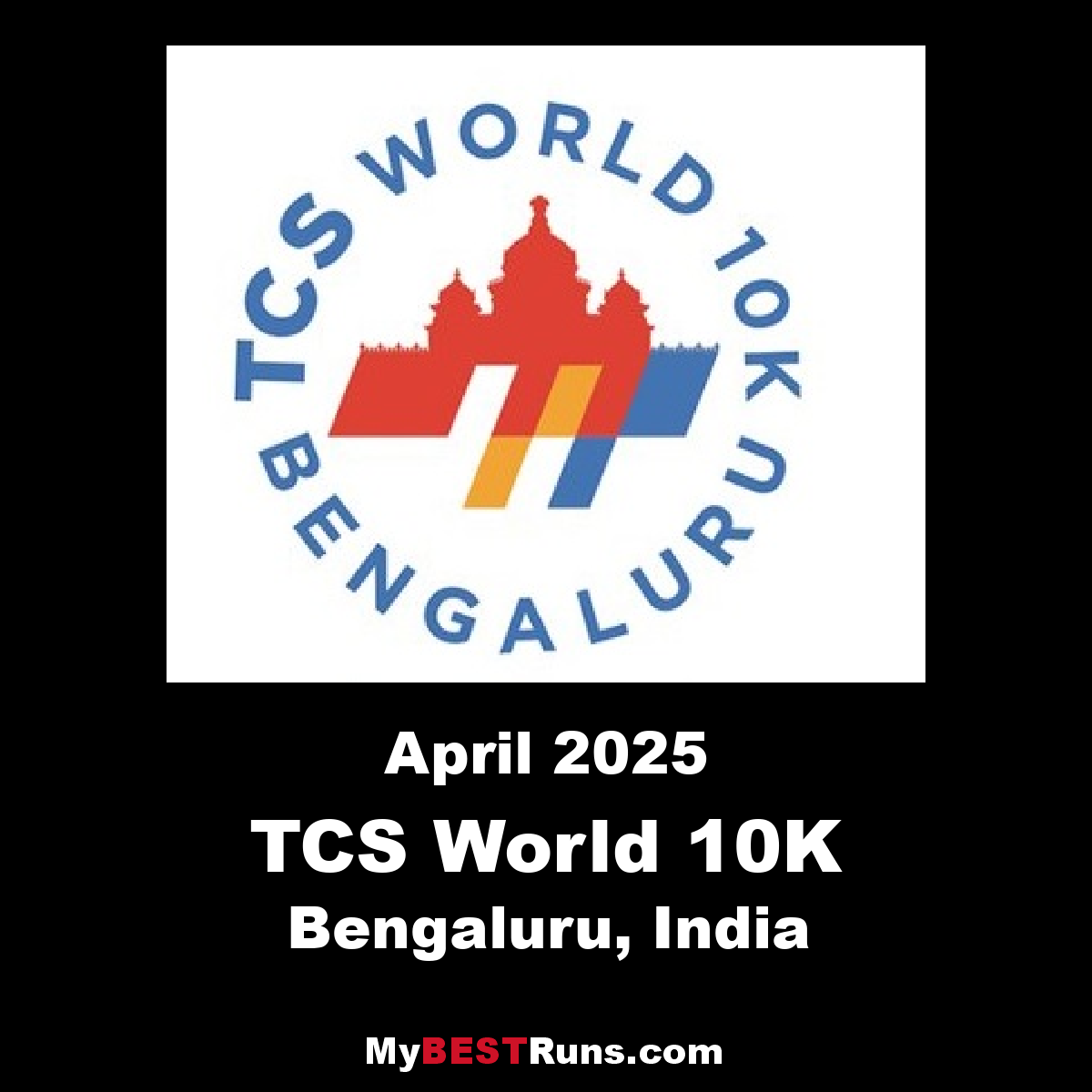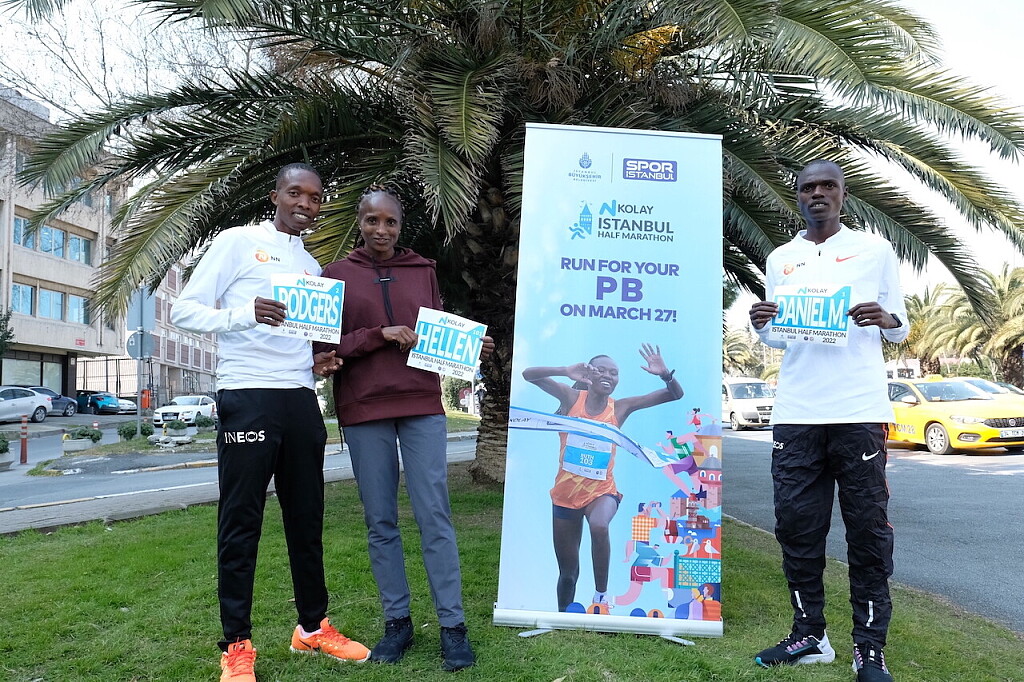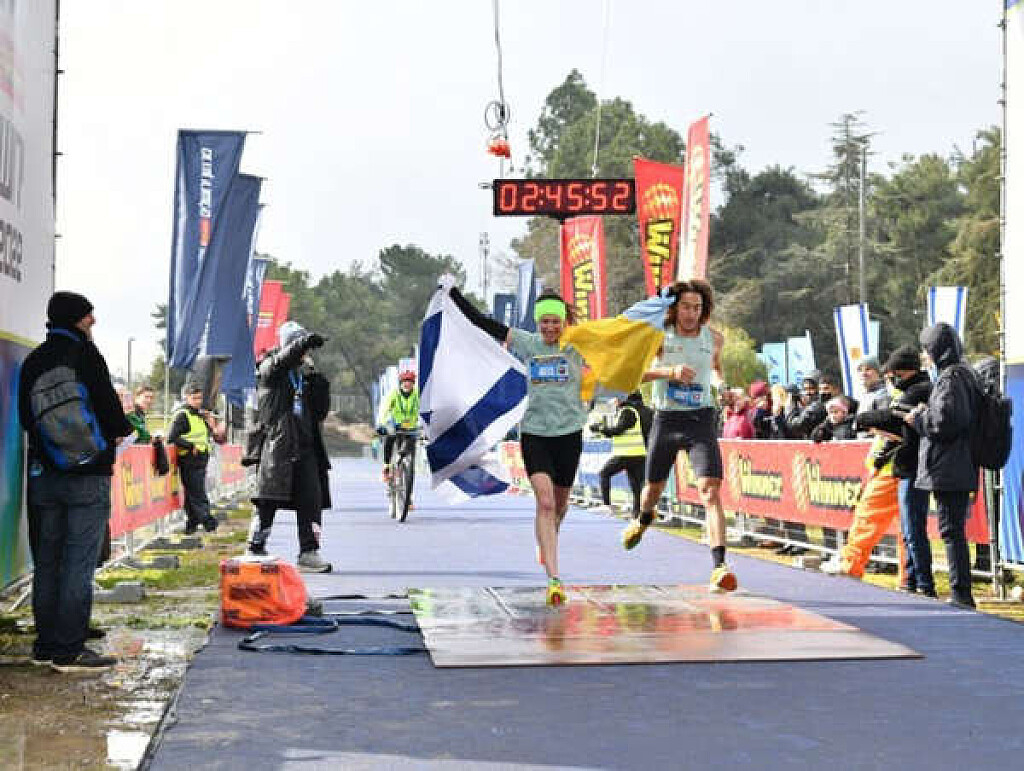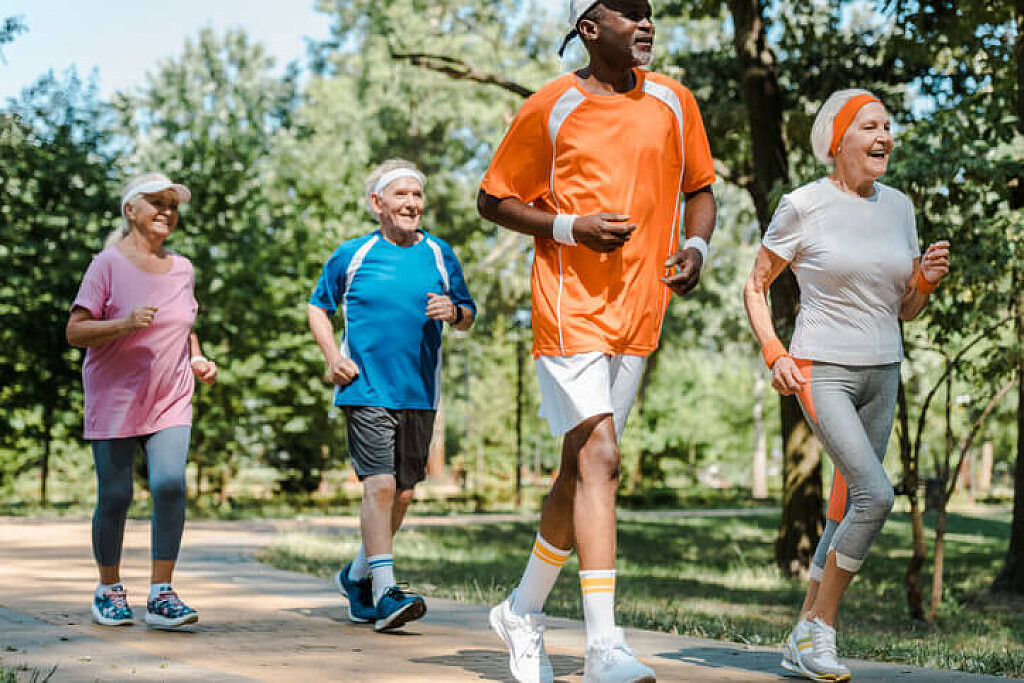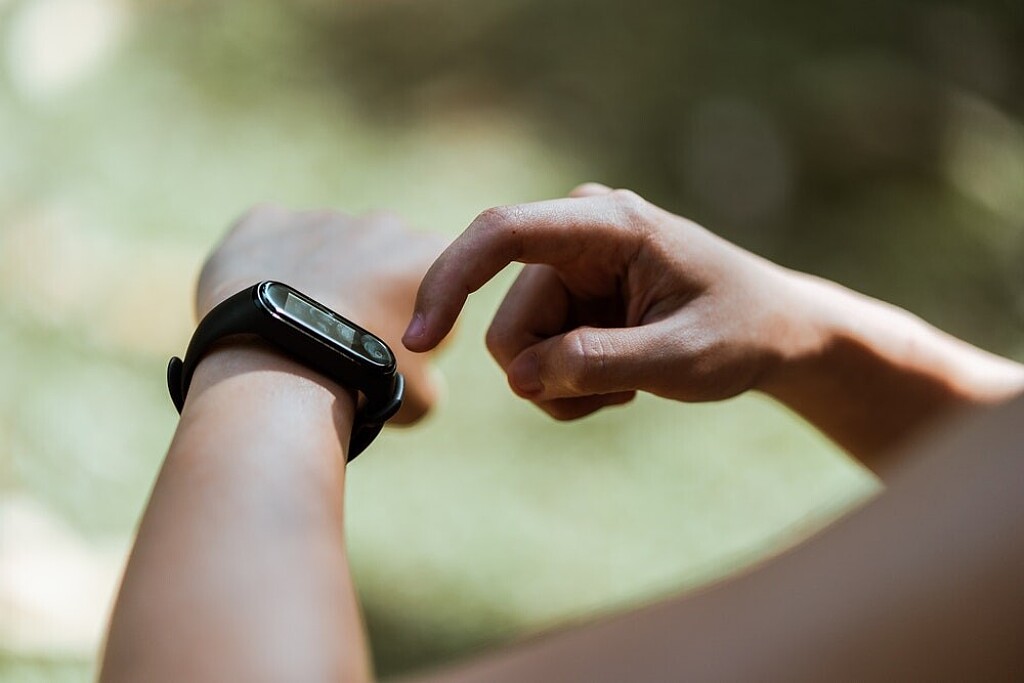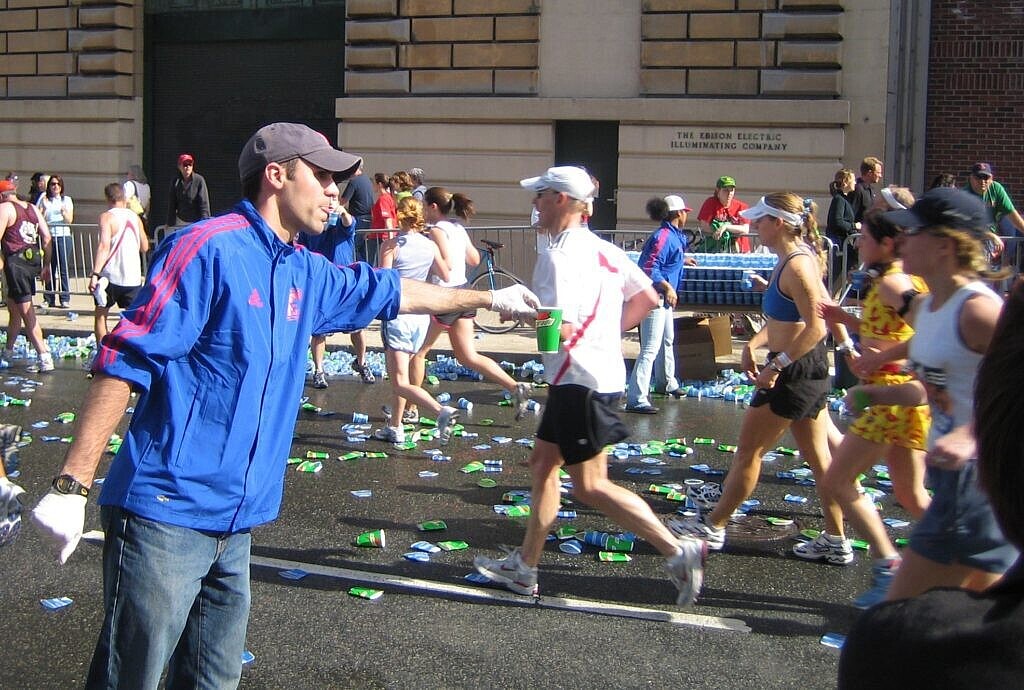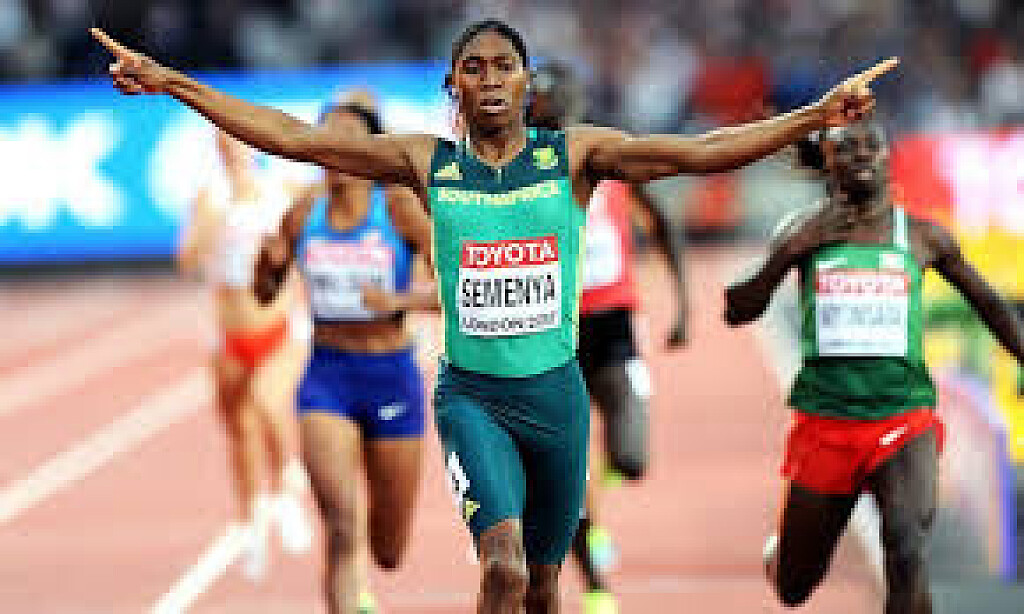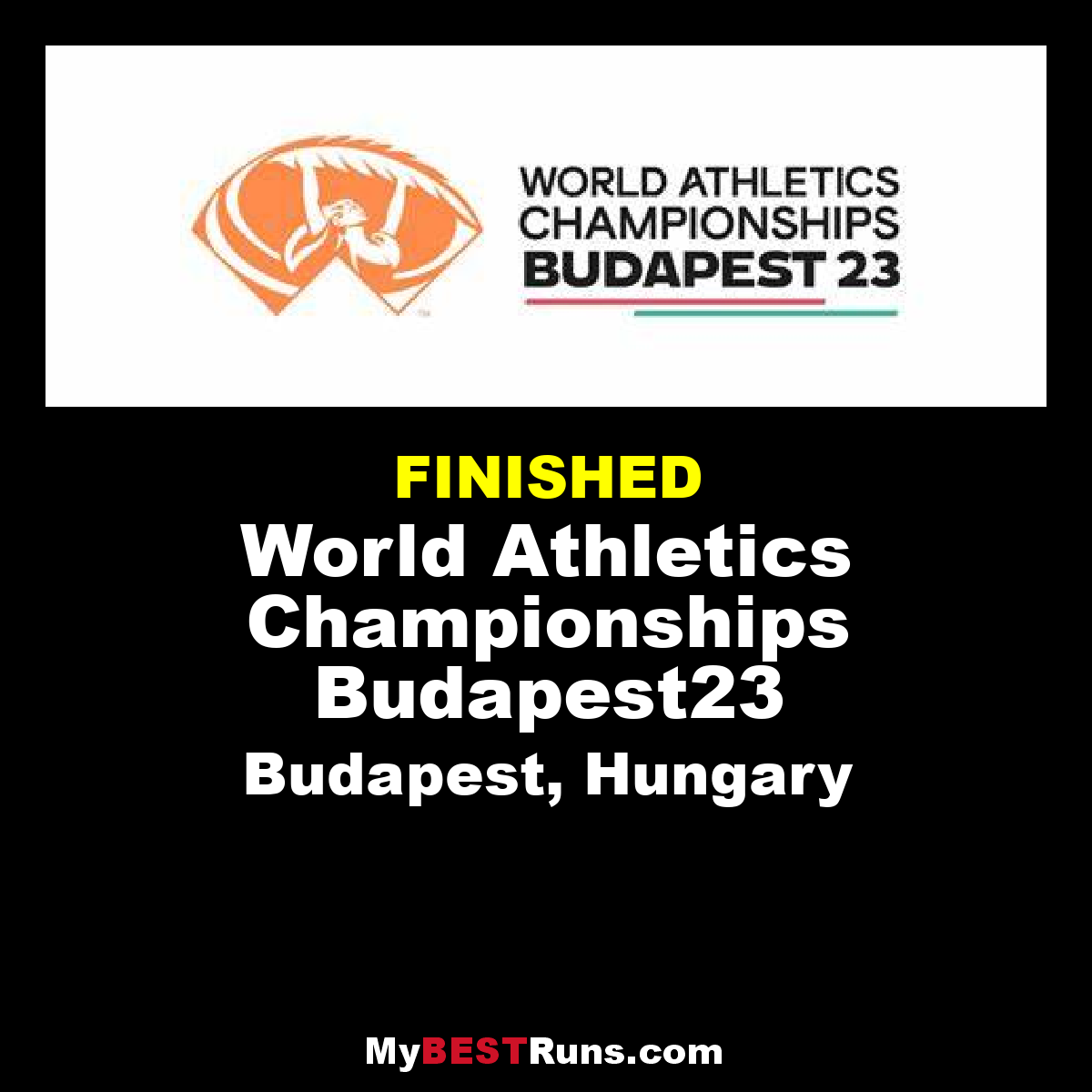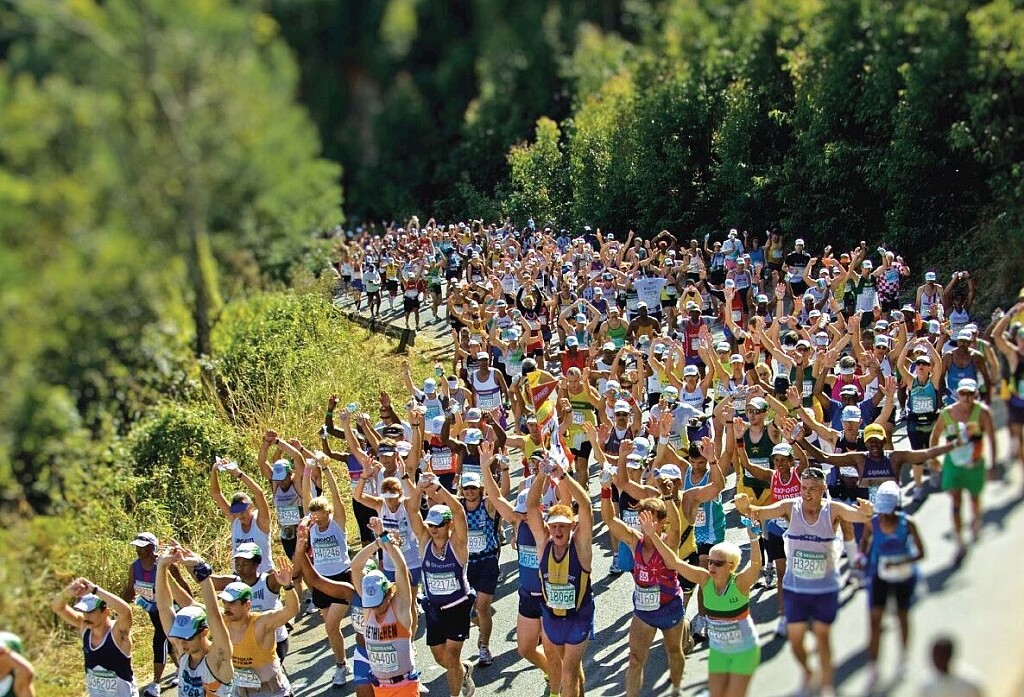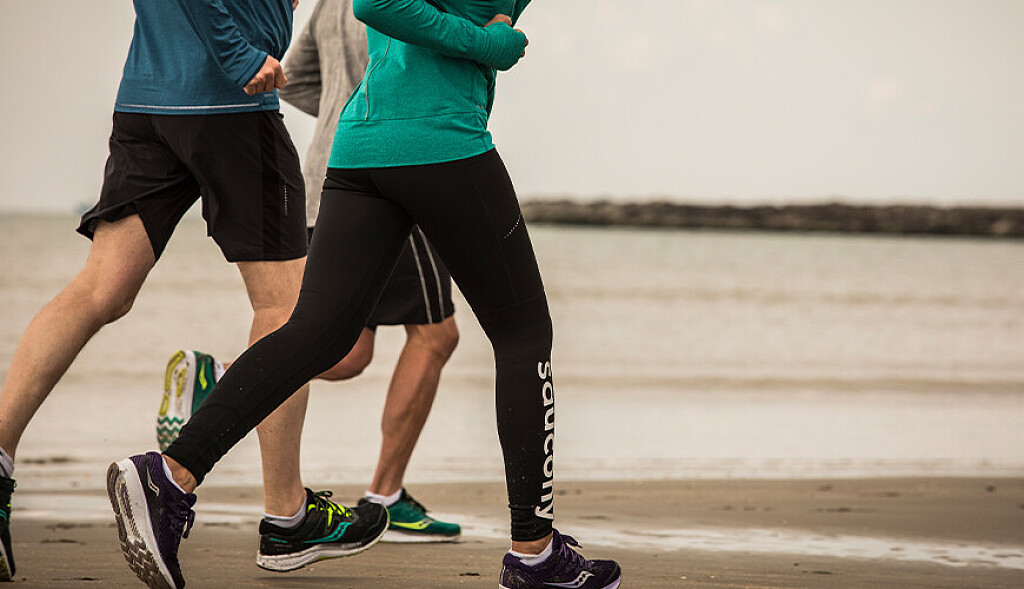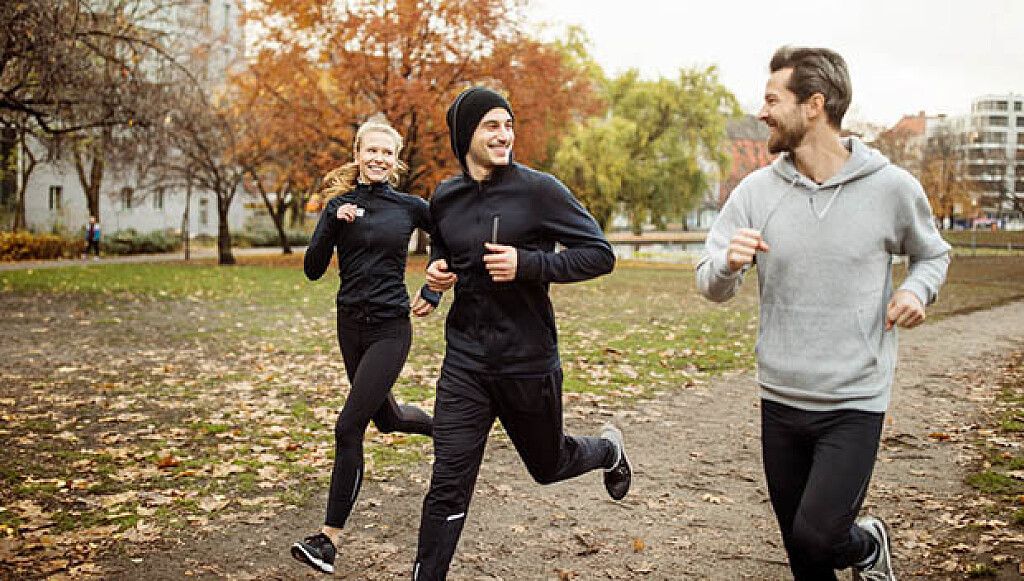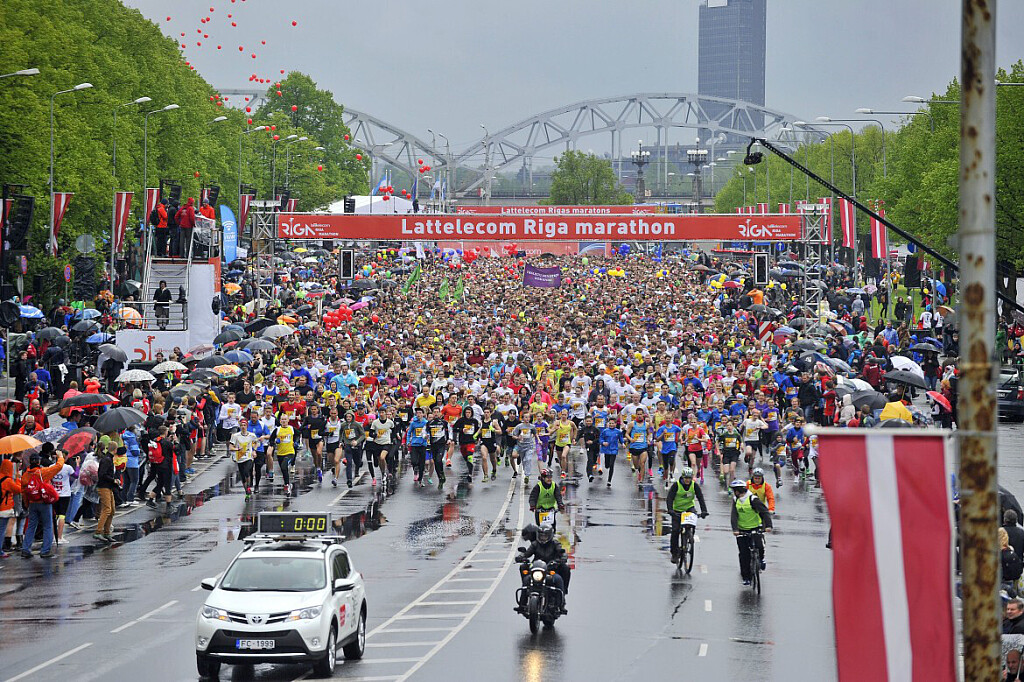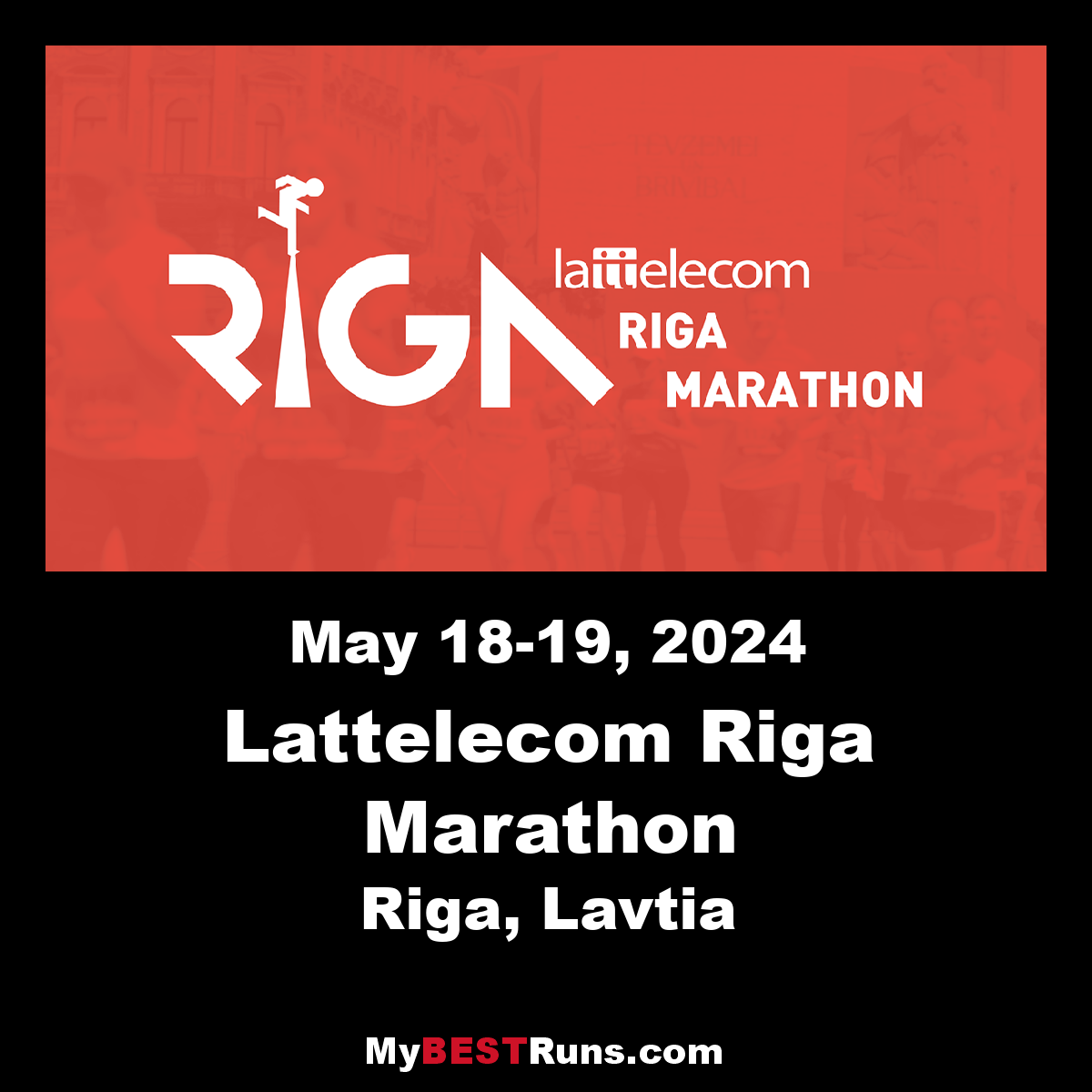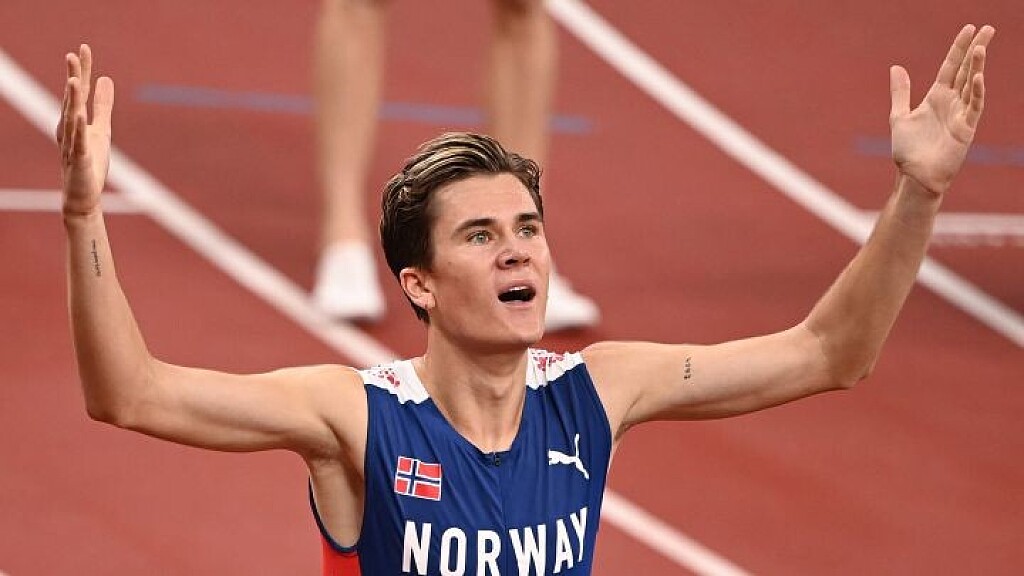Running News Daily
Running News Daily is edited by Bob Anderson in Mountain View, California USA and team in Thika Kenya, La Piedad Mexico, Bend Oregon, Chandler Arizona and Monforte da Beira Portugal. Send your news items to bob@mybestruns.com Advertising opportunities available. Over one million readers and growing. Train the Kenyan Way at KATA Running Retreat Kenya. (Kenyan Athletics Training Academy) in Thika Kenya. Opening in june 2024 KATA Running retreat Portugal. Learn more about Bob Anderson, MBR publisher and KATA director/owner, take a look at A Long Run the movie covering Bob's 50 race challenge.
Index to Daily Posts · Sign Up For Updates · Run The World Feed
Japanese record-holders Izumiya, Terada and Aoki to race in Tokyo
Some of Japan’s leading hurdlers will be in action when the World Athletics Continental Tour Gold series arrives at Tokyo’s Olympic Stadium for the Seiko Golden Grand Prix on 8 May.
Japanese 110m hurdles record-holder Shunsuke Izumiya, joint national 100m hurdles record-holders Asuka Terada and Masumi Aoki, and Olympic 400m hurdles semifinalist Hiromu Yamauchi will take on some of the world’s top athletes as they look to further improve their records in the early part of the outdoor season.
Izumiya clocked 13.06 when winning the national title in Osaka last June – a time that placed him fifth in the world on the season top list – and went on to reach the semifinals at the Olympics in Tokyo. He was second in last year’s Ready Steady Tokyo meeting, part of the World Athletics Continental Tour.
Terada and Aoki went head-to-head at the Ready Steady Tokyo meeting, with Terada taking the win in 12.99, and the pair have matching PBs of 12.87.
Joining Yamauchi in the men’s 400m hurdles field will be last year’s Ready Steady Tokyo winner Kazuki Kurokawa and Takatoshi Abe. Along with Izumiya, this year's 110m hurdles line-up includes Shunya Takayama and Rachid Muratake.

by World Athletics
Ethiopian Gelete Burka announces a return to Ottawa, she broke the Canadian All Comers record in 2018, and she will be aiming for a sub-2:20 marathon on May 29
Gelete Burka is smiling warmly as she moves about her house in Addis Ababa, the Ethiopian capital city. She’s looking into her mobile phone during a WhatsApp video call in which she confirmed her return to the newly renamed Tamarack Ottawa International Marathon, Sunday, May 29th.
The World Athletic Gold-label event will be held in person again after a two-year hiatus due to the pandemic.

On her previous visit in 2018, Gelete – Ethiopians prefer to use their first names – broke the Canadian All Comers’ record (the fastest time recorded on Canadian soil) with a stunning 2 hours 22 minutes 17 seconds despite conditions that weren’t exactly agreeable.
“Of course that time everything was hard,” she remembers still smiling. “The weather! I had been training here in Ethiopia and it was so very hot and also the (strong) wind and I also had stomach cramps. Anyway, God is good and, for me that day, helped me for that victory. I was so very happy.”

The margin of victory despite stomach cramps, the wind and the cooler temperatures (it was a cool 13 degrees Celsius at 7am that day) was roughly four minutes such was the effort she expended.
“Ottawa is a good memory for me,” she continues. “When I was training I had a bit of a leg problem with an injury to my calf and I came to Ottawa with that injury. It was not easy. That was why I smiled when I came to the finish.”
Although she rarely leaves the hotel at a marathon – preferring to totally focus on the race at hand – after her Ottawa victory she attended an Ethiopian church with Ottawa friends to give thanks.
In Addis she is both an usher and a member of the forty-member choir at The Glorious Life Church. With two Sunday services, plus another on Tuesday nights, her devotion to the church is exemplary. No wonder she has little time, outside of training and travelling, for herself. When she does have free time she might have tea or coffee with friends.
As she speaks, Gelete shifts position for better light and the contents of her cabinet come into focus.
There is her 1500m gold medal from the 2008 World Indoor Championships, the 2006 World Cross Country gold and the 10,000m silver medal she earned at the 2015 World Championships in Beijing. Without a second thought she suddenly beckons two children to join her in the picture. They are her young niece and nephew, Deborah and Muse, and she asks them to say hello into her phone.
Family is ever so important. These are her youngest sister’s kids. The financial rewards of being a world class runner – she took CAD 30,000 (USD 24,120) prize money from Ottawa for instance – over two decades has allowed her to take care of both immediate family who live with her, while also contributing to the welfare of children in her home village of Kofele in south central Ethiopia.
Gelete has represented Ethiopia in six successive world outdoor championships and three Olympics. In Rio six years ago, she finished 5th in the 10,000m earning her personal best of 30:26.66. Had it not been for a slight on the part of the Ethiopian federation a year later, she might never have turned to the marathon.
“In 2017 I was in Hengelo (Netherlands) at the Ethiopian trials for the world championships. I won the Ethiopian 10,000m trials (30:40.87), but they never took me to the world championships in London,” she explains, her smile having vanished now.
“After that I stopped track and that is the point when I went to the marathon. So, I trained for the Dubai Marathon where I ran 2:20:45.”
A year later she won the 2019 Paris Marathon in 2:22:47, then finished 3rd in Chicago, one of the ‘World Majors,’ in 2:20:55. The latter result illustrates the importance of pacemakers to marathoners.
“In Paris we had a very nice pacer and also in Chicago, you remember the world record was broken,” she remembers. “The pacemakers went with the Kenyan lady (Brigid Kosgei set the world record of 2:14:04) and after 2km I was all by myself for 40km. Maybe when someone is pushing me I will run under 2:19. I need a good pacemaker. Yes I hope it is arranged (in Ottawa). I want to go under 1:10 the first half.”
Gelete is coached by Getamesay Molla and belongs to a group of strong Ethiopian runners who train together on the dusty roads of Sendafa, Sululta and Entoto outside Addis. Traffic inside the capital makes training there near impossible. Preparations, she says, are going well for Ottawa.
“My training now is very nice,” she allows. “I am happy with my training and I have another two months to get in good shape.”
Racing regularly again following the coronavirus pandemic is a welcome relief for her. Now that she is 36 years old, an age that used to indicate the twilight years of an athletics career, she doesn’t know how much longer she will continue training and racing. The Paris Olympics are two years hence.
“I don’t know about that (Paris) I don’t have an idea about this,” she says carefully.“Even if I run a good time it is not easy with my federation (to win selection). You saw like Kenenisa (Bekele who was controversially left off the Ethiopian Olympic team) last time in Tokyo. I will see what my time is. Sometimes you have the time, but I don’t know why they do this.”
Politics notwithstanding Gelete has several more world-class performances in those legs. Reducing her personal best and getting under the 2 hours 20 minutes barrier remains a target. She would like for that to happen on the streets of Ottawa.
(04/01/2022) ⚡AMPOttawa Marathon
As one of two IAAF Gold Label marathon events in Canada, the race attracts Canada’s largest marathon field (7,000 participants) as well as a world-class contingent of elite athletes every year. Featuring the beautiful scenery of Canada’s capital, the top-notch organization of an IAAF event, the atmosphere of hundreds of thousands of spectators, and a fast course perfect both...
more...Four steps to nail your first 10K, If you're considering making the jump to the double-digits, follow these guidelines to get you ready to go the distance
The spring racing season is around the corner, and if you conquered your first 5K last fall, you may be thinking of bumping up to the double digits in the coming months. As they say, if you can run 5K, you can run 10, but that doesn’t mean you shouldn’t train for it. Follow these steps over the next several weeks to ensure you’re ready to nail your first 10K.
Step 1: Build Mileage

Jumping from the 5K to the 10K means you will have to run more in your training, but it’s important to increase the amount you’re running slowly and thoughtfully. Suddenly doubling your mileage will likely result in injuries.
The general rule for increasing mileage is no more than 10 per cent per week, so use this as your starting point and adjust from there. For example, if you were previously running 5K, three times per week (15 km total), you should start by adding another 1.5 to two kilometers to your weekly total. Many runners will be able to add more mileage than this, but this is a good place to start, especially if you’re a beginner. We don’t recommend adding more than 5 km to your weekly total right off the top.
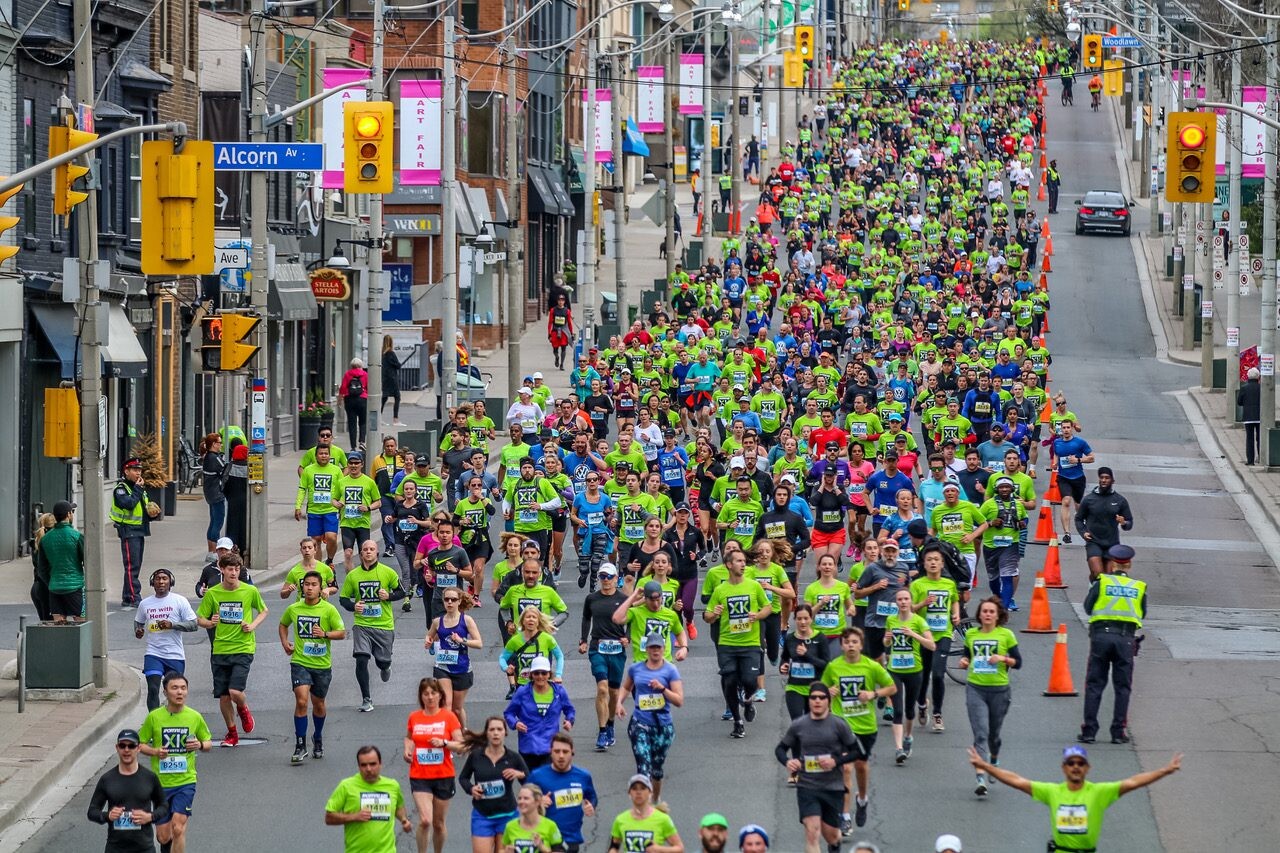
As your mileage totals get bigger, you may also want to consider adding another day of running into your schedule. Four to five days per week of training is a good amount for a 10K.
Step 2: add in a long run
When you’re increasing your mileage, you don’t have to spread it evenly across the week. In fact, you shouldn’t. An easy (and effective) way to add volume is by choosing one day of the week to be your long-run day. To use the example from above, you could add one or two kilometers to one of your weekly runs, so two days in the week, you’re running 5K, and one day you’re running six or seven.
The long run is your opportunity every week to prepare yourself to cover the race distance, which is the most important consideration for most runners when tackling their first 10K. Your other two runs are for building fitness, and varying your pace.
Step 3: consider varying your pace
If you’re a beginner runner who’s never done speedwork, now isn’t the time to start doing lung-burning, gut-busting track sessions, but adding a bit of faster running into your program can help build up some strength that will prepare you for the 10K distance.
If you’re building up your mileage for the first time, you should be careful about adding too many other stressors to your body all at once. For this reason, the speedwork you do should focus on short, fast strides that get you moving quickly without causing too much fatigue.
For example, try adding four to six 30-second strides or short hill repeats after one or two of your runs each week. This will introduce some speed to your legs and build up strength without stressing your body out too much as it adapts to your higher weekly mileage totals.
Step 4: give yourself some time
This, perhaps, should really be step one. It’s important to go slowly when you’re increasing your weekly mileage to give your body time to adapt. Ideally, you should build your mileage up steadily for four weeks, then drop your volume down for one week to give your body an opportunity to absorb your training before bumping back up again.
If you’re coming from the 5K distance, the best-case scenario for preparing for a 10K is a 10-week training block. This allows you to build your mileage for four weeks, take a one-week taper, build it again for another 4 weeks, then take another taper week ahead of your goal race.
(04/01/2022) ⚡AMPby Brittany Hambleton
Ethiopian Haftu Teklu and Kenyan Margaret Kipkemboi are ready to strike in Barcelona
Kenya's Margaret Chelimo Kipkemboi and Ethiopia’s Haftu Teklu will be among the leading athletes at the eDreams Mitja Marató de Barcelona, a World Athletics Elite Label event, on Sunday (3). While world 5000m silver Kipkemboi tackles the distance for the first time, Teklu will be aiming to retain his title.
In the absence of multiple world record-holder Genzebe Dibaba, who withdrew from the entry list a few weeks ago due to injury, her fellow Ethiopian Asnakesh Awoke, third last year in 1:07:47, emerges as one of the favorites. The 26-year-old was runner-up the previous year in a PB of 1:07:04 and should be eager to improve on her previous appearances and take top spot.

Spain's Alejandro Rodriguez, a former 1:45:97 800m specialist, will be in charge of the pacing duties, aiming to cover the opening 10km at 3:06/3:08 pace in the hunt for a sub-1:06:00 final time. The course record stands at 1:05:09, which was then a world record, set by Kenya's Florence Kiplagat in 2015.
The defending champion Teklu should be regarded as the main favorite in the men’s race. The 26-year-old won in style last October, setting a course record of 59:39 on his debut over the distance. Teklu has competed twice in 2022 over shorter distances indoors, setting PBs of 3:39:47 for 1500m in Sabadell and 7:52:10 for 3000m in Torun last month.

Back to his specialist event, the Ethiopian athlete will be aiming for an improvement on his performance last year to grab back-to-back titles.
“Last year, the organizers gave me the chance to make my debut here and I managed to win,” he said. “I'm now a more experienced athlete, I already know the circuit and I'll be targeting a quicker performance on Sunday.”
Teklu heads a powerful Ethiopian squad which includes another two athletes who have dipped under the 60-minute barrier – Abe Gashahun (59:46) and Antenatyehu Dagnachew (59:48) – alongside last year's third-place finisher Regasa Chala (1:00:38) and debutants Gebru Redahgne and Teresa Nyakora.
Kenya's Titus Mbishei, fresh from a 1:01:53 clocking in Ras Al Khaimah in February, joins them, as do Eritrea's Berhane Tesfay (1:00:54) and Uganda's Ali Chebres.
Burundi's Thierry Ndikumwenayo, recent victor in Serradilla at the closing event of this season's World Athletics Cross Country Tour, will be the opening pacemaker, while Kazakhstan's Shadrack Koech, a 1:00:12 athlete, should lead the front group to 15km at a brisk rhythm.
Overall, more than 13,000 runners will take place in the event. Weather forecasters predict an ideal morning for running with a very slight wind, sun and a 10°C temperature by the time of the event.
However, Kenya's Kipkemboi, a 29:50 10km specialist, should not be discounted for the win. The 29-year-old has shown great form this winter with podium places at the Atapuerca and Italica cross country races on Spanish soil and more recently came second at the national championships in Eldoret. Ethiopia's Gete Alemayehu, holder of a 1:08:23 personal best, might well complete the podium.
(04/01/2022) ⚡AMPby Emeterio Valiente (World Athletics)
Hannover Marathon returns with focus on German championships
The HAJ Hannover Marathon will be back on Sunday after a two-year gap due to the Corona pandemic. Returning with its 30th edition the race will feature the German Marathon Championships. Because of uncertainties regarding the Covid 19 situation in the build-up organisers decided to focus on the national championships this year and to only allow a limited international elite field.
While Hendrik Pfeiffer and Rabea Schöneborn are the clear favourites in the race for the national title there might still be international overall winners. The HAJ Hannover Marathon is a World Athletics Label Road Race.

"It will be a very emotional return for all participants as well as for the organising team,“ said Race Director Stefanie Eichel.
“We are really happy to come back with this race and we are well aware about our responsibility under the current conditions. Our approach is to make sure that our participants feel good and safe during our event.“

Including events at other distances the organisers of the HAJ Hannover Marathon set a limit of 18,400 participants for this year. Close to 4,000 of them will run the classic distance.
A Mongolia runner heads the start list of the HAJ Hannover Marathon: Byambajav Tseveenravdan has a personal best of 2:09:03 from Oita (Japan) in 2020. While this remains his only sub 2:10 time he ran in the Olympic Marathon last summer and placed 55th. With this result Byambajav Tseveenravdan is in a similar performance range as Hendrik Pfeiffer, who was 50th in the tough Olympic race.
The German has a personal best of 2:10:18 from Sevilla in 2020, which makes him the clear favourite in the race for the German title on Sunday.
"My goal is to qualify for the European Championships in Munich and to run a personal best in Hannover. It is a nice and fast course and I look forward to enjoy the atmosphere with spectators back along the course,“ said Hendrik Pfeiffer.
While Hendrik Pfeiffer is likely to run in a group that targets a half marathon split time of 65:30 a few Kenyan athletes might go much faster on Sunday. Daniel Muteti is the second fastest runner on the start list with a personal best of 2:09:25. He clocked this time in Cape Town in 2019.
However Daniel Muteti has not raced internationally in the past two years. It is a similar story with fellow-Kenyan Josphat Kiptis, who only competed once during this time. He will run his marathon debut on Sunday. While Josphat Kiptis features a promising half marathon PB of 60:21, he ran this back in 2015.
Germany’s Rabea Schöneborn is not only the big favorite in the title race but additionally she is the fastest woman on the start list. The runner from Berlin improved to 2:27:03 last spring in Enschede, where she missed a place on the German Olympic team by just nine seconds.
It was her twin sister Deborah Schöneborn who qualified with a PB of 2:26:55 and then achieved a strong 18th place in the Olympic race. Looking at her sister’s family record Rabea Schöneborn said: “I want to run a personal best on Sunday and rectify this.“
There is one athlete who could be able to challenge Rabea Schöneborn in Hannover: Matea Parlov Kostro. The Croatian achieved a fine 21st place in the Olympic marathon in 2021 and has a personal best of 2:28:52. Matea Parlov Kostro’s aim will be to qualify for the European Championships on Sunday.
(04/01/2022) ⚡AMPADAC Hannover Marathon
It is not only the gripping competition that makes the marathon in Hannover so captivating, but also the exceptionally attractive side programme.With numerous samba bands and musicians accompanying the athletes along their sightseeing tour through the city, a feel-good mood is guaranteed on the course. The city will be transformed with a mix of musical entertainment, shows and activities that...
more...With strong fields, both course records are under threat at the Schneider Electric Marathon de Paris
Six months after its 46th edition, which was rescheduled due to the pandemic, the Paris event returns to its more usual place in the calendar.
The men’s line-up features six men who have already clocked sub-2:05 times, meaning the course record of 2:04:21 set by Elisha Rotich in 2021 could be improved.

Ethiopia’s Asefa Mengstu is the fastest man in the field courtesy of his 2:04:06 clocked in Dubai three years ago, but his compatriot Seifu Tura would look to be the favorite, having recently shown his good shape. The winner of the 2021 Chicago Marathon ran a half marathon personal best of 58:36 in February.
Tura’s marathon PB of 2:04:29 is 16 seconds faster than Hillary Kipsambu’s. The Kenyan, who turned 37 in February, will also be a serious threat. The Paris streets must be vivid in his memory, as he ran his PB of 2:04:44 last October in the French capital. On that occasion he placed third, finishing nine seconds ahead of Ethiopia’s Abayneh Degu, who set a PB of 2:04:53 that day and will also be in contention on Sunday.

Abayneh Degu and Deso Gelmisa will likely have a say as well. Degu ran 2:04:53 in Paris last year, while Gelmisa has a personal best of exactly the same time, run in Valencia in 2020.
Morhad Amdouni of France, who finished eighth at the 2020 World Athletics Half Marathon Championships, could target the French record of 2:06:36.
Julien Wanders will make his debut over the distance. The Swiss athlete is the European half marathon record-holder with 59:13.
The PB of Namibia’s Helalia Johannes – 2:19:52 set in 2020 – is more than a minute faster than the women’s course record set by Purity Rionoripo in 2017. Kenya’s Judith Jeptum should be the world bronze medallist’s main contender. Jeptum, who is 14 years younger than Johannes, proved her current form by clocking a half marathon PB of 1:05:28 one month ago.
The Kenyan is the third-fastest athlete in the elite women’s field with 2:22:30, 1:27 off Besu Sado’s personal best. The Ethiopian, who clocked that time of 2:21:03 in 2019, will also be looking for a top spot.
Not to be discounted are Ethiopia’s Tigist Abayechew and Beyenu Degefa. Abayechew has run 2:22:45 at her best, while her compatriot finshed third in Valencia in December in 2:23:04.
(04/01/2022) ⚡AMPby World Athletics
Schneider Electric Paris Marathon
The Schneider Electric Marathon de Paris offers a unique opportunity to make the city yours by participating in one of the most prestigious races over the legendary 42.195 km distance. The Schneider Electric Marathon de Paris is now one of the biggest marathons in the world, as much for the size of its field as the performances of its runners....
more...The USATF has made the OneAmerica 500 Festival Mini-Marathon the national championship for the distance on May 7
USA Track & Field, whose headquarters are in Indianapolis, will have two of its events in Indianapolis, Ind this year.
Most notable is USATF has made the OneAmerica 500 Festival Mini-Marathon the national championship for the distance on May 7.
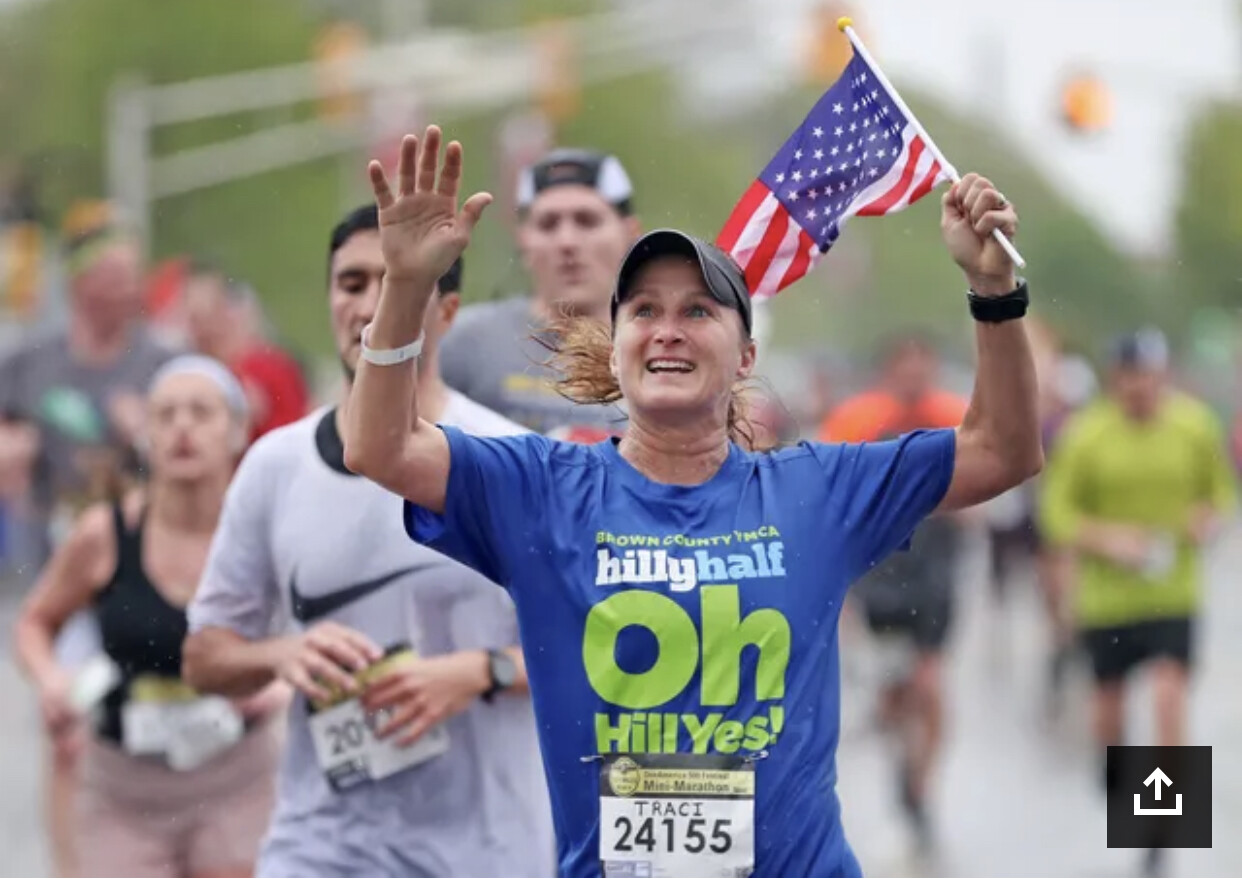
The half-marathon championship is a stop on USATF’s running circuit, a series of road races from one mile to the marathon offering $500,000 in prize money. The designation could attract the strongest field of elite runners in the history of the Mini, which debuted in 1977.
In a news release, Max Siegel, CEO of USATF, said:
“We are thrilled to bring our USATF Half Marathon Championships to such an incredible weekend of racing in Indianapolis.”
The 13.1-mile course starts and finishes downtown and features a 2.5-mile loop around the Indianapolis Motor Speedway. The pandemic caused the Mini to be canceled in 2020 and 2021.
Prize money for each gender is $7,000 for first place, $3,500 for second, down to $600 for 10th. Total prize money per gender is $20,000.
Indianapolis runner Noah Droddy, 31, who has run the second-fastest marathon ever by a native Hoosier, posted on Twitter that timing of the announcement was inappropriate.
"For reference most races assemble their professional athlete field MONTHS in advance," Droddy wrote. "I would have loved to race at home, but how can you plan for something on this timeline?"
Futsum Zienasellassie, a seven-time state champion at North Central High School, also said he will not race the Mini because of a scheduling conflict.
He is coming off two of his best results: fifth in the USA half-marathon in 1:01:21 at Hardeeville, S.C., Dec. 5, and sixth in the USA 15-kilometer race in 43:28 at Jacksonville March 5. In the latter, he beat seventh-place Galen Rupp, a two-time Olympic medalist. Zienasellassie, 29, who lives in Flagstaff, Ariz., has qualified for the Nov. 13 half-marathon World Championship at Yanzhou, China.
Also, USATF is bringing a street meet to Indianapolis on Sept. 18. It is part of the Journey to Gold Tour, which opens April 9 at Bermuda. A live telecast is scheduled for NBC.
The meet is modeled after similar events held at Boston and Manchester, England. Runners race down a straightaway course on an assembled track surface.
(03/31/2022) ⚡AMPOlympic silver medalist Abdi Nageeye targeting 2:04 at Rotterdam Marathon next weekend
Abdi Nageeye is the 2021 Olympic marathon silver medalist from Tokyo Marathon. In the hot and humid conditions that the marathoners battled in Sapporo, Japan, Abdi Nageeye cajoled his training partner, Bashir Abde to sprint hard, moving past Lawrence Cherono, to take the bronze medal. Abdi was both exhausted and overjoyed.
Nageeye targeting 2:04

Olympic marathon silver medalist Abdi Nageeye is targeting a 2:04 performance at the Rotterdam Marathon on 10 April. The Dutchman believes the race is the perfect location for him to challenge his own national record of 2:06:17 set there three years ago.

The European record is 2:03:36, held by Bashir Abdi. "Rotterdam was the race that offered the best experience for me," he said, quoted by his team, NN Running. "It is very welcoming, it is in my home country, NN is based in Rotterdam and as I have a big desire to improve my PB, it makes sense to run Rotterdam because it is such a fast course.
It is such a special race because it gives you the belief that you can run fast times and the crowd is really amazing. From about 33 kilometers through to around 36 kilometers you run in the forest and because it is such a nice environment even when the race is at this really tough stage, you don't feel the pain.
I think that is one of the reasons you see the fast times because people leave the forest section of the race not crazy tired."
(03/31/2022) ⚡AMPby Alfonz Juck
NN Rotterdam Marathon
The marathon has been the biggest one-day sporting event in the Netherlands for many years in a row with over 35000 athletes professionals inclusive. The world's top athletes will at the start on the bustling coolsingel, alongside thousands of other runners who will also triumph,each in their own way.The marathon weekend is a wonderful blend of top sport and festival. ...
more...Bladerunner Jacky Hunt-Broersma on her way to completing 100 marathons in 100 days, she is 72 marathons into her 100-day journey
On January 17, Jacky Hunt-Broersma ran a marathon. Since then, she has completed 72 more en route to reaching her goal of running 100 marathons in 100 days, to break the Guinness World Record for running the most consecutive marathons. We caught up with the Arizona-based ultrarunner to find out how she’s managing such a daunting undertaking.
“I’m feeling quite good,” says Hunt-Broersma. “I’ve had some tough days, but overall it’s been going really well.”
Every day, she gets up in the morning, helps her kids get ready for school, then prepares to tackle her next marathon. The physical challenge of a goal like this is enormous (especially considering she is running on a prosthetic), but Hunt-Broersma says it’s the mental challenge that’s been the toughest part. “Just getting up and doing the same thing every day has been tough,” she says.

To change things up, Hunt-Broersma has done her marathons on the roads, trails and the treadmill. More than just a change of scenery, varying the surface has helped her physically, as well. After finding that the road was beating up on her body, she’s moved many of her runs to a dirt trail near her home that’s more forgiving, and alternated that with runs on the treadmill. “The treadmill works my muscles slightly differently than running outside, so it helps a bit with recovery,” she says.
Of course, running with a prosthetic leg comes with its own set of challenges that a runner with two legs would not have to deal with. The volume of running Hunt-Broersma is doing every day frequently causes swelling behind her knee near the bottom of her stump, which pushes the bone out of position. A daily part of recovery for her is icing her stump and massaging it to bring down the swelling so the bone can move back to the correct spot. “I’ve had to stop mid-run a few times to massage my stump so I can get going again,” she says.

The highs and lows
Unsurprisingly, in a journey of this length and magnitude, there have been good days and bad days. “Sometimes, after I have a really difficult run, I wonder how I’m going to get through another one the next day,” says Hunt-Broersma. “But then the next day feels like I didn’t run at all the day before.”
There have also been some particularly difficult days, like on day 35, when she ran a half-marathon race in the morning, then came home and ran another 21.1K to complete her marathon distance for the day. A few people called her out on social media, arguing it didn’t count because she split it into two runs, so to be safe, she ran another full marathon that day. That made for a total of 84.4 kilometers in one day, after 34 consecutive marathons.
Day 72 was also particularly tough. “I had a bit of an emotional breakdown on my run yesterday,” she says. “I was questioning whether or not I could do this, so I cried a bit, then picked myself up and got the job done.”
When asked how she gets through her runs every day, Hunt-Broersma says she tries to focus on taking it one mile at a time. On the really tough days, she gives herself mid-run pep talks to remind herself of her capabilities and her goal (if you live in Arizona, don’t be alarmed if you see a woman running toward you talking to herself).
Finally, she says the support she’s received from her family and friends has been phenomenal, and her daughter has even joined her for a few miles here and there. “My kids are always coming home from school, asking me if I’ve run my marathon yet today,” she says. The support from the online community has also been overwhelming, and Hunt-Broersma has received several messages from fellow runners, who’ve said she’s inspired them to get out the door for their run, even when they didn’t feel like it.
Hunt-Broersma has 27 days left to go on her journey and can use all the support and well wishes she can get. She is also 65 per cent of the way to reaching her fundraising goal of $10,000 for the Amputee Blade Runners organization, which provides running blades for amputees. You can donate to the cause on her GoFundMe page, and follow her progress on Instagram.
(03/31/2022) ⚡AMPby Running Magazine
Kenyan Philemon Kiplimo set to take part in the Prague Half Marathon
The start list of the thrilling Sportisimo 1/2 Marathon Prague is full of big names and future global stars. Kenyan Philemon Kiplimo, a member of the RunCzech Racing team, will also be seen at Prague’s fast course on Saturday, April 2.
In addition to the eighth man of the world tables with a personal best of 58:11, his compatriots Kennedy Kimutai and Keneth Renju will be among the favorites for the victory.
The best known Czech athlete on the course will be Jiří Homoláč. Among women, the contenders are Brenda Jepleting and Irine Cheptai from Kenya, with strong running also being expected from Petra Kamínková and Hana Homolková from the Czech Republic.

In the last 5 years, the world record has been broken on five occasions here, at home. In the half marathon in September 2020, during the middle pandemic, Kenyan Peres Jepchirchi took care of it in time 1:05:34. Twenty-three-year-old Philemon Kiplimo will be making another personal best effort, trying to improve on the time he ran in Valencia two years ago.
The winner of the half marathons in Boston and Bahrain celebrated second place in the Czech Republic two years ago and will be looking for a victory. His great opponent will certainly be his compatriot Kennedy Kimutai, ranked 11th on the World Athletics all-time half marathon list.
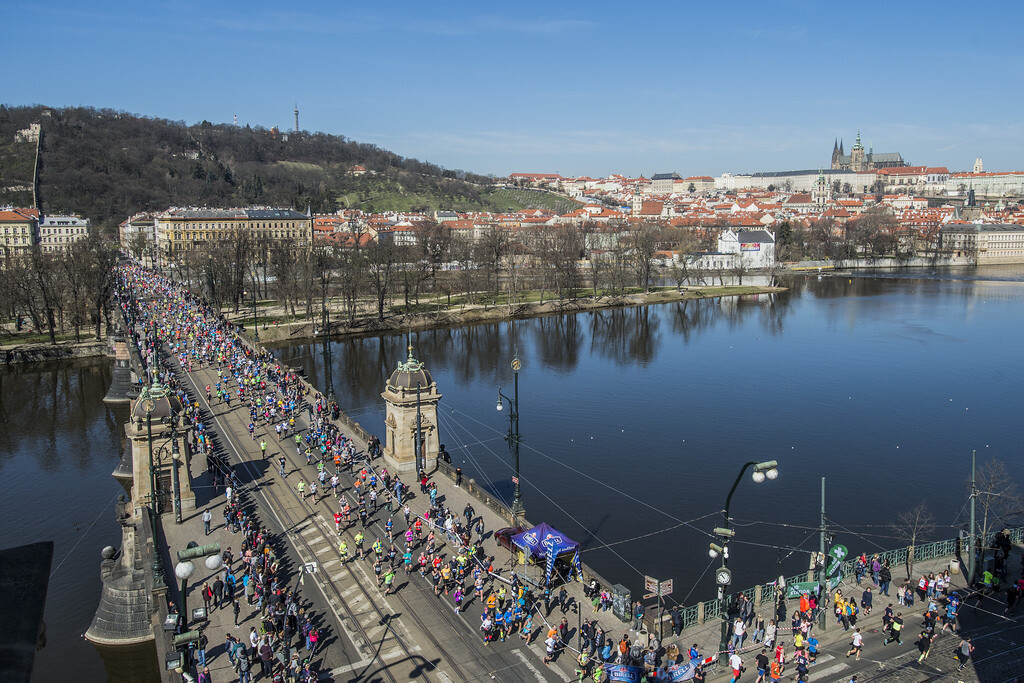
Last year, he shined at the half marathon in Valencia, where he was fourth with 58:28. Another athlete to watch for is Keneth Renju, placed just four places below (7 seconds) Kennedy and aiming at the podium.
The best Czech endurance runner, Jiří Homoláč (1:03:23) is going to keep pace with the rest of the field. The record of the Prague Half Marathon is held by Ethiopian Atsedu Tsegay, who in 2012 stormed through the course in a time of 58:47.
Among the women, Kenyan Irine Cheptai and Nelly Jepchumba and, especially, Brenda Jepleting are expected to fight for the top positions.
The Sportisimo 1/2 Marathon Prague which starts at 10:00 am on Saturday, April 2, after two years of Covid-19 related break, will send a strong message of peace.
Among other activities, the organizers plan to hand out symbolic bracelets in Ukrainian national colors before the start.
(03/31/2022) ⚡AMPPrague Half Marathon
Start the RunCzech season with one of the biggest running events in the Central Europe! Every year the Sportisimo Prague Half Marathon excites spectators with performances of elite athletes breaking records. Enjoy a course with incomparable scenery in the heart of historic Prague that follows along the Vltava river and crisscrosses five beautiful bridges. Take in majestic views of the...
more...Six back exercises for better running form, Runners tend to neglect their upper bodies, but strengthening the muscles in your back and shoulders can make you a more efficient runner
When runners go to the gym, they tend to focus on their lower bodies. You may not often think about how the muscles in your lower and upper back and shoulders contribute to your running performance, but strengthening these areas can go a long way in improving your running form and making you a more efficient, faster runner.
The importance of back strength for runners
Running is often regarded as a solely lower-body activity, but your upper body gets much more involved than you might think. Your back is particularly important because it keeps you upright, and having good posture helps you stay injury-free.

You need to be particularly strong in your mid and lower back as a runner to stabilize your spine and pelvis. This helps to more evenly distribute the forces that your body has to absorb with each step, which reduces your risk for injuries. It also improves your running economy by reducing any unnecessary body sway.
Having a strong back becomes even more important when you start increasing your weekly mileage. If your back is not strong as you increase your running volume, it can eventually cause tissue breakdown and injury in your hips and lower legs.

6 exercises for a stronger back
These six exercises work on your lower, mid and upper back to improve your posture and arm carriage and help prevent injuries. Try incorporating two or three of these exercises into each of your strength days to start reaping the benefits of back training.
1.- Renegade rows
Having a strong core is important for reducing lower back pain, so this exercise is a great option for runners because it targets your core and upper back at the same time. It also hits your glutes and quads, making this an excellent full-body move for runners.
2.- Shoulder protraction pushups
Shoulder protraction (or scapular protraction) push-ups strengthen the muscles in your shoulders and upper back, which help improve your arm carriage when your run. It will also improve your posture while running, which will help prevent your shoulder from hunching over as you fatigue. Like the renegade rows, this exercise also works your core, glutes and quads.
3.- Single-arm kettlebell swing
This is an excellent compound exercise that works your shoulders, back, core, hips, glutes and hamstrings. Make sure you perform these carefully with proper form, and start with a weight that’s not too heavy to avoid injuring yourself.
4.- Standing band pull apart
This exercise strengthens your shoulders while also working on their mobility, which will improve your arm carriage while running. Make sure you keep your core tight when you do this exercise, and avoid sticking your chest or neck out as you pull the band apart.
5.- One arm, one leg cable row
This exercise also works on your back, hips, glutes and hamstrings, and challenges your stabilizer muscles by forcing you to stand on one leg. Remember to pull your shoulder blades down and back with each row.
6.- The cobra
This exercise very specifically targets your lower back and core muscles. The goal is to slowly move your hands toward the ceiling by contracting the muscles at the base of the shoulder blades until your arms reach shoulder height. Hold for three to five seconds before returning to the starting position.
(03/31/2022) ⚡AMPby Brittany Hambleton
World Record Holders, Olympians, National Champions set to Race B.A.A. 5K
The B.A.A. 5K and B.A.A. Invitational Mile will make a triumphant return to Patriots’ Day weekend, with professional fields featuring world record holders, Olympians, Paralympians, national champions, and local standouts. Held on Saturday, April 16, the B.A.A. 5K and B.A.A. Invitational Mile will kick-off festivities leading up to the 126th Boston Marathon on April 18.
“The B.A.A. 5K and B.A.A. Invitational Mile are two events entrenched in the fabric of Boston Marathon weekend, and each features a field which will lead to fast competition,” said Tom Grilk, President and Chief Executive Officer of the B.A.A. “With three years having passed since our last in-person edition of these races, we’re eager to return to the roads to crown champions.”
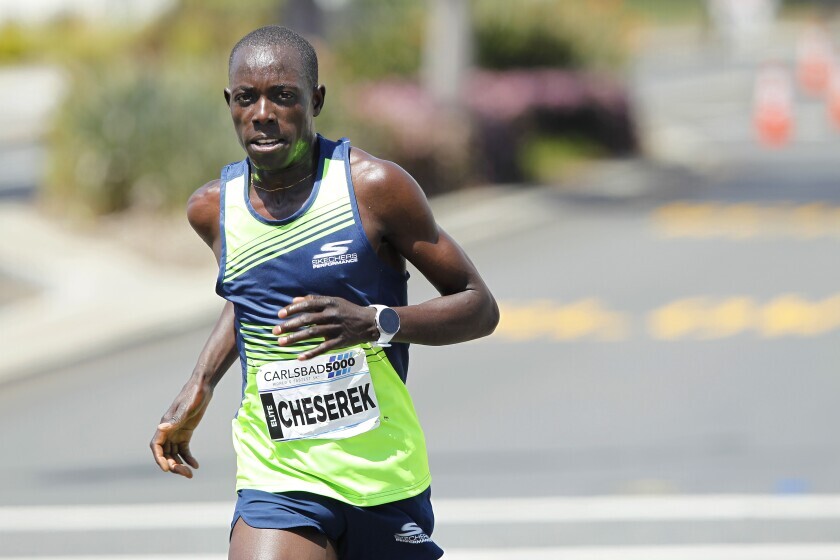
In the B.A.A. 5K, Ethiopia’s Senbere Teferi will make her Boston road racing debut. A two-time Olympian and two-time World Athletics Championships silver medalist, Teferi holds the women’s-only 5K world record of 14:29. She’ll be up against recently crowned American marathon record holder Keira D’Amato, 2021 U.S. Olympians Emily Sisson and Rachel Schneider, reigning U.S. 5K national champion Weini Kelati, and B.A.A. High Performance Team member Erika Kemp. The B.A.A. 5K course and American record of 14:50 –set by Molly Huddle in 2015—could very well be in jeopardy.
On the men’s side, 2019 B.A.A. 10K champion David Bett and 17-time NCAA champion Edward Cheserek, both of Kenya, will square off against New Zealand 5,000m indoor national record holder Geordie Beamish and 2021 U.S. Olympians Mason Ferlic and Joe Klecker. Stanley Kebenei, a World Athletics Championships finalist in the 3000m steeplechase, will also be part of the strong American charge. The B.A.A. 5K course and American record is 13:20, established by Ben True in 2017.

Boston Marathon wheelchair division champions Marcel Hug, Daniel Romanchuk, and Joshua Cassidy will all compete in the B.A.A. 5K less than 48 hours in advance of racing the 126th Boston Marathon. Vanessa de Souza, Shelly Oxley-Woods, and Jenna Fesemyer are top women’s wheelchair entrants.
Following the B.A.A. 5K, the B.A.A. Invitational Mile will take center stage on Boylston Street. U.S. Olympian, Bostonian, and reigning indoor 1,500m national champion Heather MacLean will race for the first time on the three-lap course that finishes at the Boston Marathon finish line. Among her competitors are B.A.A. High Performance Team member Annie Rodenfels, 2019 runner-up Emily Lipari, and Great Britain Olympian Katie Snowden. MacLean and Rodenfels won’t be the only Massachusetts residents toeing the line, as Belmont High School standout Ellie Shea will race among the professionals. Shea ran 9:08.54 for 3,000m during the indoor season, a time that stands as No. 5 on the all-time high school list and is a Massachusetts state record.
Shane Streich, fresh off an indoor American record at 1,000m, will lead the American men in the B.A.A. Invitational Mile along with 3:54 miler Colby Alexander. Neil Gourley of Great Britain is entered, as are Canadian William Paulson, the 2019 Pan-Am 1500m bronze medalist, B.A.A. racing team member Kevin Kelly of Ireland, and local standout James Randon of Rhode Island.
A complete professional field list for the B.A.A. 5K and B.A.A. Invitational Mile can be found below. Preceding the professional divisions of the B.A.A. Invitational Mile will be a scholastic mile and middle school 1K featuring student-athletes from the eight cities and towns along the Boston Marathon route. Entries for the high school and middle school events will be available on race weekend.
2022 B.A.A. 5K WOMEN’S FIELD (NAME, COUNTRY, ROAD 5K PB, TRACK 5000M PB)
Carmela Cardama-Baez, Spain, N/A, 15:25.41 (NR)
Kim Conley, USA, 15:29, 15:05.20
Keira D’Amato, USA, 15:08, 16:09.86
Emily Durgin, USA, 16:05, 15:24.19
Annie Frisbie, USA, 16:35, 16:05.78
Sammy George, USA, 15:53, 15:19.66
Tori Gerlach, USA, 15:56, 15:44.13
Marielle Hall, USA, 15:08, 15:02.27
Elly Henes, USA, N/A, 15:03.27i
Emma Grace Hurley, USA, 16:13, 15:57.23
Katie Izzo, USA, 16:00, 15:41.33
Weini Kelati, USA, 15:18, 14:58.24
Erika Kemp, USA, 15:45, 15:10.10
Melissa Lodge, USA, N/A, 15:53.81i
Sharon Lokedi, Kenya, 15:48, 15:13.04i
Betty Sigei, Kenya, N/A, 15:37.80
Emily Sisson, USA, 15:38, 14:53.84
Rachel Smith (Schneider), USA, N/A, 14:52.04
Emma Spencer, USA, 16:41, 16:04.95
Susanna Sullivan, USA, 16:35, 15:42.59i
Senbere Teferi, Ethiopia, 14:29 (WR), 14:15.29
Abbey Wheeler, USA, N/A, 15:40.67i
2022 B.A.A. 5K MEN’S FIELD (NAME, COUNTRY, ROAD 5K PB, TRACK 5000M PB)
Eric Avila, USA, 13:55, 13:18.68
Geordie Beamish, New Zealand, N/A, 13:12.53i (NR)
David Bett, Kenya, 13:54, 13:06.06
Ben Blankenship, USA, 13:56, 13:33.07
Robert Brandt, USA, N/A, 13:19.11
Sam Chelanga, USA, 13:43, 13:09.67
Edward Cheserek, Kenya, 13:29, 13:04.44
Adam Clarke, Great Britain, 13:42, 13:39.21
Graham Crawford, USA, 13:54, 13:22.68i
Aaron Dinzeo, USA, 14:25, 13:58.37
Brandon Doughty, USA, N/A, 13:39.06
Mason Ferlic, USA, 13:52, 13:24.94
Sydney Gidabuday, USA, 13:53, 13:22.66
Eric Hamer, USA, 14:43, 13:29.60
Brian Harvey, USA, 14:01, 14:13.93
Stanley Kebenei, USA, 13:53, 13:45.87
Joe Klecker, USA, N/A, 13:06.67
Kasey Knevelbaard, USA, 13:56, 13:24.98i
Lawi Lalang, USA, 13:30, 13:00.95
Matt McClintock, USA, 13:49, 13:47.68
Tim McGowan, USA, 14:11, 13:54.20
Reuben Mosip, Kenya, 13:34, 13:50.80a
Charles Philbert-Thiboutot, Canada, 14:04, 13:22.44
Brian Shrader, USA, 13:57, 13:29.13
Zouhair Talbi, Morocco, N/A, 13:18.17i
Aaron Templeton, USA, 13:48, 13:39.39
Josef Tessema, USA, 14:05, 13:22.28.
(03/30/2022) ⚡AMPby Running USA
B.A.A. 5K
The B.A.A. 5K began in 2009, and became an instant hit among runners from far and wide. Viewed by many as the “calm before the storm,” the Sunday of Marathon weekend traditionally was for shopping, loading up on carbohydrates at the pasta dinner, and most importantly- resting. But now, runners of shorter distances, and even a few marathoners looking for...
more...Half-marathon workout: the fitness elevator, This challenging fartlek-style workout will get you ready to run 21 Kilometers
If you’ve got a half-marathon on the calendar this spring, you should include a “fitness elevator” workout in your training schedule. A fun twist on a fartlek session, this workout has you progressively getting faster to practice running on tired legs — a must if you want a strong finish after running 21 kilometers.
The fitness elevator
The purpose of this seven-to-one workout is to progressively get faster as the intervals get shorter. So, you should start the first seven-minute section at roughly your goal half-marathon pace, or a bit slower. Pick up the pace with each subsequent interval so that by the time you reach the two-minute and one-minute sections, you’re moving at approximately 5K pace.

The recovery period between each interval should be half of the interval that preceded it, so after the seven-minute section you take 3:30 rest, after the six-minute section you take 3:00 rest, and so on. You should aim to do a very slow jog during your recovery periods, but as the pace gets quicker, you may need to slow even more to a walk.
This is a fairly big workout (the actual workout portion without warm-up and cool-down should take more than 40 minutes), so is better suited to a more experienced runner. If you are a relative beginner and this is your first half, you can shorten the workout by starting from the five-minute mark instead, but make your warm-up and cool-down slightly longer.

The workout
Warmup: 10-20 minutes easy jog, followed by form drills and strides
Workout: 7 min/3:30 rest; 6 min/3:00 rest; 5 min/2:30 rest, 4 min/2:00 rest; 3 min/1:30 rest; 2 min/1 min rest; 1 min
Cooldown: 10-20 minutes easy jog, followed by light stretching
(03/30/2022) ⚡AMPby Brittany Hambleton
How to Qualify for the Boston Marathon
So you want to qualify for the Boston Marathon? You’re not alone. As an age-group or recreational runner, it’s one of the noblest (and most common) goals to set your sights on.
The history and prestige of the Boston Marathon are unparalleled in the world of running, which is why getting the opportunity to run the famed 26.2-mile route from the start in Hopkinton to the finish line on Boylston Street in downtown Boston is a top-shelf bucket list goal for many runners.
And rightly so. With the challenge it requires to qualify, the experience of running Boston is all that and more.
6 Tips on Qualifying for Boston

For most age-group runners, qualifying for Boston isn’t a simple task. Every athlete’s journey to trying to earn a Boston-qualifying time (BQ) is unique, and your approach needs to be specifically catered to who you are as a runner. And, like with all things running, there are no shortcuts for earning a BQ—but there are some key points to consider on your quest.
1. State Your Intention.
If you’re truly interested in qualifying for Boston, it’s a good idea to make it one of your primary goals (both in running and in life) so you can focus as much energy as possible toward it and take a smart and healthy approach to achieving it. That doesn’t mean you have to post it on Instagram, but it’s something you should share with your significant other, family members, and running buddies to generate long-term excitement and support as well as keeping you accountable on your journey.
Every age group has a different qualifying time that needs to be attained in a two-year window prior to registration opening in the fall prior to the next race the following April. For women, the age groups and times are:

18–34: 3:30.00 (3 hours, 30 minutes, and zero seconds)
35–39: 3:35.00
40–44: 3:40.00
45–49: 3:50.00
50–54: 3:55.00
55–59: 4:05.00
60–64: 4:20.00
65–69: 4:35.00
70–74: 4:50.00
75–79: 5:05.00
80 and over: 5:20.00
Men
18-34: 3 hrs 00 min 00 sec
35-39: 3 hrs 5 min 00 sec
40-44: 3 hrs 10 min 00 sec
45-49: 3 hrs 20 min 00 sec
50-54: 3 hrs 25 min 00 sec
55-59: 3 hrs 35 min 00 sec
60-64: 3 hrs 50 min 00 sec
65-69: 4 hrs 5 min 00 sec
70-74: 4 hrs 20 min 00 sec
75-79: 4 hrs 35 min 00 sec
80 & over: 4 hrs 50 min 00 sec
There’s also the added complication that just hitting the time doesn’t guarantee entry to the race. Runners typically need to also meet faster cut-off times if registration exceeds the race capacity (see tip #6).
“It’s a great goal and a very relevant goal for a lot of a marathoners,” says New York City–based running coach Elizabeth Corkum. “When it’s your first Boston, it’s a big deal and definitely something you should be excited about.”
2. Set a Realistic Goal
For many runners, it takes a full year or two—or maybe even five or more—to develop the aerobic strength and overall fitness to be in position to reach the qualifying time in your age group.
The first step: Understand that the path to running fast enough to earn a BQ standard isn’t a quick process of instant gratification.
“A lot of runners will come to me and say I want to qualify for Boston this year because a lot of runners are always eager to do it now, but the reality is that it might take a few years,” says Chicago-area coach Jenny Spangler, who won the 1996 U.S. Olympic Trials Marathon. “It’s a great goal for many people, but it’s a commitment and you have to be realistic about where you are and where you need to get. For some runners, it will take a while. Sometimes I’ll have runners aim for running a fast half marathon first and then next year start to focus on a fast marathon.”
If you’re serious about qualifying for Boston, it’s best to connect with a coach or local training group that has a history of helping runners achieve a BQ. You’ll want to find a coach who will take into consideration both your history as a runner and as an athlete as well as your current fitness level, previous races, monthly mileage volume, injury history, and, perhaps most important, your ability to commit to a complicated training program amid your work-life balance.
“You don’t like to discourage anyone, but a Boston qualifying time is hard,” Spangler says. “So for people who can’t commit the time for training or maybe just don’t enjoy running or don’t want to put in the mileage, it might not be possible. It’s a commitment and it’s just not for everybody.”
3. Pick a Qualifying Race
One of the keys to qualifying for Boston is running a fast, USATF-certified course with a high probability of running your goal time. Typically, the races with the most qualifiers are the New York City Marathon and the Chicago Marathon, and, of course, Boston itself, but that’s largely based on the volume of runners in those races. However, those marathons can be hard to get into, so unless you already secured an entry, you should plan on another race with a high propensity of Boston-qualifying times.
One of the best options is the California International Marathon (CIM), where 25 to 35 percent of the field typically earns a BQ. The only challenge about qualifying at CIM is that it’s held the first Sunday in December, so you’ll have to wait and enter for the next Boston Marathon 16 months later.
Another great option among mid-sized races is the mid-June Grandma’s Marathon in Duluth, Minnesota, which typically has both a large number of qualifiers and a relatively high percentage of BQers. In 2019, 1,108 of its finishers (18.2 percent) earned BQ qualifiers. From 2010-2021, an average of 15.8 percent of Grandma’s finishers earned BQ times.
“Usually when people come to me, they already know which race they want to run,” says Nell Rojas, a Boulder, Colorado–based professional runner for Adidas who also coaches age-group runners. “But if not, I usually recommend California International Marathon or Grandma’s Marathon, which are fast marathons that are easy to get into with a lot of people that will be running their same speed. And that’s key because that means there will be people to run with at the pace you want to run the whole way.”
Since 2017, some of most prevalent qualifying races have been “last chance” races designed to get runners qualified right before the opening of Boston registration in mid-September. The Last Chance BQ.2 race in Grand Rapids, Michigan, has had an average of about 60 percent BQ’ers every year since 2015, while its sister event, Last Chance BQ.2 race in Geneva, Illinois, has typically had at least 50 percent of its field qualify. But both of those races are small, usually 350 runners, and registration fills up fast every spring. (The Geneva race added a spring race in 2018 and it has also typically had a 50 percent qualifying rate.)
Other small, early September races with high BQ percentages include the Erie Marathon at Presque Isle (Erie, Pennsylvania), Via Marathon (Allentown, Pennsylvania), and Tunnel Light Marathon (North Bend, Washington). A few key marathons with downhill profiles and high qualifying percentages are the St. George Marathon (St. George, Utah), Revel Big Bear Marathon (Big Bear, California), and Mountains 2 Beach Marathon (Ojai, California). Cities with mid-sized marathons that are known to have good courses for qualifying: Philadelphia; Indianapolis; Houston; Eugene, Oregon; and Santa Rosa, California.
4. Get Some Super Shoes
If you’re interested in maximizing your race-day performance, then you should consider investing in a pair of shoes enhanced with carbon-fiber plates. Yes, they’re expensive, ranging in price from $180 to $275, but the technology works—and can give you 3 to 6 percent advantage over shoes with typical foam midsoles. Nike, Adidas, Skechers, ASICS, On Brooks, HOKA, New Balance, and Saucony all make super shoes, and some of their models are among the best. But each fits and feels slightly different, so visit a local running store, if possible, and try on several pairs before buying.
“Super shoes definitely allow you to run faster,” says ASICS-sponsored pro Emma Bates, who was second at the 2021 Chicago Marathon in 2:24:20 wearing a pair of ASICS Metaspeed Sky. “I love them because they’re so comfortable, but the biggest thing is that I feel that I can recover so much quicker after a workout or a race. After Chicago, I felt like I could do a workout the next weekend. That’s insane. I love the shoes and would never imagine running in anything else ever again.”
5. Train Methodically and Consistently
Going through significant training adaptations is a key part of the process for most runners, especially if they’re new to the sport or don’t have a lot of experience with the various types of workouts in most marathon build-ups. Progress occurs based on how well you handle training volume, how much you recover, and how much time and focus you put toward non-running elements like strength work, nutrition, and rest.
“All of those things factor into how you’re going to direct someone to get to that goal, and it’s different for everyone, for sure,” Corkum says. “Some people have all the time in the world to train and that’s fantastic because we can probably stress their bodies a little bit more with training, knowing that they can rebound. But someone who is only able to sleep four hours a night and has a newborn at home, they already have that additional stress so they have to be careful about adding training stimulus so they don’t get injured or burn out.”
Most coaches recommend going through a 16-week training plan to build up to a marathon, though it could be shorter if you’re already pretty fit or longer if you need more time to get used to the rigors of high-mileage running. A good plan will include periodized segments that include two to three weeks of gradual building of aerobic fitness followed by a slightly relaxed week to allow for recovery and the training adaptations to take place.
Depending on your background and fitness, you’re likely going to be running between 50 and 80 miles per week during the peak weeks of your training plan, Rojas says. While pro runners run between 100 and 120 miles per week, she warns that excessive running volume for age-group runners can lead to fatigue, burnout, and injuries.
A training plan should include a once-a-week long run, one or two faster workouts like a tempo run or an interval session, and several recovery runs. As the training plan progresses, there will be a greater emphasis on up-tempo workouts and your long runs will approach 18 to 22 miles and start getting faster.
But even if you’re following a plan that’s the same or very similar to your running partner’s, your quest to reach a Boston qualifying time will be an individual one.
“Runners come from all different levels of fitness,” Rojas says. “It all depends on what a runner can handle, what their strengths are, what their weaknesses are.”
Spangler says most age-group runners who come to her for help in achieving a Boston qualifier typically need more mileage than intensity in their training, but sometimes it’s both. In addition to ramping up mileage gradually, she’ll sprinkle in spicier workouts like fartlek intervals or hill repeat sessions—as much as she thinks an athlete can handle.
She’ll also prescribe periodic longer tempo runs of 8 to 10 miles at marathon race pace and often have them race a half marathon midway through their training program as a way to gauge a runner’s fitness and boost confidence.
“You can just kind of see how they’re starting to handle workload hitting the paces of the workouts they’re doing and feeling good doing it,” Spangler says. “That’s when you start to get a sense that they’re going to be ready, and that’s when I start getting confident they’re ready to handle the marathon at that pace.”
6. Don’t Get Discouraged
Even if you’re well trained and in the best shape of your life, you need everything to go right on a race day to run your best. Achieving a Boston Marathon–qualifying time can take several years and, if you miss it once or twice, it can start to feel like a never-ending process. Unfortunately, even when you achieve the time, you still might not be able to run the race. Because of field size limitations and increased interest, runners usually need to also meet faster cut-off times than the time listed in tip #1 to get in.
While every runner who applied for the 2022 race was granted entry—likely because of a downturn in interest because of the still-lingering COVID-19 pandemic—in the previous 10 years runners needed to be 1 minute, 2 seconds to 7 minutes, 47 seconds faster than their qualifying time to get in. Depending on the year and the volume of qualified runners, that’s meant that the BAA has had to reject between 1,947 and 9,215 qualified runners.
“It’s such a tough thing and to recreational runners, I think it’s a bit jarring because they’re not used to that,” Corkum says. “One of the beautiful things about Boston is that it’s one of those few marathons where you can’t just send in your credit card number and know that you have it on your calendar. You have to earn it. But the other side of that is the emotional investment and highs and lows that you’re accepting along with it.”
Developing an indefatigable sense of optimism and a love for running will be helpful in your quest to qualify for the Boston Marathon and eventually running it. There will be plenty of hiccups along the way (missed workouts, injuries, life events) so it’s best to make it part of the fabric of your life and not merely a box to check off, Corkum says.
“Running is a patient person’s sport and I think that’s why you really have to love it,” Corkum says. “I think some people might not necessarily love running but they love the idea of achieving ‘that thing,’ and you have to realize there are so many hours and steps that go into making it a lifelong thing, and for a lot of us it becomes that.”
(03/30/2022) ⚡AMPby Brian Metzler
Boston Marathon
Among the nation’s oldest athletic clubs, the B.A.A. was established in 1887, and, in 1896, more than half of the U.S. Olympic Team at the first modern games was composed of B.A.A. club members. The Olympic Games provided the inspiration for the first Boston Marathon, which culminated the B.A.A. Games on April 19, 1897. John J. McDermott emerged from a...
more...Tips for handling your nerves in your first race back
As we move into April and May, many spring road races are back for the first time in years, and most runners will take their first start line since before the pandemic. It’s normal to be nervous before a race, but this spring, runners are even more nervous than usual, since it has been a very long time since most of us raced. Here are some tips on how to handle those bigger-than-usual nerves at your spring races this year.
The reason you are nervous is that your sympathetic nervous system (SNS) is kicking in, which is one of two components of the body’s central nervous system. Your SNS releases two hormones in response to high-stress situations–epinephrine and norepinephrine (also known as adrenaline and noradrenaline), which result in that feeling of having butterflies in your stomach, and they can help your body perform better during sport.

According to research, these nerves help your reflexes become faster and improve your circulation. However, there are some bad sides to an SNS response, which can result in diarrhea, cramping or irritable sweating, which can hinder your athletic performance.
Being a little nervous can be a good thing, but there are a few ways you can minimize some of the pre-race jitters.

1) Be prepared
The key to minimizing nerves and success on race day is in the months and weeks leading up to the race. You want to be able to stand at the start line and tell yourself that you’ve done your best to prepare yourself to be ready. This doesn’t only mean training, it means proper rest and eating/hydrating well in the weeks before the race. Remember that it’s extremely rare to have a good night’s sleep the night before a big race, but as long as you’re reasonably well-rested leading up to that night, don’t worry about losing sleep the night before the race.
2) Remind yourself that you’re ready
The most important thing you can do for your mental game before taking the start line is to remind yourself of all the work you have put in. Look through your training history the night before or the morning of–revisit workouts from your training block to remind you that you’ve put in the work and that you’re ready to go. Knowing that you’re ready might not free you of all nerves, but it should reassure you that you’ve completed all the hard work necessary to do well on the big day.
3) Focus on yourself
It’s easy to compare yourself to your friends or training partners, or all other runners there at the race. Do yourself a favor and don’t pay attention to them until the race begins. You can’t control how well they run, so why worry about them before the race starts? Not worrying about others and doing your own thing will make your race experience more worthwhile.
4) Wait to take the start line
If you’re not already nervous, standing on the start line for 30 minutes before your race is scheduled to start is bound to make you anxious. Although you want to be on time, try to extend your warmup as close to the start as possible. How early you arrive at the start line depends on the size of the race, but generally, you’ll want to arrive five to 15 minutes before the start, to give yourself enough time to get a good spot.
Make sure you give yourself plenty of time to warm up and stretch before, as being rushed doesn’t help with anxiety.
5) Listen to music
Listening to music is another way to calm nerves and get yourself in the zone before a big race. Create a playlist of your favorite pump-up or running songs to get your blood flowing. Many athletes will use music as motivation to boost their adrenaline before the competition.
If you usually get nervous and haven’t listened to music on your runs before, try it out and figure out what works best.
5a) Have fun
Win or lose, make the most of your experience and have fun. There’s no need to take things too seriously or put too much pressure on yourself.
(03/30/2022) ⚡AMPby Running Magazine
Try this if running feels too hard
If you're just starting to run or coming back from an injury or a hiatus, you might feel excited, determined, or anxious to get going. You might tell yourself, "I'm going to do this. I'm going to get myself out there and run three or four times a week!"
ChiRunning has good news. Running is for everyone, no matter your experience, age or size. It doesn't have to be hard, and it doesn't have to hurt. You can reach your fitness goals without getting sidelined by pain or injuries. Many beginning runners need to work up to a run-only program, and the ChiWalk-Run approach is a great way to get started.
Start Where You Are with ChiWalk-Run

If you can't run a mile or even a minute, don't think running isn't for you. Walk-run is a series of short runs interrupted by very short walking breaks. Because the walking and running segments are relatively short, they're easy to do, and they help build your cardio-aerobic conditioning so you can gradually phase out your walking breaks.
ChiWalk-Run takes it a step further by teaching you how to walk and run to make your workouts feel easier, prevent pain, and reduce impact to lower your risk of injury. Here are a few tips to get you started.

Practice Your Posture
Before every workout: Stand tall. Imagine a straight line running vertically down your body. Line up your shoulders, hips, knees and feet. Engage your core slightly so you feel a light tension in your lower abs. Relax all your other muscles as much as possible.
Begin With a Warm-Up Walk
Shift into a brisk walking pace when you're ready. You should feel your breath rate increase, and your arms should swing faster along with your legs.
Keep your stride short as you increase your walking speed.
Don't land hard on your heels. Try to land softly and practice "peeling" your feet off the ground when you take a step.
Walk at this brisk pace for five to eight minutes.
Practice ChiRunning Technique
When you're ready to move into a jog:
Check in with your posture to make sure you're aligned well.
Keep your shoulders relaxed and low.
Lean forward slightly from the ankles and lead with your upper body. Keep your core engaged so you don't bend at the waist.
Begin with a slow running pace.
Keep your stride short and relax your legs as much as possible.
Always strive to make it easy. Run this way until your breath begins to feel labored (like you can't quite get enough air), then drop back into a brisk walking pace until your breath recovers to an acceptable range.
Improve Your Aerobic Conditioning
Before you begin running again:
Let your breath rate return to almost normal.
Don't let your heart rate slow all the way down to normal.
Listen to your breath more than your heart (the exception to this would be people with known heart issues).
As you start running again before your heart rate completely recovers, you'll strengthen your heart and improve its ability to pump more oxygenated blood to your legs.
It's important that once you feel your breath almost recovered that you lean forward again and break into a comfortable, easy running pace. Repeat this cycle of running and walking as many times as feels comfortable.
Eventually Drop the Walk Breaks
As you become more conditioned, you should notice your running segments gradually getting longer and your walking breaks getting shorter. You'll most likely feel more energized during your workouts as well. As you continue to progress, phase out your walk breaks entirely.
If you prefer to follow a structured program that tells you exactly how long to run and walk, check out the 5K ChiWalk-Run training program. Every workout gives you technique instructions to help you reduce pain and injuries, and make running and walking easier.
(03/29/2022) ⚡AMPby Danny Dreyer, Creator and Founder of Chi Running
Nine ways to improve your running tecnique
1.- Don't Run Heels First
Avoid striking the pavement with your heels—save that for your power walks. "When you walk, you keep one foot in contact with the ground, while running has a moment of weightlessness in the stride," says Alex Figueroa, a running coach and creator of Priority1 Wellness in Miami Beach. Running with a heel landing can contribute to back and knee pain.
2.- Do Land on the Midsole of Your Foot

Landing on your forefoot (instead of your heels) allows your muscles to catch the weight of your body in flight, reducing the effects of impact on the joints and bones.
3.- Don't Use a Long Stride

Leaping forward while you run is inefficient and an energy drain. Instead, stand tall and lean forward, and when you feel like you are going to fall, step forward just enough to catch yourself. This should be the length of your stride. It takes less energy to fall than to reach your foot in front of you.
4.- Do Take Short Effective Strides
Less motion through the joint means less wear and tear and improved efficiency during your runs, says Figueroa. Using a shorter stride reduces the movement within any joint (for running, this means the joints of the ankles, knees, and hips), and less movement means a longer, healthier life for these joints.
5.- Do Invest In Barefoot Running Shoes
“When it comes to support, less is more," says Figueroa. Build up to wearing shoes with minimal support, like NIKE Free or Vibram Five Fingers, to help strengthen and develop the natural muscular support in your foot and ankle. But don’t toss your sneakers just yet – slowly begin by running, one block at a time, with less support to gradually strengthen the muscles in your feet. Developing foot strength can help make everything stronger, including your ankles, knees, hips, and lower back
6.- Don't Run as Hard As You Can
Many runners think if they can run fast, they are running efficiently, which isn’t the case. In fact, Figueroa recommends runners slow down to learn how to run farther, faster. “Slow down and wear a heart rate monitor to train smarter, not harder," suggests Figueroa. Set your heart rate monitor to keep your running at a desired pace, and then don’t exceed that set pace. Your body will adapt, and then you’ll be able to run more comfortably at this pace, meaning you will be able to run faster without pushing any harder.
7.- Do Work Up to Running Farther, Faster
Build your run one block, or one minute at a time, says Figueroa. Walk between running intervals and recover actively. You can work on speed or form and technique during your “work intervals" and then recover with an easy jog or power walk in between. Interval training can provide you with faster results in the same amount of time.
8.- Don't Get Stuck on the Odometer
Running three, five or even 26 miles doesn't really tell you if there is any progress in your run, says Figueroa. Instead, track the amount of time that you're running and monitor your intensity using a heart rate monitor.
9.- Do Run for Time
Try to improve covering the same distance in less time. For example, set your workout to run for 30 minutes and see how much distance you can cover instead of running for four miles harder than you can safely run, suggests Figueroa. The more you train, the easier your runs will become. You can either cover the same distance with greater ease, or maintain the same intensity and run farther in the same amount of time.
(03/29/2022) ⚡AMPby Jessica Smith
Defending champion Leonard Langat will run against Derara Hurisa and Mekuant Ayenew at the Vienna City Marathon
Two defending champions will both be returning to the Vienna City Marathon on April 24th: Kenyans Leonard Langat and Vibian Chepkirui.
While some elite women’s contenders were released earlier, organisers now confirmed a number of male competitors.
There will be unprecedented depth in Vienna’s men’s elite field with five athletes featuring personal bests of sub 2:06. This group is led by Ethiopia’s Mekuant Ayenew who has a PB of 2:04:46. Additionally the Vienna City Marathon will feature a rematch between Derara Hurisa of Ethiopia, who had crossed the line first last year but was then disqualified for inadvertently wearing an illegal racing shoe, and Leonard Langat.

Well over 27,000 runners have so far registered for Austria’s leading road race, including entries for shorter running events. Online entry for the 39th Vienna City Marathon, which is a World Athletics Marathon Label Road Race, is still possible at: www.vienna-marathon.com
“Elite racing forms a thrilling part of our event. These runners bring high quality performances and often emotional stories to our race,” said Race Director Wolfgang Konrad. “We are very happy to welcome back both winners from last year to Vienna. And we keep our fingers crossed for Derara Hurisa, who will also return.”

In unusually warm conditions Derara Hurisa became the first athlete being disqualified for wearing an illegal shoe in a major city marathon last September in Vienna. The Ethiopian, who has a personal best of 2:08:09, crossed the line first in 2:09:22. However it appeared the he wore shoes that have a sole thickness of five centimeters while a maximum of four is allowed. Derara Hurisa had chosen the shoes for the race because he used them in training and thought they were within the rules. The athlete looked upset and distraught when he learnt about the disqualification and will be eager to take his second chance when he returns to Vienna. Though he was happy to become the winner it was not the ideal scenario for Leonard Langat as well. “Of course I would have preferred to have broken the tape,” said the Kenyan, who improved his PB to 2:09:25 in Vienna last year.
Such is the strength of the elite field this time that both runners might have to improve their personal bests quite significantly if they want to be in contention for victory on 24th April. With a personal record of 2:04:46 Mekuant Ayenew is the second fastest runner ever entered into a Vienna City Marathon behind former world record holder Dennis Kimetto (2:02:57). The Kenyan did not finish the 2018 race. Mekuant Ayenew, who won the Sevilla Marathon 2020 when he clocked his PB, heads the start list.
The other four athletes with personal bests of sub 2:06 are Goitom Kifle of Eritrea (2:05:28), Bahrain’s Marius Kimutai (2:05:47), Oqbe Kibrom from Eritrea (2:05:53) and Ethiopian Abdi Fufa (2:05:57). While Kimutai was the winner of the Rotterdam Marathon in 2017 Kifle achieved a notable 14th place in the Olympic marathon in Sapporo last summer.
The group of leading runners look to be in a perfect position to target the course record of the Vienna City Marathon. Ethiopia’s Getu Feleke established this mark when he won the race with 2:05:41 back in 2014.
(03/29/2022) ⚡AMPVienna City Marathon
More than 41,000 runners from over 110 nations take part in the Vienna City Marathon, cheered on by hundreds of thousands of spectators. From the start at UN City to the magnificent finish on the Heldenplatz, the excitement will never miss a beat. In recent years the Vienna City Marathon has succeeded in creating a unique position as a marathon...
more...This sprint workout will help you get faster in your 800m to 10k race
With spring weather on the horizon, outdoor tracks are beginning to open up for runners wanting to do interval training. If you are looking to test your speed coming off winter training, we have the ideal workout for you. This short sprint workout will build your anaerobic capacity, increasing the size of the fast-twitch muscle fibres to prevent your muscles from getting lactic when running at faster paces. 5K runners: this workout will be your bread and butter for making sure your fast-twitch muscles are ready for a sprint finish during that final kilometer.
The workout:
Two sets of (six reps of 200 meters) with one-minute standing rest between reps and four minutes rest between sets.

The idea here is to do these reps at 15 to 20 seconds faster than your current 5K time. For example, if your current 5K time is around 25 minutes (5:00/km), try to do each 200m rep in 55 seconds. The pace of this workout can seem rather daunting at first, but the intention is to help you work outside of your comfort zone, building your anaerobic threshold as the workout evolves. If you choose to jog the rest, the workout will turn into a hard fartlek (which will make it harder than it already is).
Take the one-minute rest between reps and relax before starting the next rep. To get a feel of the pace look at your watch at the 100m mark on the first three reps, so you can get an idea of the pace you should be hitting instead of going out too fast.

During the four minutes rest between the sets, keep your heart rate up by walking a 400m lap and then proceed into the second set. As the workout progresses the rest will feel shorter and your ability to hold the pace will only become harder. An important thing to remember when doing any type of speed training, but especially during this workout, is to keep your upper body relaxed. This tip can be detrimental in conserving energy for later in the workout.
This high-intensity workout is great for all runners from 800m to 10K, who want to build sprint speed on top of their endurance base. Doing one of these workouts will help a little, but if you can implement a short-hard speed session like this into your training plan once a week over a month, you’ll begin to see benefits.
(03/29/2022) ⚡AMPby Running Magazine
Positive self-talk: does it really work?, The science behind positive self-talk is mixed, but many runners swear by it to get them to the finish line
The mental side of running takes just as much time to master as the physical side, and for most of us, it’s a continuous work in progress. Many runners like to use positive self-talk to get them through rough patches or to help them deal with pre-race nerves, but does this psychological strategy actually work? The research is mixed, but many runners will still argue yes.
Positive self-talk: mixed reviews
A 2013 study in the journal Medicine and Science in Sports and Exercise found that recreational athletes who took part in a positive self-talk program improved their time-to-exhaustion test results by 114 seconds, while those who didn’t participate in the program actually got worse.

Of course, this suggests that positive self-talk is a highly effective psychological tool, but since this study, many have pointed out its flaws. Time-to-exhaustion tests are much different than time trials, for example, which could skew the results.
Another 2018 study published in the journal The Sport Psychologist performed a similar test, this time with ultramarathoners completing a 60-mile race. In this case, the researchers found no significant difference between the two groups. So does positive self-talk actually work?

The power of your mind
The actual science of positive self-talk might be undecided, but many runners swear by it. There are so many factors that affect an athlete’s performance, making it nearly impossible to isolate how positive self-talk affects the outcome of a time trial or race. No amount of positive self-talk, for example, is going to prevent you from hitting the wall during a marathon if you’ve made fuelling errors during the race.
That doesn’t mean that you shouldn’t use positive self-talk during runs, workouts and races. In fact, using it during training may help you enjoy your training more. It may also help motivate you to get out the door when you don’t feel like it, or to do that last interval when you’re getting tired near the end of a workout, and the cumulative effect of pushing yourself over time likely will improve your performance on race day.
How to use positive self-talk
It can be challenging to silence the negative voices in your head when you’re struggling through a challenging run, so it’s important that you prepare for it before you even start. Just like you set intentions for your workout (today I’m doing intervals to work on my speed, or today’s long run is to improve my endurance for my goal race), you should plan to think positively before you start your run.
What do you want to tell yourself during your run? What are you going to do when negative thoughts creep in? Consider creating a mantra that you can use when the going gets tough, or coming up with some words of affirmation to bolster you when you feel like giving up.
These words and phrases don’t have to be long or complicated, as long as they work for you. Check out our advice for how to make a running mantra for inspiration, and start using positive self-talk to improve your runs and workouts, or at least, make them more bearable.
(03/28/2022) ⚡AMPby Running Magazine
Use these pre-run drills to improve your running form, Dr. Brittany Moran of The Runner's Academy shares the five-minute pre-run routine you need to improve your running technique
We don’t often think of running as a skill-based sport, but if you want to move well with power and efficiency, you have to practice the movements involved in running. We spoke with Dr. Brittany Moran from The Runner’s Academy in Toronto, who gave us a five-minute routine you can do before every run to perfect your running form.
Why are form drills important?

“Running is a skill, and therefore you need to learn how to run and practice it,” says Moran. “Think about tennis–you would never expect to just know how to play; you would learn. Running is the same.” She explains that running is a progression of marching, which is why form drills should mimic the marching movement.

The following pre-run routine takes no more than five minutes, but when done consistently before most of your runs, you’ll begin to see significant improvements in your running form. Not only will this make you more efficient (and therefore faster), it will also help prevent some injuries.
Moran points out that it’s important to be deliberate when performing pre-run drills, and that you pay close attention to your form so that you’re doing the drills properly. She adds that using the appropriate cues is important, and encourages runners to focus on external cues (like march and piston) rather than internal (telling yourself to keep your knees up).
Finally, Moran says runners need to also practice proper running form during their runs, and encourages runners to dedicate one run per week in which they spend time focusing on their technique. She suggests spending one minute every kilometer being deliberate and slightly exaggerated with your form.
(03/28/2022) ⚡AMPby Brittany Hambleton
Tips for Running Your First Marathon
Marathons are incredibly challenging, especially to those who haven’t been in the fitness industry for long. While marathons are generally safe, there are people who have died in these events. This should already be enough cause to take marathons seriously, and to prepare for them properly.
The Notorious 1904 Olympic Marathon
There are plenty of things that can go wrong during a marathon, and no other marathon has had such a bad course as the Olympic Marathon in 1904. This particular marathon was held in St. Louis, United States on August 30, 1904. Three people almost died while running the 24.85 mile race.
One runner was nearly chased down by wild dogs, while another had been given rat poison (strychnine) and brandy to complete the marathon, after which he had lost eight pounds and could barely walk. The third runner was found unconscious by the side of the road with severe internal injuries that could have killed him had he been found an hour later.
The roads weren’t closed, which meant that runners had to dodge busy streets and all of the dangers that came with them. What’s arguably worse is the fact that the winner of the marathon finished the race by riding a car and then running to the finish line. He would later admit to the act, for which he was disqualified for.
The event was deemed the worst olympic marathon in history. It was even almost enough to cause the Olympic board to completely remove marathons from its list of sporting events. While modern marathons are far less dangerous that the 1904 marathon, this shouldn’t be a reason to be complacent. Running a marathon is a serious undertaking, which is why it’s important to know how to prepare for a race.
Wear the Right Clothing
Make sure that your clothing is appropriate for the weather conditions that you’re going to be facing. Cotton should generally be avoided because it’s going to absorb your sweat, which will weigh you down. Performance clothing are made of moisture-wicking material that helps keep runners dry. If you’re running on a hot course, opt for breathable fabrics. If you’re running in cold weather, stick to heat-retaining fabrics. Don’t forget to prioritize comfort as well.

Choosing Your Running Shoes
It’s important to know the terrain that you’re going to run on before buying your running shoes. Some shoes are tailored for road running, which maximize the bounce from your heel strikes, while other shoes are better suited for trail runs, which come with more durable outsoles that are designed to cushion your feet against rocks and other sharp objects.
It’s also important to train with the shoes you intend to race with. This gives your feet the time to adjust to the fit of the shoes. Changing shoes on race day can yield disastrous results, as they may turn out to be uncomfortable and unusable.

Come Up With a Nutrition Plan
A nutrition plan is what’s going to keep you fueled during training and after your marathon. For similar reasons, it’s important to avoid eating any new food on race day as you aren’t sure how your body is going to react to the food. Everything you plan to eat during race day needs to be tested during the days leading up to your race. This will help keep you from requiring unscheduled bathroom breaks, which will significantly hurt your target time.
Learn to Identify Good and Bad Pain
While pain is a natural byproduct of any rigorous physical activity, there are some types of pain that could represent a much more serious problem in the body. All types of pain are indicative of damage in the body. However, some pain should be treated as an emergency.
Dull pain that occurs a few hours after a training session can be attributed to delayed onset muscle soreness (DOMS). This is harmless and is a natural part of strengthening your body.
However, if the pain you feel is sharp and immediate, you need to stop everything you’re doing and to have your affected muscle checked by a doctor because sharp and immediate pain will almost always be indicative of an injury. Ignoring this type of pain can cause further damage to your body, which can further complicate the injury and may even cause irreparable damage.
On the other hand, there are pains that every marathon runner must endure. This pain can be mitigated through disciplined training where the body builds tolerance to the pain it experiences.
Plan for Post-Marathon Recovery
Pain occurring before, during, and after a marathon is normal, but it’s also important to help alleviate soreness and fatigue. The goal here is to recover from the marathon so that you’re able to return to your original functions. Changing into warm clothes first thing after a marathon will help keep you from getting sick.
It’s also important to restore your lost fluids. Generally, you’re going to need about 500ml per hour after your race. Stretching and rolling out your muscles will help relieve muscle soreness and will facilitate blood flow, which is essential to allow the body to distribute much-needed nutrients to your muscles.
Finally, it’s important to increase your food intake to aid in rebuilding your muscles. This will not only help you prepare for your next training session. It will also help support the strengthening of your body as your muscles become denser and stronger as they are rebuilt repeatedly with fresh muscle fibers. On average, you burn about 2,600 calories over 26.2 miles. This is also one reason why running is an effective exercise to help you burn fat. The farther the distance, the higher the burn rate. Use this information to determine how much more food you need to eat.
Running a marathon is never easy. Due preparations must be made not only so you can finish your race, but also so you can avoid unnecessary injuries.
(03/28/2022) ⚡AMPEthiopians Fikre Bekele and Adugna Dalasa made a big win in the 2022 Rome marathon on Sunday
The eternal Italian city of Rome hosted over 11 thousand runners, including 5 thousand foreign runners from 102 countries for the 27th International Rome Marathon on Sunday, March 27, 2022.
Ethiopian runners Bekele Fikre Tefera and Dalasa Sechale Adugna won the 27th International Rome Marathon, an annual run at the Italian capital Rome.

An Italian media reported that athlete Tefera broke the record of the Marathon with 2 hours 6 minutes and 48 seconds.
The record belonged to the Kenyan athlete Benjamin Kiptoo Kolum with 2 hours 7 minutes and 18 seconds in 2009.

Foreign runners, as well as locals, joined the Acea Run Rome the Marathon, the Charity Relay Acea Run4 Rome and the popular Fun Race. The latter returns on site for the first time in the post-pandemic era, but runners took part in virtual mode from all over Italy. The race started from Fori Imperiali at 8.30. Runners run around Rome for 42 km alongside the Tiber, source of life and symbol of this edition, which is featured on the medal and on the official t-shirt.
There were 2417 women entered in the marathon, more than 22% of all participants.
Although the pandemic is not over yet and there are still many restrictions to travel, 5 thousand foreign runners from 102 countries representing all continents took part in the Acea Run Rome Marathon.
Italy was the most represented country with 5827 participants, followed by France (909 runners), the United Kingdom (693) and Spain (455). The United States was ranked just behind and is first among non-European countries with 330 participants. 49 Ukrainian runners registered. Only a few of them were able to be at the start line.
(03/28/2022) ⚡AMPby Özgür Töre
Run Rome The Marathon
When you run our race you will have the feeling of going back to the past for two thousand years. Back in the history of Rome Caput Mundi, its empire and greatness. Run Rome The Marathon is a journey in the eternal city that will make you fall in love with running and the marathon, forever. The rhythm of your...
more...Improve hip stability with these five simple exercises, Your hips play an important role in your running stride. Keep them strong and healthy with these simple exercises
Runners talk a lot about the importance of core strength to prevent injuries and improve performance, but if you ignore your hips, you’re missing a key component in injury prevention. Your pelvis, which is made up of your glutes, adductors and hip flexors, play an important role in your running stride, and by keeping them strong and stable, you’ll improve your running economy and stay healthy. Include these five exercises in your strength training routine to keep your hips happy.
1.- Hip hikes
Stand on a low step, with one foot off the bench and your hips level

Keeping the leg you’re standing on straight, drop your opposite hip, lowering your foot by a few centimeters
Squeezing the glute you’re standing on, hike your hip into the air

Repeat 10-15 times
2.- Hip bridge monster walks
Squeeze your lower abs and glutes and push your hips up to form a straight line from your shoulders to your knees. This is your starting position.
Keeping your hips stable (not dropping on one side or the other), extend one leg out straight.
Return that leg to the ground and extend the opposite leg.
Continue “marching” until you’ve done 10-15 repetitions on each side
Note: if you begin to feel your hamstrings straining during this exercise, drop back down to the ground, re-engage your glutes and continue.
3.- Side lunge
Start standing with a wide stance.
Hinge at your hips, send your butt backward as you drop to one side (your heels should remain on the floor.
Drop as low as you can without your torso pitching forward, then squeeze your glutes to return to the starting position.
Do 10-15 repetitions on one side, then 10-15 on the other.
4.- Banded clamshells
Lie down on one side with your legs stacked one on top of the other, with an exercise band wrapped around your legs, just above your knees. Bend your knees slightly.
Tighten your core and squeeze your glutes to raise your top leg into the air, keeping your feet together. Only raise your leg high enough so that you’re using your glutes.
Lower your leg back to the starting position and repeat 10-15 times per side.
5.- Airplanes
Stand on one leg in a marching position, keeping your core tight to prevent your pelvis from tucking forward.
Hinge at your hips and extend your leg out behind you as straight as you can make it, with your arms extended out to the sides.
Slowly rotate your torso to one side, then to the other.
Return to the centre, stand upright, the repeat five times on each leg.
(03/28/2022) ⚡AMPby Running Magazine
The 3 Keys To Race Day Fueling
To begin nailing your race fueling, it is important to understand the mechanisms behind it so that you can cover your bases. Many runners go directly to calories as being the cause for all of their issues, but unfortunately it is more complicated than that. Fueling properly requires a delicate balance of three keys: fluids, electrolytes, and calories. If one of these gets knocked out of balance by too little or too much intake (or the wrong source), disaster can ensue.
1. Get in those calories

Calories=energy. Your body has about 1,800-2,000 calories of carbohydrates stored as glycogen in the muscles and liver (think of this as your gas tank). Once this tank is emptied, if you aren't taking in calories from outside sources, your body is solely relying on fat and muscle for energy production. These systems can and will be utilized for energy production, but the process will be slower, leaving you to bonk, and can lead to serious health risks, such as heartbeat irregularities and rhabdomyolysis (kidney damage).
When setting up a target calorie intake for yourself, 200-300 calories per hour is often a good, general starting point for most runners. Smaller-framed runners may be able to start on the lower end of this recommended intake, while larger-framed runners could start on the upper end.
When considering calorie sources, carbohydrates are still king for energy production for endurance runners. Even if your pace is slower, carbohydrates are going to provide an efficient energy source that will keep you alert and able to push hills and maintain pace.
Aim for mostly carbohydrate rich calorie sources with a bit of protein and some fat mixed in is a good starting point. Calorie sources for running events can come from a combination of hydration mix, whole foods, gels, and chews. Figuring out what works best for you is where science meets art.
Some runners like the convenience of getting calories from hydration mix, while others prefer just water and electrolytes, getting their calories from whole food sources. Gels provide a quick source of energy that may be preferred for shorter events, while some runners have stomachs that can't handle them. Take it from an expert: there is no one best way to fuel, and chances are the first thing you try might not be the best option. It takes time and testing to figure out what works for you.
2. Take in electrolytes
Electrolytes are key in nutrient utilization, fluid balance and muscle contraction. While all electrolytes including sodium, potassium, calcium, chloride, and magnesium play a role for these processes to occur in the body, focus on sodium intake, since it is lost fastest through sweat. Sodium also helps fluid balance and sugar transport across the small intestine, which prevents cramping, bloating, and bonking.
Diving a little bit deeper, sodium itself allows for glucose (sugar) utilization because it acts like a key, allowing for a sugar transporter in the small intestine (GLUT4) to open. Without proper replenishment of sodium from outside fueling sources, there is a risk of not having glucose transporters open quickly enough and a concentration gradient difference to form between the inside of the small intestine and the blood plasma. When this occurs, water flows into the small intestine and can result in gas, bloating, diarrhea, and stomach cramping.
A good starting place for most runners is 250-500mg of intake per hour. Athletes with a low sweat rate (more on that later) can stick to the low end, and sweatier folks or runners racing at altitude or in the heat should aim for the higher end. Salt tabs, hydration mixes or food can provide a solid dose of sodium.
3. Hydrate, hydrate, hydrate.
While race location, climate, and sweat rate will ultimately determine fluid needs, the main thing that needs to be considered is that for some runners, it is quite difficult to actually replace all fluids lost through sweat in a race during a race. Ideally, we want to minimize fluid losses to no more than 2-3% loss of body weight in fluids, the point where we start to see performance impacts such as fatigue, cramping, and gastrointestinal distress due to dehydration. A good starting point for most runners with no information on their sweat rate is 16-20 ounces of fluid intake per hour. If this fluid intake causes a sloshing stomach, it may be too much, in which case, target amounts per hour should be reduced.
If GI Issues Persist
It can sometimes be complicated figuring out what might be causing your fueling issues (nausea, swelling, fatigue, cramping, gastrointestinal distress), and if you find yourself lost without an answer, it might be time to work with a sports dietitian or doctor that can help you more closely dial in the details.
For runners wanting to dial in their sweat rate and sodium losses a bit more precisely, at home or in person sweat tests can be useful.
While nothing is guaranteed on race day, putting together and practicing an individualized fueling plan ahead of time can increase the odds that you will successfully complete your event sans nutrition related issues.
(03/27/2022) ⚡AMPby Trail Runner Magazine
Is Multiple 100-Mile Races In A Single Season Too Much?
Jim Walmsley absolutely destroyed the competition and the course record at the 2018 Western States 100. Rather than kicking back and enjoying the win, however, Walmsley needed to quickly return to training for the Ultra Trail du Mont Blanc (UTMB) just two months later. While he started out strong in UTMB, he eventually took a DNF, his legs drained of all energy.
Now that he's had time to reflect, Walmsley admits that top results at two 100-milers within a couple of months might be a stretch.

"My training went well and I was able to get in more tapering for UTMB than last year," he says. "But the combination might be asking too much."
The experience has left Walmsley reconsidering how he might approach his 2019 season.
Walmsley's two-big-100s-in-a-season approach is something several elites have attempted, with mixed results-Darcy Piceu, Jeff Browning and Karl Meltzer, among them. Fellow elite Tim Tollefson focuses only on UTMB each year. Magda Lewy Boulet passed over Western States in favor of a good go at UTMB as well (both Tollefson and Boulet took hard falls and had to pull out last year).
Which begs some questions: Is more than one 100-miler feasible in a given season? And how does the question differ for elites vs amateurs?
Figuring the Formula
The formula for successful marathoning (if your definition of success is placing well) is somewhat tried and true at no more than two per year, says Mario Fraioli, author of the "Morning Shakeout" and coach to Tollefson.
"For most athletes, even elites, racing two high-level marathons a year, between the buildup, the race itself and recovery afterward, is a big ask of the body and mind," he says. "Two a year is all most people can handle if they're committed to training properly, performing optimally and recovering adequately."
In contrast, runners and coaches are still tinkering with the right mixture of 100-milers. It pays to consider the toll that mileage takes on your body, a toll that varies depending on distance and how hard your effort was.
Recovery First
"The intensity of a 50K or 50-miler is a lot higher than it is during 100," Fraioli says. "On the flipside, 100 miles is a lot longer time to be out on your feet and more things can go wrong. Your body goes through a lot when it's out for that long (as does your mind), the nutritional demands are different, sleep gets affected, and it just beats you up in a different way under the hood."
Ian Sharman, coach and founder of Sharman Ultra Endurance Coaching, says that pulling off multiple 100s in a season is doable, but should be a game of patience.
"Unlike marathons, where being in top shape on race day is necessary for hitting goal pace, ultras are more forgiving," he says. "Someone like Walmsley can go into a 100 out of peak shape and that won't be the biggest factor for how the day goes."
Temperature, nutrition, trail conditions and the way a race unfolds within the field all play a role, as can plain old luck. Consider the falls that took out several top contenders at UTMB last year, as well as the blistering pace laid down by the early leaders-a pace that eventually chewed them up and spit them out.
Still, Sharman says, elites and amateurs alike should take a long time to build up to the challenge of two or more 100s in a year. "Don't get greedy," he cautions. "Make that first race a big deal, and then wait to see how recovery goes."
That means not fixing a set time to recover or having a second 100 lined up. "Listen to what your body and mind are telling you and don't force the issue," Sharman says.
Look for positive recovery signs like a return to normal resting heart rate, the ability to get a good night's sleep, lack of muscle soreness and mental enthusiasm for a return to training. All indicate you may be ready to return to more normalized training and, eventually, racing.
Fraioli says that because Tollefson is still relatively new to the 100-mile distance, as a team they have approached it conservatively. "A big reason is that at his level, there's a physical and psychological toll to the volume and intensity," he says. "The prep is arduous and we need to build in adequate recovery."
The rules for amateurs, however, will take on a different appearance.
What About the Rest of Us?
For amateurs, the edge needn't be as sharp. "Many age groupers are running 100s as an experiential event-it's not their job," Fraioli explains. "But the same principles of recovery should apply."
That means not jumping back into training quickly after the first event. "You have an incredible base built up from that first race and that's probably your best training for your second," says Fraioli. "Detach from a schedule and keep your running loose and unstructured."
Until you've reached a fully recovered state, run when you feel like it, leave the speedwork at home and keep distances and paces on the shorter/easier side.
That was the approach Jason Bahamundi of Dallas, Texas, took in 2016, when his desire to qualify for the Western States lottery forced him into running two 100s, by accident, just two weeks apart. With seven 100s and several other ultras under his belt, the consistently high-placing age-grouper Bahamundi treaded cautiously in order to pull the double off.
"I ran the Coldwater Rumble in January, mistakenly assuming it was a WS qualifier," he says. "It wasn't so I began looking for a second option. Rocky Raccoon was two weeks later, so I went for it."
Knowing that his only focus between the two races was recovery, Bahamundi completed only a handful of runs, all five miles or shorter.
"I focused on eating healthy and getting plenty of sleep," he says. "I needed the swelling to go down so I'd be prepared to race again."
He also approached the second 100 with a conservative mindset. "I was only concerned with finishing and I know I can walk a 15- to 18-minute mile and still finish under 30 hours," says Bahamundi. "I was able to finish out in 20 hours, three hours faster than at Coldwater. Rocky Raccoon is an easier course so you can wear yourself out pretty quickly if you're not careful."
Your Mileage May Vary
Fraioli says that the quest to run multiple 100s in a season will look different for each runner and that there's no real blueprint to follow. That said: "As a general rule, prioritize rest, recovery and cross training between 100-mile efforts," says Fraioli. "For most people, you won't have to rebuild the wheel in between, but you do have to recover and reset so that you're ready to go to the well again."
"There are more ultras and more interest in running 100-milers than ever," he says. "There's just not much data available yet to understand the toll they will take on a body, so everyone has to figure out their own balance
(03/27/2022) ⚡AMPby Trail Runner Magazine
Rock N Roll DC Recap
More than 12,000 registered participants took to the streets of the Nation’s Capital on Saturday celebrating the 10th running of the United Airlines Rock ‘n’ Roll Running Series Washington D.C.
The musically-themed event provided runners and walkers alike with an unforgettable running tour of the District showcasing some of its most iconic scenery, including the National Mall, the White House, the Capitol Building, the Lincoln Memorial, and much more before passing down an electric finish at RFK Stadium all during peak cherry blossom season.

The second event in the Rock ‘n’ Roll Elite™ half marathon series took part at Rock ‘n’ Roll Washington, D.C., it was Justin Kent (Burnaby, British Columbia, Canada) and Hirut Guangul (New York, N.Y.) claiming victories.
The winners
The Rock ‘n’ Roll Elite half marathon series offered a shared $10,000 elite prize purse and Elite Beat Rankings (EBR) points to the top three male and female finishers including in his second straight victory, Justin Kent of Burnaby, British Columbia, Canada took top honors in the men’s race, earning 50 EBR points with a finishing time of 1:03:56 and cementing his #1 ranking, with 100 total points in the new series. Collecting 44 EBR points was Benjamin Preisner of Vancouver, British Columbia, Canada with a finishing time of 1:05:01, and John Borjesson of Boulder, Colo. followed in third place finishing at 1:05:49 and scoring 39 points. Hirut Guangul of New York, N.Y. took the top spot in the women’s race earning 50 points with a finishing time of 1:14:01. Emiline Delanis of Cary, N.C. followed Guangul in second for the women’s division with a finishing time of 1:14:24, earning 44 points, while Jane Bareikis of Crestwood, Ill. rounded out the podium with a time of 1:14:31, earning 39 points. The new Rock ‘n’ Roll Elite half marathon competition offers world-class runners the opportunity to showcase their talents in eight cities in North America, culminating with a grand finale at the 2023 edition of Rock ‘n’ Roll Running Series Las Vegas.
Several local bands, including Enviro Drum, Ocho de Bastos, Prettier in Person, BATALIA, and School of Rock performed live on band stages along the route interspersed with crowd support. The party wasn’t only on the course – runners were treated to the sounds of local favorite White Ford Bronco whose lead singer, Gretchen Gustafson ran the half marathon just before taking the stage at the Finish Line Festival at the Armory Mall just outside RFK Stadium.
(03/27/2022) ⚡AMP
Rock 'n' Roll Washington D.C.
Experience a VIP running tour of the Nation’s Capital when you run the United Airlines Rock ‘n’ Roll Running Series Washington DC. Our impressive, award winning courses boast postcard worthy views of the most iconic monuments in the district such as the White House, the Capitol Building, the Lincoln Memorial and MORE. Earn your (stars and) stripes when you cross...
more...Obiri and Kwemoi claim half marathon crowns in Istanbul
Hellen Obiri ran the 10th fastest ever women's half marathon and Rodgers Kwemoi broke the course record to win the N Kolay Istanbul Half Marathon, a World Athletics Elite Label road race, on Sunday (27).
Both races got off to a blistering start and while the early world record pace could not be maintained on a sunny and breezy morning, Kenya's Obiri and Kwemoi held on to triumph by a big margin, beating two stong fields.
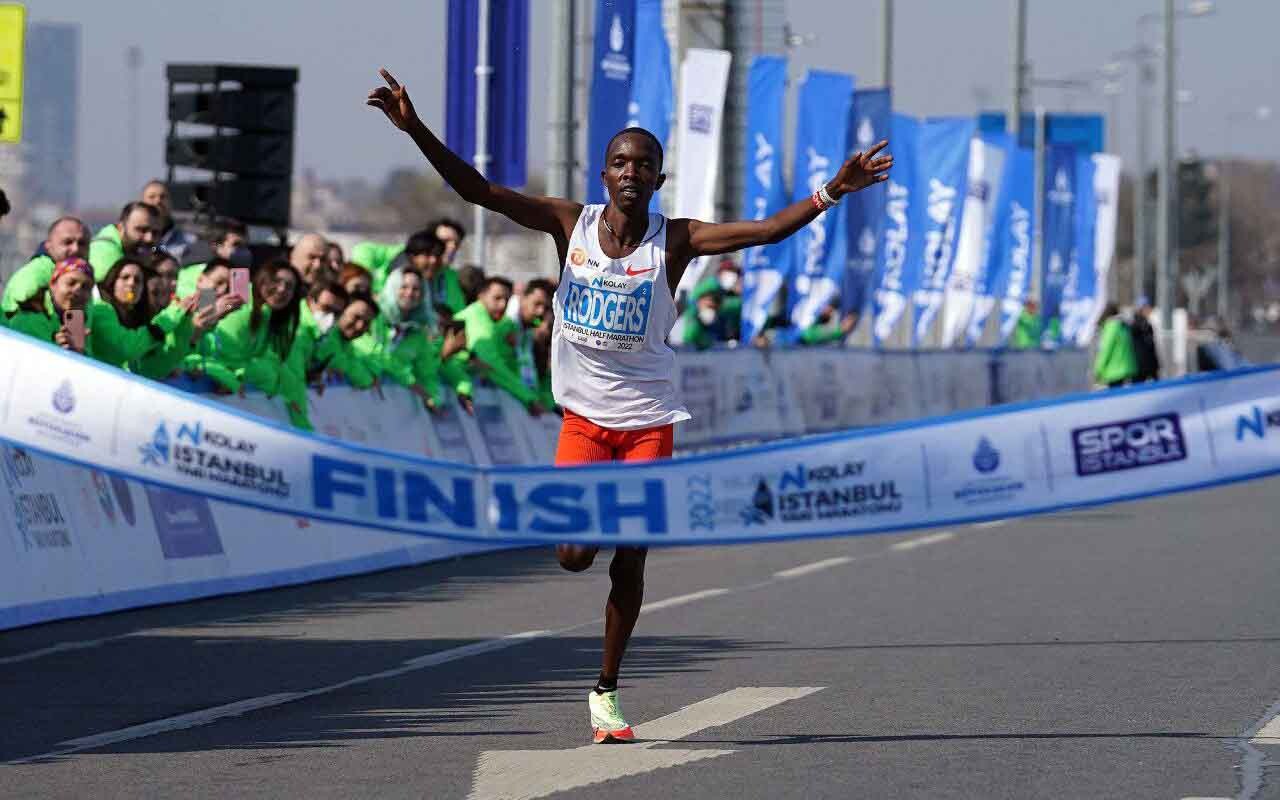
Two-time world 5000m champion Obiri ran 1:04:48 to win the women's race by more than a minute ahead of Ethiopia’s Tsehay Gemechu and Bekelech Gudeta, while Kwemoi improved the men's course record to 59:15 to beat his training partner Daniel Mateiko (1:00:05) and Emmanuel Bor, who had started the race as a pacemaker.
The N Kolay Istanbul Half Marathon was one of the few international races that went ahead last year during the pandemic and it ended with a world record by Ruth Chepngetich, the world marathon champion running 1:04:02. Since then, that women's world record has been improved to 1:02:52 by Letesenbet Gidey in Valencia and it was that mark the leaders were on target for in the early stages.
Running with a male pacemaker, Obiri was joined by Gemechu as they passed 5km in 14:45, putting them on a projected pace of just outside 62 minutes, with Ethiopia’s Bekelech Gudeta and Kenya’s Vicoty Chepngeno running together 10 seconds behind them. Turkey’s Yasemin Can was another 10 seconds back.
Speeding up further still, it was no surprise to see Obiri open a gap on Gemechu, but that pace could not be sustained in the windy conditions and the world cross-country champion had slowed by the 10km point, although that was still passed in 30:01. By that stage she was half a minute ahead of Gemechu, who had been caught by Chepngeno and Gudeta.
Obiri continued to forge ahead, passing 15km in 45:27 and 20km in 1:01:16 to eventually win in 1:04:48, improving both her time and position from the event 12 months earlier, when she was third behind Chepngetich in 1:04:51 – the fastest debut half marathon in history. Obiri currently sits fifth on the world all-time list with the 1:04:22 she ran to finish second at the Ras Al Khaimah Half Marathon last month.
Gemechu, who won last year’s Copenhagen Half Marathon in a PB of 1:05:08, battled the challenge posed by Chepngeno and Gudeta and solo ran her way to second place in 1:05:52. Gudeta was third in 1:06:35, Chepngeno fourth in 1:06:58 and Can fifth in 1:07:57. The top 11 finished inside 70 minutes, while Moira Stewartova was just outside that and broke the Czech Republic record with 1:10:14 to finish 12th.
The men’s race leaders were also on pace to break Jacob Kiplimo’s world record of 57:31 set in Lisbon last year in the opening kilometres and Kwemoi, Mateiko and their compatriot Bor were just off that tempo through 5km in 13:40.That trio remained together as 10km was passed in 27:35 but then Kwemoi began to move away. The tempo was easing but he was still well in control, with a 20-second lead at 15km, which he passed in 41:34. That advantage had grown to 44 seconds by 20km (56:07) and he ran unchallenged to the finish line in 59:15 to improve the course record of 59:35 set by the then world record-holder Kibiwott Kandie last year.
Bor was 15 seconds behind runner-up Mateiko, running 1:00:20 for third place, while Kenya’s Edmond Kipngetich and Brian Kwemoi finished fourth and fifth with respective times of 1:00:30 and 1:00:50.
The top 10 were all under 62 minutes, with Ramazan Ozdemir being Turkey’s top finisher in 14th (1:04:02).
The event featured a record number of around 10,500 participants.
(03/27/2022) ⚡AMPN Kolay Istanbul Half Marathon
The Istanbul Half Marathon is an annual road running event over the half marathon distance (21.1 km) that takes place usually in the spring on the streets of Istanbul, Turkey. It is a IAAF Gold Label event. The Istanbul Half Marathon was first organized in 1987. After several breaks it was finally brought back to life in 2015 when the...
more...The 80/20 rule: how to actually apply it to your training, the polarized method of training has grown in popularity. Here's how (and when) to use it for the best results
The 80/20 rule involves running 80 per cent of your mileage at a low intensity, 20 per cent at a high intensity, and very little (if any) at a moderate intensity. It has become a popular method of training over the last several years, with many athletes ditching the pyramidal approach for this polarized training model, some with great success. The question is, is it right for you? And how can you apply it to your own training in a way that makes sense?
Pyramidal vs. polarized
Before polarized training entered the discussion, the majority of athletes following a structured training plan (which, admittedly, isn’t a large percentage of the recreational running population) were likely using the pyramidal method of training. In many ways, this approach to training isn’t that different from polarized training, since it still dictates that athletes run more than half their weekly volume at a low intensity.
Traditionally, pyramidal training is broken down like this: 75 per cent low-intensity, 20 per cent moderate intensity and five per cent high-intensity. Similar to polarized training, this method is based on the idea that the majority of an endurance athlete’s training should be low-intensity aerobic work, since this is the most important factor in driving aerobic adaptations while giving your body enough time to recover between sessions.

The difference, of course, is the inclusion of moderate-intensity tempo or threshold work, which followers of the 80/20 argue is less effective and isn’t the best use of your training hours.
Which model should you follow?
The truth is, both models have been proven to be highly effective at improving running performance, so the choice between which one you should follow often comes down to what works better for you, your experience level and your lifestyle. In many cases, runners will likely use both training models in the lead-up to their goal races. Confused? Here are a few factors that will influence which mileage breakdown you apply to your training:

Experience level
If you are new to structured training or new to running in general, you should avoid doing large volumes of high-intensity work. Running faster is harder on the body and is much more likely to lead to injuries, and doing 20 per cent of your volume at a high intensity may be too much for your body to properly recover between sessions.
This is why beginners will likely benefit more from a pyramidal training approach. Five per cent volume at a high intensity will be easier for your body to handle, and the rest of your low and moderate-intensity work will strengthen and prepare your body for those harder sessions. As you become more experienced, the polarized approach may be more feasible.
Training cycle
The type of training you follow will also change depending on where you’re at in your training cycle, and how close you are to race day. During your base training phase, the pyramidal approach works well to introduce your body to volume and intensity to prepare for harder sessions later in your training cycle. This is a safer way to begin a training cycle, especially if it’s following a period of rest after your last goal race.
As you get closer to race day, your training will likely begin to shift toward a more polarized approach. By this point, you will have built up the necessary strength and stamina to handle a greater volume of high-intensity running without getting injured or burnt out. The closer you get to your goal race, the more race-specific your training will become, and the polarized method of training is a great way to fine-tune your fitness in the final weeks of preparation.
Race distance
Of course, the distance you’re training for will also impact the types of runs and workouts you do. Training for a 5K looks a lot different than training for a marathon, and an experienced athlete training for a shorter distance will require more high-intensity volume if they want to see their times come down. These athletes will likely spend much more time throughout the year following a polarized training model.
A marathon runner, on the other hand, will likely benefit more from having tempo runs and other moderate-intensity work in their programs, which are more directly applicable to running longer distances.
It’s important to remember that regardless of which distance you’re training for, relative beginners, even those preparing for a shorter distance, should still be careful with how much high-intensity volume they’re doing.
The bottom line
Both the polarized and pyramidal training approaches have been proven to be effective, and they are nearly identical in one very important way: the majority of the volume is run at a low intensity. Many runners make the mistake of doing all of their runs at a moderate intensity, which hampers their bodies’ ability to recover between sessions and doesn’t allow for any high-intensity work.
Which approach you choose will depend on several factors, and it may take some trial and error to figure out what works best for you. In any case, there is one more important takeaway from this discussion: following a structured training plan will produce better results, regardless of which method you follow.
Of course, creating your own training plan may seem like a daunting task, especially for the already-busy runner with a full-time job and other commitments. You can find a variety of training plans out there for every race distance and ability level, and while these are athlete-specific, they’re much better than not following a training plan at all.
On the other hand, if you’re really serious about improving your performance or you’re struggling with injuries, enlisting the help of a coach is your best option. A good coach will work with you to create a plan that not only matches your ability level and goals, but works with your schedule and lifestyle.
(03/26/2022) ⚡AMPby Running Magazine
Russian racewalker Yelena Lashmanova loses Olympic and world titles after anti-doping violation
Russian racewalker Yelena Lashmanova, who won Olympic gold in world-record fashion at the 2012 Olympic Games in London, will be stripped of her gold medal after breaching World Athletics anti-doping rules. Her Olympic title won’t be the only gold she will lose, as the 20 km racewalk title from the 2013 World Championships in Moscow will also be removed.
Lashmanova won women’s 20 km racewalk at the London Olympics in a world record time of 1:25:02, which is four minutes and 15 seconds per kilometre. She has now been banned for two years, which started last year, for the use of prohibited substances.

According to World Athletics, Lashmanova has accepted the sanction proposed by the Athletics Integrity Unit, which includes the disqualification of her results between Feb. 18, 2012 and Jan. 3, 2014.
China’s Qieyang Shenjie and Liu Hong, who originally came second and third in London, have been upgraded to gold and silver. Lashmanova’s removal completes the Chinese sweep of the podium, as Lu Xiuzhi moved up into the bronze-medal position.

The new gold medallist, Shenjie, initially finished in the bronze-medal position but was upgraded to silver when Lashmanova’s teammate, Olga Kaniskina, was disqualified in 2016, also for a doping violation.
All three Russian racewalkers who competed in the women’s 20 km event are now disqualified. Anisya Kirdyapkina, who finished fifth, was disqualified in 2019.
Russia won eight gold medals in athletics at the London Olympics; now their gold medal count stands at two.
400m hurdler Natalya Antyukh and high-jumper Anna Chicherova remain as the only two Russian gold medallists from the London Olympics who have not been disqualified.
In 2020, Antyukh was charged with doping violations dating back to 2013, while Chicherova tested positive for the banned substance turinabol (an anabolic steroid), which resulted in the removal of her 2008 Olympic bronze high-jump medal.
Despite previous doping violations, both Antyukh’s and Chicherova’s Olympic gold medals still stand.
(03/26/2022) ⚡AMPby Marley Dickinson
Fight fatigue by working on your hamstrings and posture, If you want to decrease the effects of late-race fatigue, don't neglect your hamstrings and core strength
Better fatigue resistance often separates the elites from the rest of us. It can also be the difference between a new PB and going home disappointed. So how do you improve fatigue resistance? New research says having stronger hamstrings and better postural stability will help fight off the effects of late-race fatigue so you can run strong to the finish.
The two types of fatigue
The authors of the study, published in the journal Sensors, identify two types of fatigue: peripheral and central. At its simplest, peripheral fatigue is the exhaustion you feel in your muscles from prolonged physical activity, and central fatigue refers to fatigue in your central nervous system. Both can affect muscle strength and activity, as well as running form.

Fatigue, whether peripheral or central, will not only slow you down, but will also put you at a higher risk for injuries. As fatigue begins to set in, research shows runners experience an increase in ground reaction forces, which puts more stress on the body.
How to improve fatigue resistance

The researchers recruited 18 male runners to complete a running test that induced peripheral and central fatigue and assessed which biomechanics deteriorated during the test. They found that runners with greater hamstring strength and postural stability experienced fewer fatigue-related changes to their biomechanics (a.k.a. their running form) than those with less.
These results led the team to this conclusion: “strength and stability training could prevent or delay the kinematic modifications associated with fatigued running and prevent the early increase in metabolic cost.” In other words, having stronger hamstrings and better postural stability can help you fight the effects of fatigue so you can maintain your pace until you cross the finish line.
Exercises to improve hamstring strength and postural stability
This highlights the importance (yet again) of strength training as a part of a running program. There are many exercises runners can do to improve their hamstring strength, like glute bridges, single-leg Romanian deadlifts and hamstring walkouts. Check out these hamstring exercises or this hamstring and glute strength routine to get you started.
To improve your postural stability, runners should aim to improve their core action, and work on core exercises that focus on counter-rotation, like the ones suggested in this strength training blueprint for runners.
(03/26/2022) ⚡AMPby Brittany Hambleton
Mo Farah’s racing comeback gathers pace
After his disappointing season last year he talked about having one last hurrah – a big farewell race somewhere to mark the end of a career that has brought him, among other things, 10 global track titles.
But there is now speculation he could be involved in this summer’s major championships on the track. Who knows, a return to the London Marathon in October could even be on the cards too.

Firstly, let’s stick to what we know. As Farah is racing 10km on the roads of London on May 2 and Manchester on May 22, this means we can pretty much rule him out of racing in the Müller Birmingham Diamond League on May 21.
Farah does not seem afraid of putting his reputation on the line either, incidentally, as the Great Manchester Run is also set to feature Stewart McSweyn, the Australian who holds the Oceania record for 1500m, mile and 3000m in addition to having clocked 27:23.80 for 10,000m on the track.
In addition, Andy Butchart is set to race and has been in good shape recently after having run 27:36.77 for 10,000m in California this month to break Ian Stewart’s 45-year-old Scottish record.
So if Farah’s road races in May go well, what are his options? Surprisingly he has never won a Commonwealth title and with the event on home soil in Birmingham it must be tempting.
The consensus is that he would struggle on the track against the likes of Joshua Cheptegei and Selemon Barega in the World Championships in Oregon in July. But Christian Malcolm, the head coach of the British team, has suggested it is “50/50”.
Speaking as last weekend’s World Indoor Championships in Belgrade drew to a close, Malcolm said: “Sir Mo is working hard and training. We will see how he goes in the summer. But he’s at that age now where you have to take it week-by-week, month-by-month, see where you are at in training.”
On the chances of him competing in Oregon, Malcolm added: “It’s possible. We don’t know at the moment. It’s 50-50 if I am being honest with you. Hopefully we will know a little bit more over the next six weeks.
As for the Great Manchester Run, Farah last took part in the event in 2018 when he outkicked Moses Kipsiro to clock 28:27.
Farah said: “I’m pleased to say the injury problems I had last year are now behind me, training has been going well and I am happy with the shape I am showing.
“Any time I race in the UK it is exciting for me because I love running in front of my home fans and I want to give my best for them. I had an amazing reception in Manchester when I won the event in 2018 so I’m looking forward to racing on the streets of the city again later this year.”
It will be fascinating to see if Farah’s form during May is close to his best or whether there is little improvement on last year when he struggled at the British 10,000m Championships in Birmingham to clock 27:50.64 before barely improving three weeks later to run 27:47.04 in an invitation 10,000m at the Olympic trials in Manchester.
How will he fare, too, if he comes up against the rising force of Marc Scott, who beat Farah in Birmingham last year despite not being 100% fit himself and has since won the Great North Run, clocked 12:57.08 for 5000m indoors and on Saturday won bronze in the 3000m at the World Indoor Championships?
Distance running legend returns to the roads of London and Manchester in May but what else does the summer of 2022 hold in store?
After signing up to race the Vitality London 10,000 on the roads of the British capital on May 2, Mo Farah has now announced he will be running the Great Manchester Run on May 22.
Despite turning 39 years old March 23 and enduring an injury-hit summer in 2021 which saw him fail to make the British Olympic team for Tokyo, there are signs he could be entering a surprisingly busy racing period.
(03/26/2022) ⚡AMPby Athletics Weekly
Radcliffe announced as event ambassador for the 2022 European 10,000m Cup
Former world marathon record-holder Paula Radcliffe from Great Britain has been announced as an event ambassador for the 2022 European 10,000m Cup which takes place in Pacé, France on 28 May.
After the 2018 and 2019 editions were held in conjunction with the Night of the 10,000m PBs before the 2021 edition had to be staged behind closed doors in Birmingham due to pandemic restrictions, the next three editions of the European 10,000m Cup will all take place in the Stade Chasseboeuf in Pacé, just outside Rennes.

Radcliffe is still the second fastest marathon runner in history with her 2:15:25 clocking from the 2003 London Marathon and while Sifan Hassan has taken her European 10,000m record into new territory, Radcliffe is still the second fastest European in history with 30:01.09.
She ran that time without pacemakers - and in the pouring rain - at the 2002 European Athletics Championships in Munich and this time remains the championship record some twenty years later. It could very well remain on the books after this year’s European Athletics Championships which return to Munich.
Reflecting on her achievements, Radcliffe said: “That performance [in Munich] has a very high place in my career because for me, it was truly a target for a long time to win a championship on the track. I thought that perhaps I wouldn’t run quite so fast on the track after moving up to the marathon but in fact it was the opposite.
“The fact the marathon went so well gave me a lot of confidence in myself. It also brought me more strength physically and mentally. Therefore it helped me on the track and that was surely the case in Munich.
“I hadn’t run a 10,000m that season so it was the only occasion I had to try and break my record and perhaps the mythical European record of Ingrid Kristiansen who had held the record for almost as long as I did. I looked up to her in the 1980s, and the way she ran, when I started running.”
Like Kristiansen, Radcliffe was a fierce and committed front runner and just like the Norwegian did at the 1986 European Championships, Radcliffe led almost every step of the race. Her time of 30:01.09 was the second fastest in history up until that point but she rued how close she was to breaking the fabled 30 minute-barrier.
“That's why, when I crossed the line, there were two emotions. There was the emotion of happiness because I was pleased to take the record at last and set a lifetime best but also the emotion of having missed the 30 minute-barrier by 1.09. Perhaps with different conditions I would have done it, perhaps with other competitors in the race I would have done it - but I was pleased nonetheless!” she said.
Radcliffe made her debut at this distance four years prior when the event was known under its original alias of the European 10,000 Metres Challenge. Radcliffe finished second on that day to Portugal’s Fernanda Ribeiro but the Brit was to notch up individual victories at both the 1999 and 2001 editions of the event, each time with winning times inside 31 minutes - 30:40.70 and 30:55.80 respectively.
Having retired from competitive athletics in 2015, Radcliffe is looking forward to being a spectator in Pacé and the organisers are planning to employ many of the innovations which made the 2018 and 2019 editions of the European 10,000m Cup such a success, including a full programme of events - including kids’ and veterans’ races - and allowing spectators to watch and cheer from the track.
“It’s what I love and I am sure the French can do the same thing as well and produce a beautiful night of athletics. We will cross our fingers that the night will produce some good performances - not too hot, not too windy and especially with a good atmosphere around the track.
“Having all the spectators around the track will also protect the runners a bit more and it will also give them a bit more motivation,” said Radcliffe.
The hosts will be looking to retain the men’s team title after triumphing last year thanks in no small part to Morhad Amdouni who took the individual victory in a sprint finish ahead of Bashir Abdi from Belgium and Spain’s Carlos Mayo.
How does Radcliffe see this year’s race unfolding?
“[Last year] was a great race. The French team ran super well. At the moment the men’s team in France is really strong with plenty of talent. In the UK, it’s more in the 1500m and 5000m for the most part but we wait to see what the guys will show in the 10,000m. On the women’s side the level is higher with Eilish McColgan,” she said.
(03/26/2022) ⚡AMPby European Athletics
Running for security: the diary of a Ukrainian runner
Two months ago, Ruslan Paul was a significant figure in the Mariupol, Ukraine, running community–hosting free weekly timed 5K runs called ‘runday’ at Mariupol’s Prymorskyi Seaside Park.
In every run club photo Paul shared on his Strava page, his smile lit up the camera. One often forgets how quickly your life can change in the span of a few days, but for Paul, he was living in reality.


On Feb. 24, 2022, Russia launched a large-scale invasion of Ukraine on its eastern border. Mariupol is located 60 kilometres from the Russian border and is a three-hour drive from the Russian city of Rostov-on-don.
Mariupol was home to 400,000 people before the war broke out on Feb. 24, and now, up to 90 per cent of the city has either been destroyed or damaged.
According to his Strava, Paul went for his last run in Mariupol on Feb. 26. “There are such beautiful places in this city, one of which you involuntarily appeal to the creator of this world for the peace and protection of Ukraine,” he wrote.
On his activity, he posted a picture of himself next to a cross looking out on the Sea of Azov, which separates Ukraine and Russia.
“We don’t have a city anymore,” Paul expressed. “They have destroyed everything.”
A week after the invasion, Paul and his family fled for western Ukraine. A man, and his family, who were born and raised in Mariupol, now watch in fear as the city crumbles from bombing by Russian forces.
Instead of using Strava to post his running activities, Paul began using it as a tool to keep his followers updated on his well-being, replying to comments and sharing his whereabouts.
“We are safe but hungry, homeless and unemployed,” Paul wrote. He and his family are constantly on the run in western Ukraine, trying to find a home to ensure each other’s safety.
Despite the despair, Paul continues to update his friends from around Ukraine on his Facebook and Strava page about his safety and his life on the run. “We’re alive and well, that’s the most important thing,” Paul writes.
(03/26/2022) ⚡AMPby Running Magazine
Running 250 km through the desert: it’s time for the Marathon des Sables
It all started in 1984 when Patrick Bauer (who was 28 at the time) took on a completely self-sufficient 12-day journey across the Sahara Desert, covering 350 km on foot. Two years later the first Marathon des Sables (MDS) was born, with 23 “pioneers” taking on a similar challenge.
Since then, Bauer’s event (he remains the race director) has continued to grow, with a record 1,300 competitors taking part in the 30th-anniversary race in 2015.This year’s race, the 36th edition, will feature 1,100 competitors from 50 countries who will, like the 25,000 athletes who have participated in the event since 1986, take on the 250 km course carrying their food and equipment. Each day race organizers provide the athletes with water and put up a tent for them to sleep under – otherwise they are on their own.

There are five stages in the race, along with a “solidarity” or charity stage that does not count for the overall ranking of the race. The stages range from 30 to 90 km. The athletes don’t know the official course until the day before the race when it is officially announced, but they are guaranteed (according to the event media guide):flat terrain, often hard and stony and suitable for “real runners” as opposed to “trail runners”
sand (sometimes hard or crusted, but most often soft) that they will have to master (for example by opting for shaded areas so they sink less because when the sun heats the sand, it becomes softer)
small, normal and giant sand dunes that will make all competitors draw on their reserves

ascents and descents, not very long but often steep, sometimes sandy, sometimes stony
technical sections over rocky escarpments and along crests (the authentic “trail running moments” of the MDS)
gorges that will provide a beneficial and life-saving shade, when competitors pass through them, and dried wadis (supposedly dried river beds… but some years, a trickle of water is flowing!) where competitors can find some vegetation. The daily temperatures are typically in the 30s, but can rise to as much as 45 degrees Celsius.
At night the temperature can drop to 5 C or less. Athletes must carry a week’s worth of food, a sleeping bag, a compass, knife, lighter, whistle, headlamp, venom extractor, signalling mirror and sunscreen. They are also provided with a GPS beacon so organizers can keep track of the athletes at all times. The race takes place in the middle of the desert so that it can be held in total isolation and guarantees that athletes cannot receive any assistance.COVID-19 and the MDS
Last year’s 35th edition took place last fall after being postponed three times. It was a tough year for the event, with an athlete suffering a cardiac arrest during the first stage, then a gastrointestinal bug ripping through the field, leading almost 50 per cent of the participants to pull out, far higher than the normal 5 to 10 per cent attrition rate the event typically sees.
2022 Coverage
Triathlon Magazine Canada editor Kevin Mackinnon will be on hand to cover this year’s race, one of the 65 accredited journalists covering this year’s MDS. He’ll be providing updates and photo galleries through the first few days of racing in Morocco. There will be 15 Canadians competing at the 2022 MDS. Stay tuned for more from Morocco in the coming days.
(03/26/2022) ⚡AMPby Running Magazine
Marathon Des Sables
The Marathon des Sables is ranked by the Discovery Channel as the toughest footrace on earth. Seven days 250k Known simply as the MdS, the race is a gruelling multi-stage adventure through a formidable landscape in one of the world’s most inhospitable climates - the Sahara desert. The rules require you to be self-sufficient, to carry with you on your...
more...2022 World 10K Bengaluru to be held on May 15
The World Athletics elite label road race event hasn’t been held since 2019 due to COVID-related restrictions.
The World 10K Bengaluru 2022 will be held on May 15, the organizers of the event announced on Thursday.

A World Athletics elite label road race event, the World 10K Bengaluru 2022 will be returning after a three-year hiatus and is slated to be held in full capacity. The run was postponed multiple times in the last two years due to COVID-19.
The event will be conducted in two formats: on-ground and a virtual app-based run.

The four on-ground events will be flagged off at the iconic Sree Kanteerava Stadium in Bengaluru.
While the open 10K category will have some of the world’s elite athletes, Majja Run (5km), Senior Citizen Run (4.2km) and Champions with Disability (4.2km) will see the participation of amateur runners from across the country.
The virtual app-based run, meanwhile, will be held via the specialized event app for two race categories – Open 10K and 5K. Registrations for the World 10K Bengaluru 2022 begin on March 25 and close on May 11.
The last edition, which was held in 2019, saw Agnes Tirop of Kenya become the first women’s athlete to defend her title at World 10K Bengaluru. Ethiopia’s Andamlak Belihu took his first win in the men’s race.
Among the Indian elites, Asian championships bronze medalist Parul Chaudhary topped the women’s race.
Lakshmanan Govindan won the men’s Indian elite run ahead of Olympian Avinash Sable.
(03/25/2022) ⚡AMPby Ali Asgar Nalwala
TCS WORLD 10K BENGALURU
The TCS World 10k Bengaluru has always excelled in ways beyond running. It has opened new doors for people to reach out to the less privileged of the society and encourages them to do their bit. The TCS World 10K event is the world’s richest 10 Km run and has seen participation from top elite athletes in the world. ...
more...Five running tips for seniors
No matter what your age is, running can be beneficial to your physical and mental health. Running is a great exercise to improve your cardiovascular system, and staying in good shape and moving your body is especially important as you grow older.
Running has a significant impact on your muscles and joints, that is why running slow is good for you, especially if you tailor it by your body’s abilities.
Here are five tips on how to begin running as a senior!
1.- Know Your Body’s Limits

Check with your doctor first before starting your exercise program. This is important because if you haven’t done any exercises in a while, it is crucial to check whether your body can adapt to any form of increased ability.
After checking your health, the smartest thing to do is to find a good running program for beginners. Yes, you could just start running and do it until you reach your body’s limit, but this approach could put you on a higher risk of serious injury.
There are plenty of beginner running plans, and if one does not suit you, you can change it to the one you can handle. After running for some time, you will be able to make your own running plan because you will be in tune with your health and your stamina levels.

2.- Learn How to Stretch
The pre-running stretch is annoying to many runners, but because it is an essential step of your run, it should never be overlooked, especially if you are older. A good stretch can drastically lower your chances of injury, and it will give you time to prepare for the run mentally.
Take your time to stretch all the muscle fibers that you will need for your runs, such as leg, hamstring, and back muscles.
Once you’re finished your run, take some time to cool down. Post-running stretches are also important to reduce muscle soreness.
3.- Build Endurance Gradually
Do not be overly ambitious with your uns when you are starting. If you can only run for 10 minutes, that is good enough. After some time, you will be able to run for longer. Running longer than your body’s abilities can increase your chances of injury, but also it can affect your motivation to exercise. If you cannot start running right away, you can start by walking or incorporate walking intervals in your runs.
Just like your running time, your running pace will also improve over time.
4.- Resting is the Most Important
As you age, resting becomes the most vital activity in your life. This is also true for running. Typically it is not wise to run every day, especially if you are starting out. Running 2 or 3 times per week can also bring a lot of health benefits. Sometimes your body will need a lot of time to rest and repair the muscles, but if you want, a light yoga session in between your running days is always welcome. Walking and cycling are also great exercises for the no-run days because they do not put too much stress on your sore muscles.
Apart from rest days, the best way to rest is to sleep. There is nothing better than a good night’s sleep to improve your mood and energy levels. Make sure to get enough sleep. Adults require 6 – 8 hours per night to remain healthy and energized, so never cut off sleep. Also, good sleep quality is essential. Here are some relaxation tips geared toward seniors.
5.- Improve Your Diet
You probably know that diet has a lot of influence on your athletic performance, as well as your overall health. Eating a lot of fiber and carbs is an excellent choice for a runner because carbs are the primary source of fuel for your body while running.
Opt for healthier carbs like oats, quinoa, brown rice, sweet potatoes, and cut down on the intakes of simple carbs such as white potatoes, white rice, and bread. Eat a lot of fruits and veggies; especially green vegetables are filled with nutrients that you will need to stay healthy. Consider reducing the amount of dairy, and red meat from your diet, because they may cause inflammation in the body and can be detrimental to your health. Do not be scared to include lots of healthy fats in your diet, because it is vital to older people. Avocados, nuts, and nut butter will provide you not only with energy and omega 3s but will give you healthy and shiny skin.
(03/25/2022) ⚡AMPby Nurse Next Door
Hellen Obiri goes for another PB and possibly the Istanbul course record
Hellen Obiri is back in Istanbul where strong elite fields were assembled for the N Kolay Istanbul Half Marathon on Sunday.
Both course records could be threatened at the Bosporus. Six women are on the start list with personal bests of sub 67:00 and Kenya’s reigning World Cross Country Champion and 5,000 m World Champion is the fastest of them: Hellen Obiri has improved to 64:22 earlier this year.

Fellow-Kenyans Daniel Mateiko and Rodgers Kwemoi head the men’s start list with personal bests of 58:26 and 58:30 respectively. The N Kolay Istanbul Half Marathon produced a world record a year ago when Kenya’s Ruth Chepngetich won the race in 64:02.
A year ago the N Kolay Istanbul Half Marathon was one of very few international races that went ahead during the pandemic. 4,000 runners participated under strict hygiene regulations. Now the organizers of the N Kolay Istanbul Half Marathon are proud to announce that the race bounced back: Including races at shorter distances a record number of over 10,000 runners were registered for the 17th edition. Around 8,000 of them will run the half marathon.Turkey’s biggest spring road race is a World Athletics Elite Label Road Race.
“We have worked for a long time to improve our 16 year-old course and to make it one of the most historic and enjoyable courses in the world, as well as one of the fastest. We succeeded in developing the N Kolay Istanbul Half Marathon further and even had a world record here a year ago,“ said Renay Onur, the Race Director of the event which is staged by Spor Istanbul.
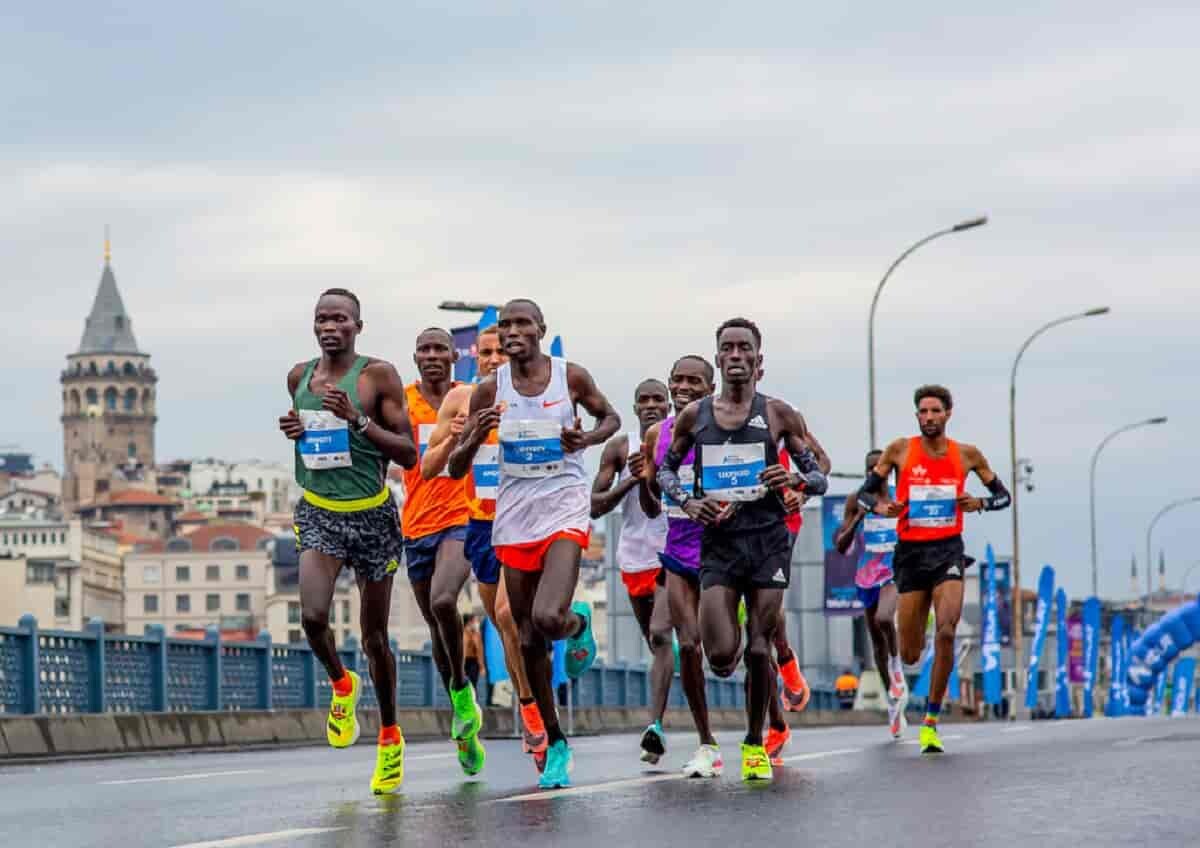
With regard to Sunday’s race he said: “Our elite field is of high quality. With two men having recently achieved sub-59 times, we have a chance that our course record will fall. On the women’s side, I am happy that Hellen Obiri is back. I believe she can go even faster since weather conditions seem to be fine on Sunday. We invite all sport lovers to enjoy this race.“
Hellen Obiri is ready for another very fast race. "If weather conditions and pacemaking are good then I will try to break my personal best. Whenever I come to such a race it is my goal to run well and improve my time,“ said the 32 year-old who improved to 64:22 when she was second in the Ras Al Khaimah half marathon in the United Arab Emirates in February. Since then she has been training in the Ngong hills near Nairobi.
“I am in much better form now than I was before Ras Al Khaimah,“ said Hellen Obiri. Asked about the course record, which is also the Kenyan record, she answered: “The course record will be a tough challenge. But we have a very strong field, so we will definitely give it a try.“
Hellen Obiri will indeed face very strong competition in Istanbul. Fellow-Kenyan Vicoty Chepngeno has an outstanding half marathon record. She ran 14 half marathons since 2018 and won eleven of them.
The 28 year-old is undefeated in her past six races at the distance and improved to a world-class time of 65:03 when she took the Houston half marathon in January.
Ethiopian trio Tsehay Gemechu (PB: 65:08), Nigsti Haftu (66:17), Bekelech Gudeta (66:54) and Turkey’s multiple European long distance champion Yasemin Can (66:20) are the other women who have already run below 67:00. Tsehay Gemechu has a very strong half marathon record as well.
She has won four of her five races and is the reigning champion of the Copenhagen half marathon where she clocked her PB last year.
In the men’s race there will be an attack on the course record, which was established last year by Kenya’s Kibiwott Kandie with 59:35.
“We will both be going for the course record and a personal best,“ said Daniel Mateiko and Rodgers Kwemoi, who are training partners and belong to the group of Eliud Kipchoge based at Kaptagat. Mateiko improved by almost a full minute to 58:26 when he was third in Valencia in 2021 while Kwemoi was runner-up in Ras Al Khaimah in February with a strong PB of 58:30.
“I am now in better form than I was in Ras Al Khaimah,“ said Rodgers Kwemoi.
Two other runners in the field have already broken the one hour barrier: Kenyans Josphat Tanui and Edmond Kipngetich have personal bests of 59:22 and 59:41 respectively.
Elite runners with personal bests
Men
Daniel Mateiko KEN 58:26
Rodgers Kwemoi KEN 58:30
Josphat Tanui KEN 59:22
Edmond Kipngetich KEN 59:41
Hillary Kipchumba KEN 60:01
Vestus Chemjor KEN 60:47
Moses Too KEN 60:56
Philimon Kiptoo KEN 61:47
Daniel Kiprotich KEN 62:09
Gerald Vincent KEN 62:27
Ramazan Özdemir TUR 63:10
Women
Hellen Obiri KEN 64:22
Vicoty Chepngeno KEN 65:03
Tsehay Gemechu ETH 65:08
Nigsti Haftu ETH 66:17
Yasemin Can TUR 66:20
Bekelech Gudeta ETH 66:54
Pauline Esikon KEN 67:15
Stella Rutto ROU 67:45
Ayinadis Teshome ETH 68:18
Daisy Kimeli KEN 68:34
Medhin Gebreslassie ETH 68:38
Ludwina Chepngetich KEN 70:34
Moira Stewartova CZE 71:08
Fatma Karasu TUR 71:30
Kristina Hendel CRO 71:34
(03/25/2022) ⚡AMPN Kolay Istanbul Half Marathon
The Istanbul Half Marathon is an annual road running event over the half marathon distance (21.1 km) that takes place usually in the spring on the streets of Istanbul, Turkey. It is a IAAF Gold Label event. The Istanbul Half Marathon was first organized in 1987. After several breaks it was finally brought back to life in 2015 when the...
more...Ukraine war refugee wins Jerusalem marathon
Ukrainian athlete Valentyna Veretska, who fled Russia's invasion of her country and took refuge in Israel, on Friday won the Jerusalem marathon, race organisers said.Veretska claimed the women's title with a time of 2hr 45min 54sec, before celebrating by draping the Ukrainian and Israeli flags over her shoulders.
The 31-year-old was one of around 40 Ukrainians who took part in the race in Jerusalem's Old City, braving unseasonably cold and wet weather.It was her second win since October when she came first in the Tirana, Albania, marathon.
Veretska fled Russia's invasion of Ukraine with her daughter, crossing into neighbouring Poland before travelling to Israel.Her husband, however, stayed in their homeland where he is serving in the army, the organisers said.Israeli Sports and Culture Minister Chili Tropper on Thursday said the Jewish state would welcome 100 Ukrainian athletes fleeing the conflict.

Since Russia invaded Ukraine on February 24, more than 16,800 Ukrainians have arrived in Israel, according to the interior ministry.More than one million of Israel's 9.4 million residents have roots in the former Soviet Union.Israel has provided humanitarian support to Ukraine but has so far rebuffed Kyiv's requests for military assistance.
It has also refrained from joining Western sanctions against Russia, with which it maintains strong ties including security cooperation.In an address to Israeli lawmakers on Sunday, Ukrainian President Volodymyr Zelensky appealed to the Jewish state to abandon its neutrality and "make its choice".Zelensky, who is Jewish, compared Russia's war on Ukraine to the Holocaust.

Jerusalem Marathon
First held in 2011, the Jerusalem International Winner Marathon has become a major event with 30,000 participants, of which hundreds are elite competitors and runners from abroad. The course was especially selected to recount Jerusalem's 3,000-year historical narrative since the beginning of its existence. The race challenges runners while exposing them to magnificent views, exquisite landscapes and fascinating historical sites...
more...Stay fit to prevent Alzheimer’s disease, new research shows that cardiorespiratory fitness reduces your risk of developing Alzheimer's and other related diseases
According to a new study, having good cardiorespiratory fitness can significantly lower your risk for Alzheimer’s and other related diseases.
Cardiorespiratory fitness and Alzheimer’s disease

The researchers of the study, published by the American Academy of Neurology, identified 649,605 veterans who had completed an exercise treadmill test to assess their cardiorespiratory fitness. They found that the participants with the highest levels of fitness developed 33 per cent less Alzheimer’s over the course of 8.8 years compared to the lowest-fit group.
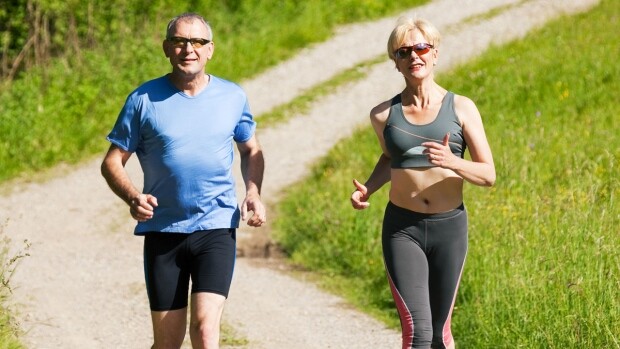
While scientists still don’t know a lot about why or how fitness is related to Alzheimer’s disease and other conditions, this data supports physical activity, and more specifically, cardiorespiratory activities like running, swimming and cycling, as an effective way to reduce your risk for degenerative brain diseases.
The good news is, other research shows that even just a 10-minute run can elicit positive effects on your brain, so you don’t have to run marathons to get the brain-boosting benefits of running (although marathon running is great for your brain, too). So whether you’re a beginner runner or a veteran of the sport, you can add Alzheimer’s prevention to the ever-growing list of reasons to be a runner.
(03/25/2022) ⚡AMPby Brittany Hambleton
What should your heart rate be during a 5K race?
Whether you are running your first 5K or your 50th, it can be tough to gauge the pace on the first couple of kilometers. If you are coming from a more experienced running background, you are generally aware of where your pace should be for the first couple of kilometers, but it is still possible to go out too fast and expend too much energy early in the race.
It’s easy to get out too fast as your body feels at its best in the early stages of the race. Instead of focusing on pace for the first kilometer, try to pay attention to your heart rate.
During the first two kilometers of a 5K, you should be between 80 and 90 per cent of your maximum heart rate. To calculate your maximum heart rate zones (which can vary on age and health condition), subtract your age from 220. For example, a 30-year-old will generally have a max heart rate of around 190–therefore your heart rate should be between 152 and 171 bpm for the first couple of kilometers to ensure you don’t burn out.

Runners will often use a 10 to 15-minute pre-race warm-up to get their heart rate up for a short race. The idea behind this is to make the transition easier to reach higher heart rate zones early on.
Many things can affect your heart rate, such as the temperature outside or the clothing you wear–if you are overdressed for the temperature, for example, your heart rate will be higher than if you are comfortably cool.

There’s no need to look at your heart rate on your watch for every second of the race, but try to take a glance at it as you hit the first and second kilometer markers.
If you can be within your heart rate zones for the first two-to-three kilometers, there is a higher chance of having a negative split or stronger finish over the fourth and fifth kilometer.
(03/24/2022) ⚡AMPby Marley Dickinson
Want to be healthier? Volunteer at a race, New research says even just volunteering at a local 5K can provide a lot of health benefits
From registration to course marshals to the post-race snack table, volunteers are the backbone of any road or trail race. Here at Canadian Running, we tend to focus on running in races, but a recent study from the U.K. found that the simple act of volunteering at a local 5K can benefit your health. Here’s how.
The health benefits of volunteering
The study, published by Sheffield Hallam University in the UK, asked more than 60,000 parkrun participants who were either volunteers, run/walkers who also volunteered or run/walkers who did not volunteer, to answer questions about their motivations to participate, and the perceived impacts on their mental and physical health.

The participants who volunteered exclusively said their main motivations were to give back to the community, to feel part of the community, to help people or because they couldn’t run. Very few volunteers said they were motivated by potential benefits to their mental or physical health.
The researchers found, however, that people who volunteered but did not run still experienced health benefits. According to the results of the study, the exclusive volunteers reported the following:

Improved connections to others/feeling like they were a part of a community (83 per cent)
Meeting new people (85 per cent)
Time spent with friends (45 per cent)
Improvements in mental health (54 per cent)
Improvements in physical health (29 per cent)
The improvements highlighted in the study were all subjective (they were reported by the participants), and the researchers don’t go into detail about exactly how their physical and mental health was improved, but this data shows that even the simple act of volunteering can make you a healthier, happier person.
Other reasons runners should volunteer
Aside from the health benefits, there are many more reasons runners should consider volunteering at a local race. For example, volunteering is a great way for injured runners to still be a part of their local running community and support their friends, even when they can’t be on the startline themselves.
Runners who volunteer will also get a behind-the-scenes look at what it takes to organize their favorite races, which will give them a greater appreciation for everyone and everything involved the next time they’re on the start line. It’ll also give them more tolerance when things don’t go as smoothly on race day.
Finally, volunteering can be a tonne of fun. While volunteers do have a job to do, they also get the opportunity to cheer on runners, and often get some great race swag, too. So if you’re injured, returning from a running layoff or simply want to give back to the running community, consider volunteering at your next local road race. It’ll be a fun way to improve your health.
(03/24/2022) ⚡AMPby Running Magazine
How to progress to mile repeats, If you're not ready for mile repeats, use these sessions to work your way up to the classic distance workout
Mile repeats are a classic workout for distance runners to improve running economy and get faster. Intervals of this length and speed can be very challenging, however, and runners who are new to speedwork may not be quite ready for them. If you find yourself in this group, try these workouts to help you progress to mile repeats so you can get the most out of this beneficial workout.
The workouts
You’ll notice the first two sessions are written in minutes, rather than specific distances. Time-based intervals are a great way to introduce yourself to speedwork because they take some of the pressure away from having to hit exact paces. Instead, you can run these workouts by feel, which will help you learn how to manage your effort as intervals get longer.

This progression is made up of three workouts, with the third being your mile repeats. How quickly you progress through each workout will vary from person to person, but we recommend spending at least a couple of weeks at each stage before progressing to the next.
Workout #1

Warmup: 10-15 minute easy jog, followed by form drills and strides
Workout: 6 x (1 min at 5K-10K pace / 3 min easy jog rest)
Cooldown: 10-15 minute easy jog, followed by light stretching
Workout #2
Warmup: 10-15 minute easy jog, followed by form drills and strides
Workout: 4 x (3 min at 5K-10K pace / 3 min standing rest)
Cooldown: 10-15 minute easy jog, followed by light stretching
Workout #3
Warmup: 10-15 minute easy jog, followed by form drills and strides
Workout: 3 x (1 mile at 5K-10K pace / 3 min standing rest)
Cooldown: 10-15 minute easy jog, followed by light stretching
(03/24/2022) ⚡AMPby Brittany Hambleton
Caster Semenya runs a new personal best in a 3000m win in Cape Town
The two-time Olympic gold medalist, who is eyeing a place in the South African team for the 2022 World Athletics Championships in Oregon, was using the shorter race to build up speed for preferred 5000m.
Caster Semenya was the star attraction of the second edition of the Athletics South Africa Grand Prix in Cape Town on Wednesday (March 23) and the two-time Olympic champion didn't disappoint, racing to her fastest ever women's 3000m.

Running in only her second major event this season, the double women's 800m gold medalist took charge of the race with two laps to go and held on to cross the finish line in a personal best of 8:54.97.
Semenya, who was using the race to build up speed for her now preferred event the 5000m, trailed early leader Kyla Jacobs before making the decisive move and dip below nine minutes for the first time over the shorter distance.

“The run was a little bit tricky,” Semenya said in an interview with World Track.
“Fortunately before the start, the wind died down a bit and worked in our favor. It was a great race, happy with the result. The target obviously was to break nine minutes and we achieved the goal [so] now we’ll have to go back to the drawing board and work more on mileage.”
The leaner looking Semenya finished comfortably ahead of her closest challenger Aynslee Van Graan who timed 9:09.63 while her compatriot and training partner Glenrose Xaba finished in third place in 9:12.51.
The triple 800m world champion’s previous personal best over the 3000m was 9:04:20 from Potchefstroom in May 2021 when she was chasing qualification for the Tokyo 2020 Games in 2021.
She missed out on her target of 15:10.00 which meant she didn't qualify for the Olympics after finishing in fourth place in a 5000m meet in Belgium in 15:50.12 in June 2021.
The South African 5000m national champion, who raced to her personal best of 15:32.15 in May 2021 opened her season with a 5000m of 15:36.55 on March 12 at the Gauteng North Championships in Pretoria.
She is eyeing qualification for the World Athletics Championships in Oregon. The qualification mark for the worlds set for July 15 to 24 for the women’s 5000m is 15:10.00.
(03/24/2022) ⚡AMPby Evelyn Watta
World Athletics Championships Budapest23
Budapest is a true capital of sports, which is one of the reasons why the World Athletics Championships Budapest 2023 is in the right place here. Here are some of the most important world athletics events and venues where we have witnessed moments of sporting history. Throughout the 125-year history of Hungarian athletics, the country and Budapest have hosted numerous...
more...2022 Comrades entry process opens
Entries for the 95th Comrades Marathon to be held in August open today Wednesday, March 23, 2022.
This will be the first entry window period and runs until March 31, 2022. During this window period, only those entrants who had successfully entered the 2020 Comrades Marathon will be able to enter, be they South Africa, Rest of Africa or International.

The entry fee for South African athletes will be discounted from R1200 to R1000 in the first entry window period, as per the CMA’s commitment when the 2020 race was cancelled. Rest of Africa and International entrants in the 2020 Comrades Marathon had their entries deferred to either the 2022 or 2023 race; and will therefore not pay an entry fee.
During the second entry window period, from April 20 to May 16, 2022, all other athletes will be allowed to enter. Entry is free to all runners who have completed the Comrades Marathon 25 times or more.

This second entry window period will not apply should the entry cap of 15,000 entries have been reached during the first entry window period.
CMA Race Director, Rowyn James says, “We have exciting plans in place for this year’s Down Run which will finish at the internationally acclaimed Moses Mabhida Stadium for the second time. Qualifying for the 2022 Comrades Marathon is applicable as of September 1, 2021 till July 12, 2022. The qualifying criteria for this year’s Comrades Marathon remains unchanged requiring completion of a standard 42.2km marathon in under 4 hours and 50 minutes, or a 56km ultra-marathon in under 6 hours and 45 minutes.”
The 95th Comrades Marathon will be the 47th Down Run on Sunday, August 28, 2022, starting at the Pietermaritzburg City Hall at 05h30 and ending 12 hours later at the Moses Mabhida Stadium in Durban, covering a 90.2km distance.
(03/23/2022) ⚡AMPShould you jog or stand between intervals?, Runners have debated the merits of active vs. passive recovery for years, researchers have finally put the two recovery methods to the test
It’s a question runners have been arguing about for years: should you jog during your recovery between intervals, or should you take that time to rest completely? Recently, researchers tried to provide runners with an answer and came out with this age-old conclusion: it depends.
The study
The study, which was published in the European Journal of Applied Physiology, aimed to find out how well-trained runners responded to an interval workout with active (jogging) rest compared to passive (standing) rest. To do so, they had 11 well-trained male distance runners (with an average 10K PB of 35 minutes) perform two workouts of 4×2 minutes at their max speed. In one workout, the athletes recovered with two minutes of jogging rest, and in the other, they recovered with two minutes of standing rest.

During each session, the researchers monitored various performance metrics, including oxygen consumption, heart rate, blood lactate levels and the athletes’ rates of perceived exertion. There was very little difference between the two workouts for all of the measurements, except for perceived exertion. In other words, the athletes found the session in which they jogged during their recovery to be harder.
So should you jog or rest?

At first glance, this may make it seem like standing recovery is better, but it’s not quite that simple. Since this is the first study of its kind, the researchers admit it is unclear whether the results would be the same in a longer workout with more intervals.
The researchers also noted that jogging recovery may be better for beginner or intermediate runners when they’re looking to make their workout tougher, but high-performance athletes who are better at maxing out their pace during an interval session may be better off with standing rest.
Finally, the researchers don’t dive into the variability between workouts, and how the type of rest you take will likely differ depending on the type of workout you’re doing. For example, you may get more out of a broken tempo run (that’s done at a slightly lower intensity) if you jog during your rest, but during a VO2 max workout, you’re likely better off with standing rest to ensure you can do each interval at your best effort.
The bottom line
The type of rest you take will depend on your level as an athlete and what you’re trying to accomplish in a specific workout. As a runner, it’s important that you understand these two factors and how they apply to you in order to get the most out of any workout.
If you’re not sure how to determine this for yourself, consider speaking with a coach who can guide you in each workout and help you figure out what’s best for you.
(03/23/2022) ⚡AMPby Brittany Hambleton
Five creative ways to make running more fun
Does this scenario sound familiar?
You’ve firmly decided to improve your fitness by running. But every time you try, you get bored after the first couple of minutes. And with no motivation, you end up going right back home, disappointed and angry with yourself.
Luckily, meeting your running goals isn’t as difficult as you think. The key to accomplishing them is to make running fun!

But how exactly do you make difficult physical activity enjoyable? Don’t worry, because this article has you covered.
Our 5 top tips will help you supercharge your running routine with excitement and motivation today!

1. Listen to Music or a Podcast
One of the easiest ways to make running fun is to listen to music or a podcast. This will keep your mind occupied and help the time fly by.
Often, a motivating soundtrack can instantly transform your workout from lethargic to energetic.
And if you want to run daily, you can get excited for your run by associating it with a new episode of your favorite podcast.
2. Turn on the Treadmill TV
Most treadmills at the gym have TVs built into them. If not, you can use your gym’s Wi-Fi and head to your favorite streaming site on your phone.
Remember to set a goal on the treadmill and periodically check the distance you’ve run. This will ensure you’re still moving at a good pace and getting all those vital running benefits.
3. Try a Change of Scenery
When you have new scenery to look at, your boring run becomes exciting again. Plus, places with hills and slopes can also make your workout more beneficial to your muscles.
For example, if you always run around the block in your neighborhood, try running at a park, by the water, or on a track. You can mix these up throughout the week so you don’t get tired of the same routine every day.
4. Join a Running Club
Joining a running club is a great way to make running fun while meeting new people. Running buddies can help you reach your goals faster by keeping you motivated.
If you don’t have time to join an in-person club, try a virtual one like this running club.
5. Reward Yourself
Rewarding yourself after running gives you something to look forward to after your workout.
Some ideas for everyday rewards include:
Meeting up with friends
Reading a book
Taking a nap
Watching your favorite TV show
Eating a small treat
Remember to keep track of your fitness goals. Every time you accomplish a bigger goal, give yourself a bigger reward like a restaurant dinner or a staycation.
Once your brain associates running with a reward, you’ll have a much easier time staying consistent with your exercise routine.
Improve Your Fitness With These Fun Running Tips
No matter what your fitness goals are, making your runs fun means you’re more likely to stick with a consistent routine.
Remember that it might take a while to find the tips that help you stay the most motivated. So if the first one doesn’t do the trick, don’t give up! Keep trying new strategies until you find one or two that work best.
And for even more helpful blog posts, be sure to check out the rest of our site today!
(03/23/2022) ⚡AMPby Colorado Runner
2022 Rīga marathon to support Ukraine
The Riga marathon will return in mid-May and show support for Ukraine, organizer of the marathon Aigars Nords told Latvian Television on March 23.
Nords said that the marathon would be dedicated to Ukraine, and the six-kilometer distance would be decorated in Ukrainian flag colors.

"The Riga marathon has always been a business card for Riga, and as one of the great international events of Riga, it is a clear signal that we support Ukraine,” Nords said.
All Ukrainian war refugees and citizens are invited to take part in the six-kilometer distance free of charge. All revenues generated by the participation in the 6-km run will be donated to Ukraine.

This year, runners from Russia and Belarus will not be allowed to participate in the Riga marathon. Nords hopes that marathons elsewhere in the world will do the same.
The marathon will take place on May 14 and 15, also becoming an important step in preparing for the world championship in Rīga in autumn 2023. The organizers plan that running events will be similar to those prior to the pandemic without splitting into any groups.
(03/23/2022) ⚡AMPLattelecom Riga Marathon
If you have never been to Riga then, running a marathon or half-marathon could be a good reason to visit one of the most beautiful cities on the Baltic Sea coast. Marathon running has a long history in Riga City and after 27 years it has grown to welcome 33,000 runners from 70 countries offering five race courses and...
more...Norway’s Jakob Ingebrigtsen tests positive for COVID-19
The reigning 1,500m Olympic champion, Norway’s Jakob Ingebrigtsen, was upset by Samuel Tefera of Ethiopia, who won the men’s 1,500m on Sunday at the World Indoor Championships. Although Ingebrigtsen won his first world championship medal, he said post-race that he was feeling off, later testing positive for Covid-19 when he arrived back home in Norway on Monday.
Ingebrigtsen shared the news on his Instagram page after stating that he felt strange Sunday night, immediately after his final. “Before the race, everything seemed normal, with a negative PCR test and several rapid tests,” explained Ingebrigtsen on Instagram. His coach and older brother Henrik Ingebrigtsen seems to believe Jakob caught it on his flight down to Serbia on Thursday, according to Eurosport.

“You can minimize risk, but you can’t rule out infection,” Henrik said. “This virus affected his recovery after his qualifying race on Saturday.”
There is much speculation online that Ingebrigtsen raced the 1,500m final with the virus. He took control of the race with several laps to go but was unable to hold off Tefera, whose kick overcame the Norweigan over the final 50 meters to win back-to-back golds in 3:32.77. Tefera also won the 1,500m at the last World Indoor Championships in 2018.

Jakob mentioned on his Instagram story that he plans to rest and recover, then hopefully get back into training in preparation for winning gold at the World Championships in July.
(03/22/2022) ⚡AMPby Marley Dickinson
Should I try to improve my running distance or speed?
New runners are often confused about how to set goals for speed and distance. If you are a beginning runner, you may wonder if you should improve your distance first or if you should train to get faster. The short answer: Train for distance first.
It's better for you to start by building an endurance base. That means that you increase your aerobic capacity first. You increase your mileage so that longer runs are more comfortable. As you build up your endurance, your speed will also improve.
Once you have established some strength and stamina for going the distance, you can train for distance and speed at the same time. Varying your routine by mixing distance runs with shorter, faster workouts can actually help ensure that you are getting the most out of your training and minimize your chances of injury.

Distance vs. Speed for New Runners
As a new runner, you may be tempted to get faster first. Certainly, better race times are satisfying. But if you participate in speed training before you build a strong endurance base, you put yourself at risk for injury.1

Gradually building your distance as you begin your training is a good way to ensure that you are building the strength and aerobic capacity you will need to start training harder and faster. And if you want to prepare for a race such as your first 5K, it makes sense to go for distance before you start to build speed. After all, it doesn't matter much if you are fast but lack the stamina to finish the race.
When you are ready to add speed, begin with some basic speed training via high-intensity intervals. You might do 200-meter, 400-meter or longer repeats that require you trun at paces faster than your current pace.
Distance Training for New Runners
To build your endurance base, follow these guidelines to make the most of your training time.
Use a Run/Walk Strategy
Don't put pressure on yourself to run the entire length of your desired distance. By doing a run/walk combination, you'll be able to cover more distance and you'll still get a great workout. And you'll build the fitness—and confidence—you need to run longer without walking.
Run at a Conversational Pace
One of the most common reasons why beginner runners stop running before they reach their goal distance: They're running too fast. When you first start running, you should be running at a conversational pace. That means that you can very easily talk in complete sentences while running. If you're gasping for air, you're definitely going too fast.
Some beginning runners are actually physically fit enough to run a certain distance, but they don't have the confidence or mental strength to push themselves farther. In many cases, it's simply "mind over matter." Try to distract yourself by playing mind games, choosing new running routes, or running with other people.
Speed Training for New Runners
Once you have established a solid endurance base, you can start incorporating more speedwork into your training routine. But as with adding distance, it is important to ease your body into speed training gradually.
Running is a high-impact sport. Adding distance or speed to your routine puts a lot of strain on your muscles, joints, and bones, as well as your heart and lungs. If you start tackling too much too soon, you run the risk of getting hurt, fatigued, or burned out.
After you've been running regularly for four to six weeks and have a nice base, you can start by adding strides into one of your weekly runs. You can also try picking up the pace towards the end of one of your runs. After three to four weeks of this, you can start to add tempo runs, fartlek runs, or interval workouts.
Fartleks
One of the best ways to start increasing your speed, fartleks involve running slightly faster for about two minutes before easing back to your normal pace to recover for about four minutes. Repeat these intervals several times throughout your run.
Tempo Runs
This type of run involves starting at an easy pace to warm up, then moving into a speed that is about 10 seconds slower than your race pace for the next 20 to 25 minutes of your run. The goal of this pace is to increase your anaerobic threshold, a critical component for boosting your speed.
Interval Runs
In this type of speedwork, you add short bursts of faster running with recovery intervals at an easier pace.
Mile Repeats
These are a standard for improving your run time and are easy to do. Start by running a mile at a fast pace, then slow down for a recovery period. After about a half-mile at a recovery pace, pick back up for another faster-paced mile. Always be sure to include a warm-up and cool-down before and after your run.
Adding speed work to your runs is a great way to improve your fitness, strength, and aerobic capacity. If you are new to running, it is essential to start by building a solid endurance base before you start working on your speed. Eventually, you can incorporate both speed and distance training, which can be a great way to make your runs more fun and rewarding.
(03/22/2022) ⚡AMPby VeryWell Fit


